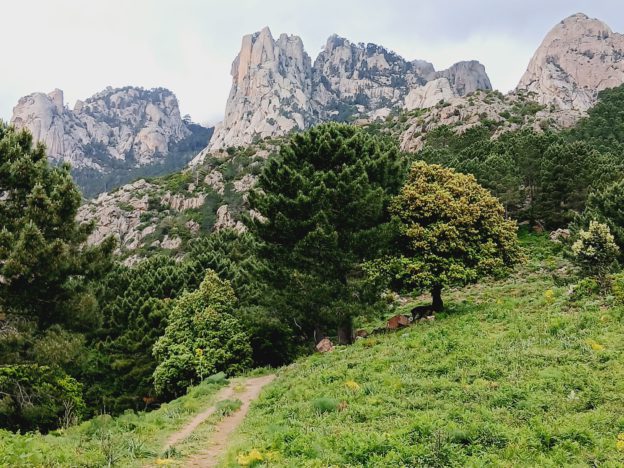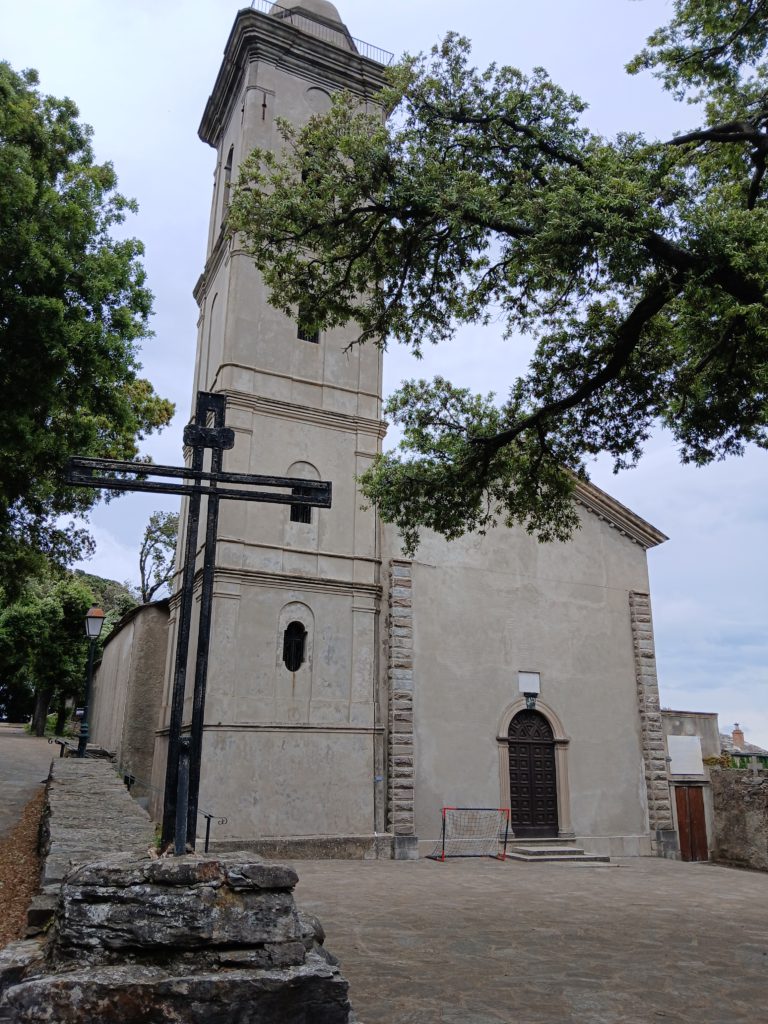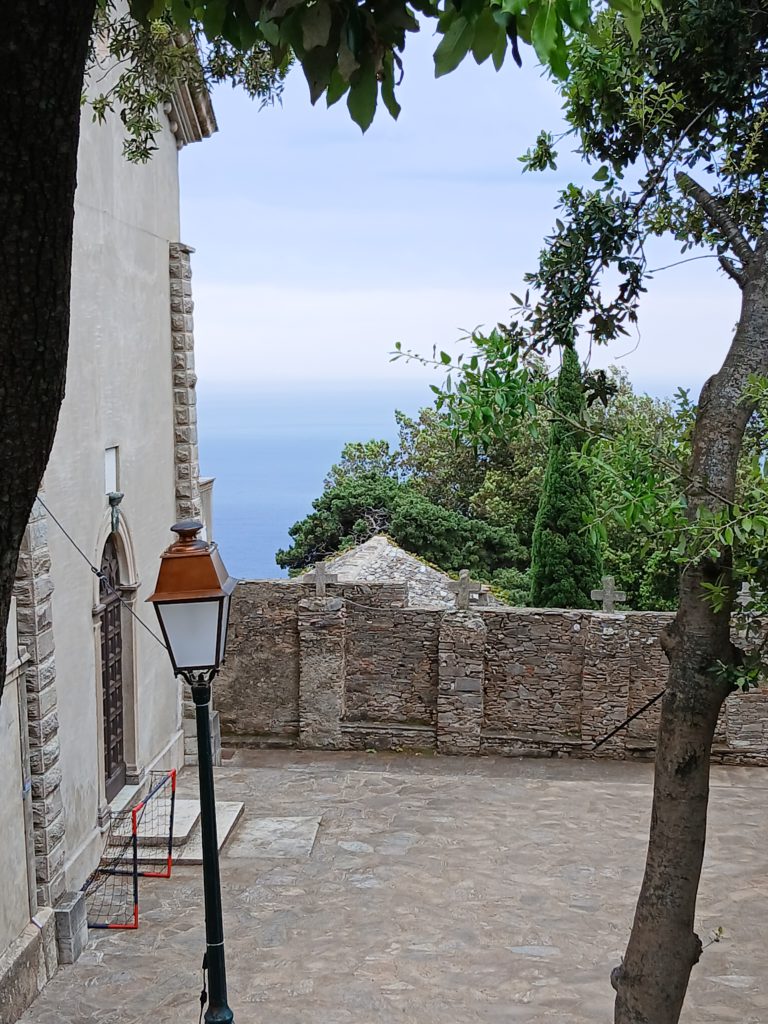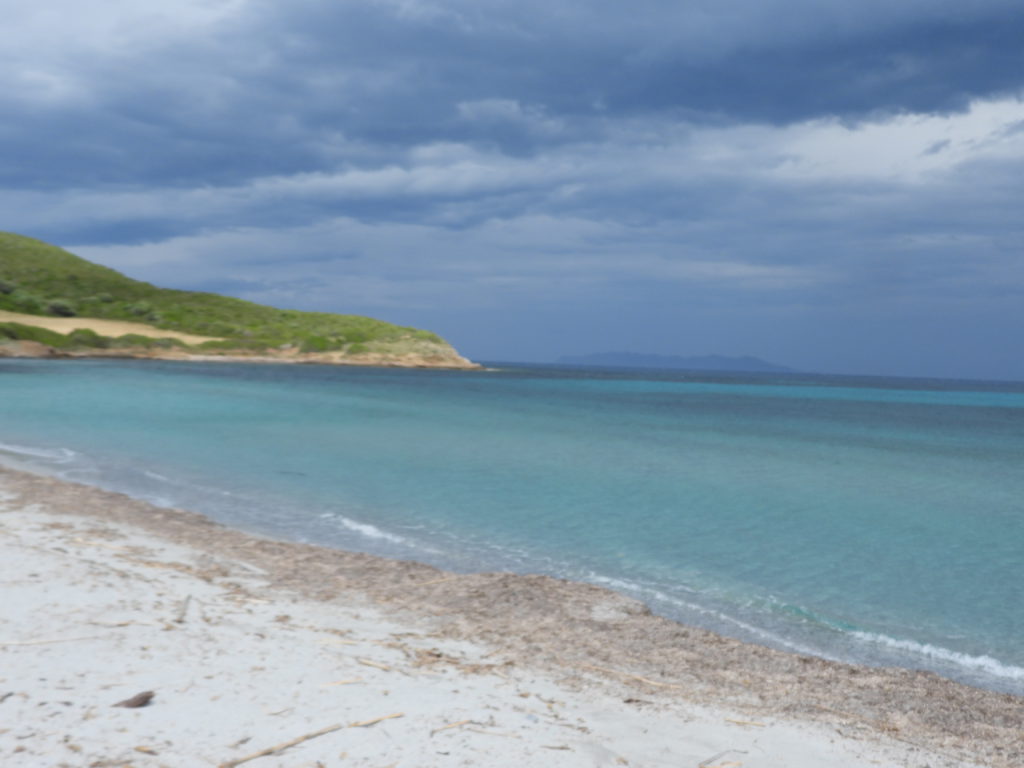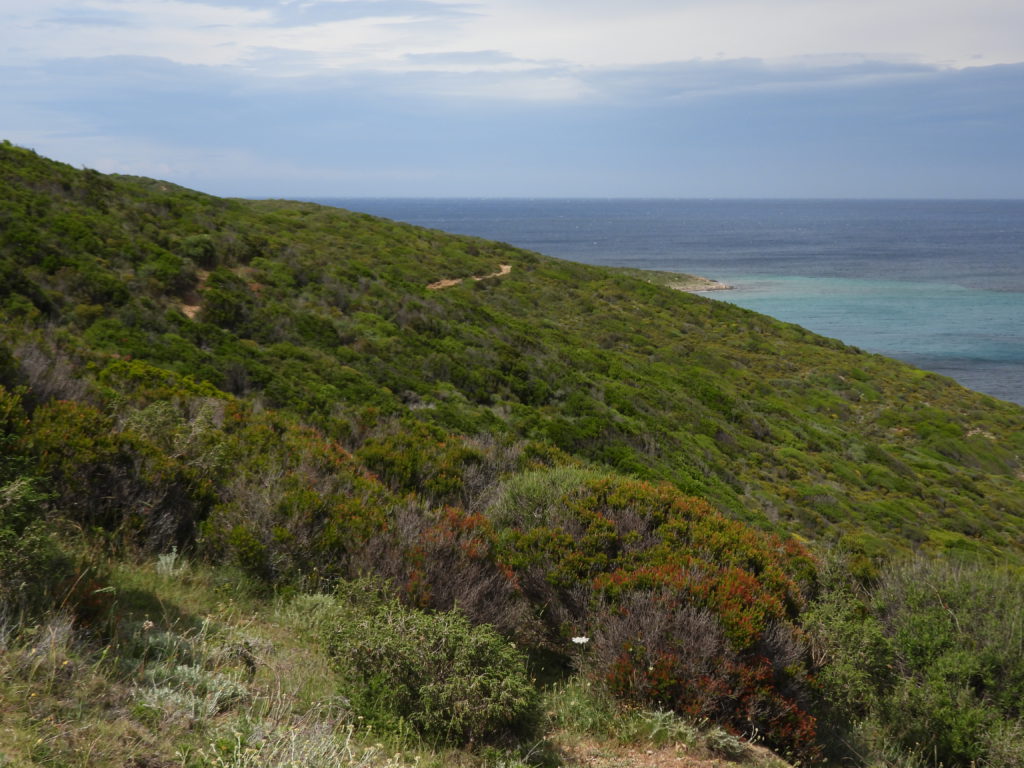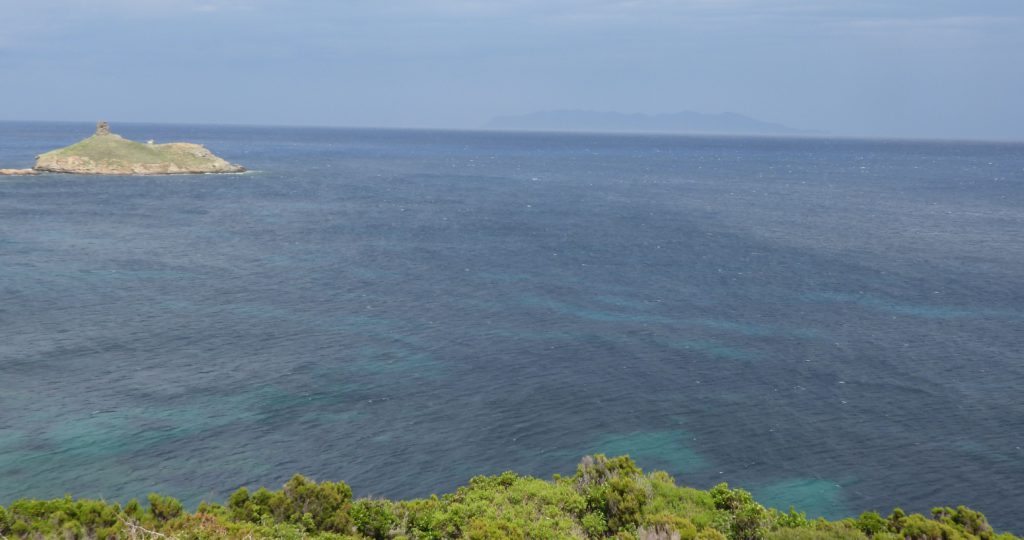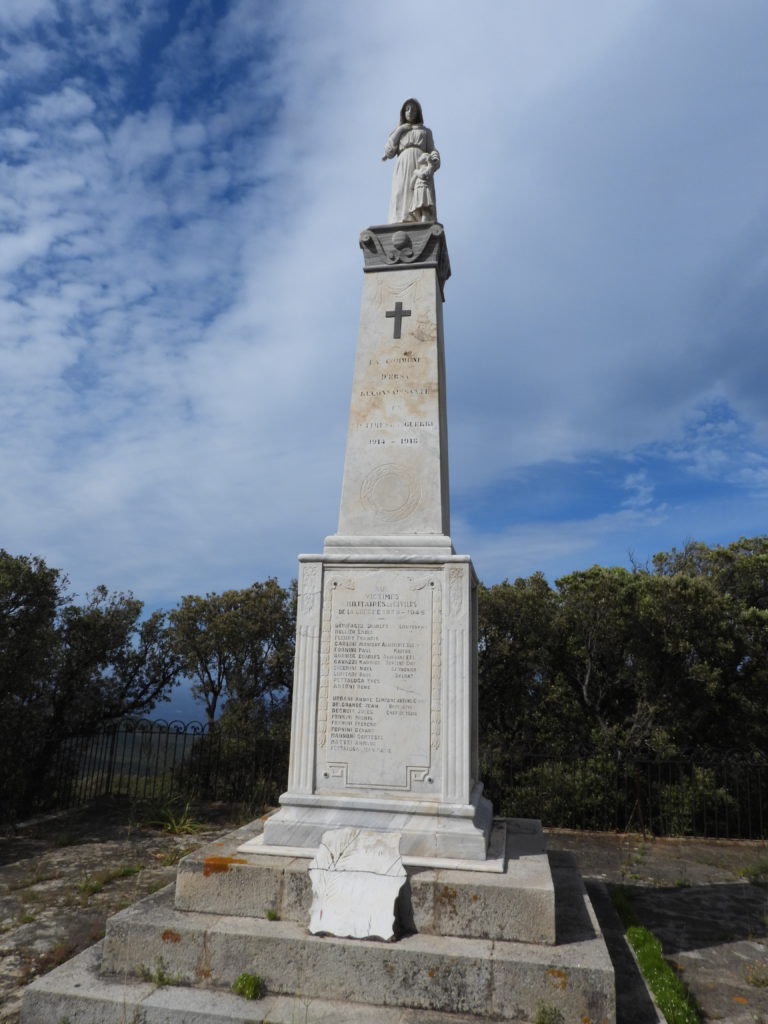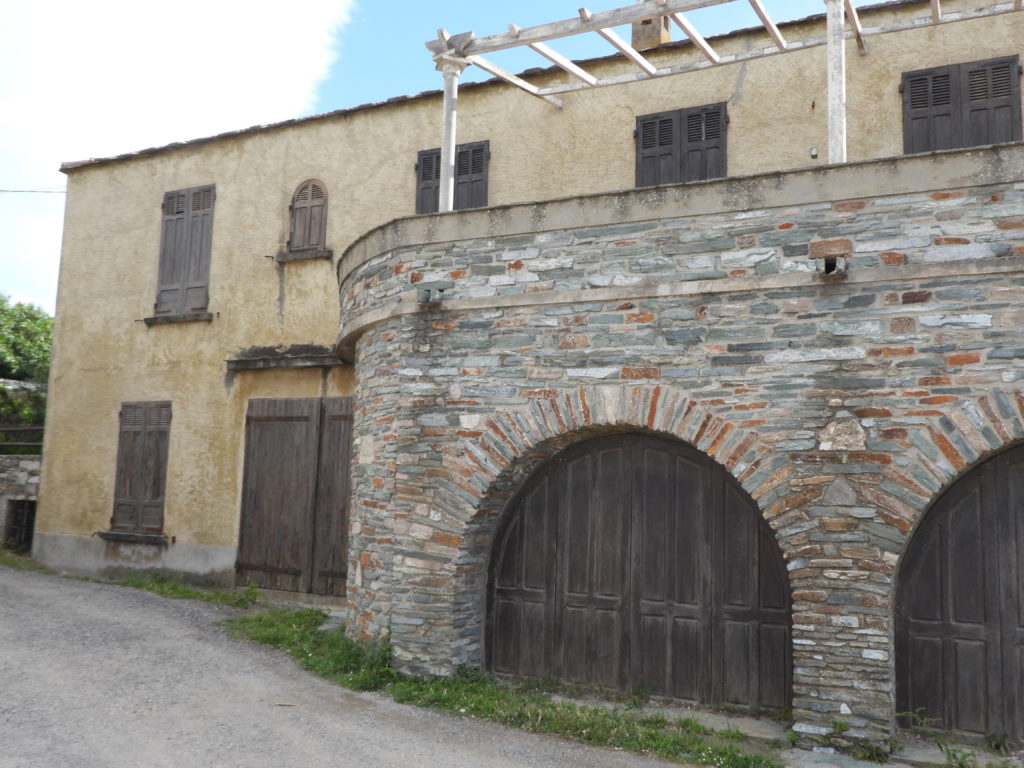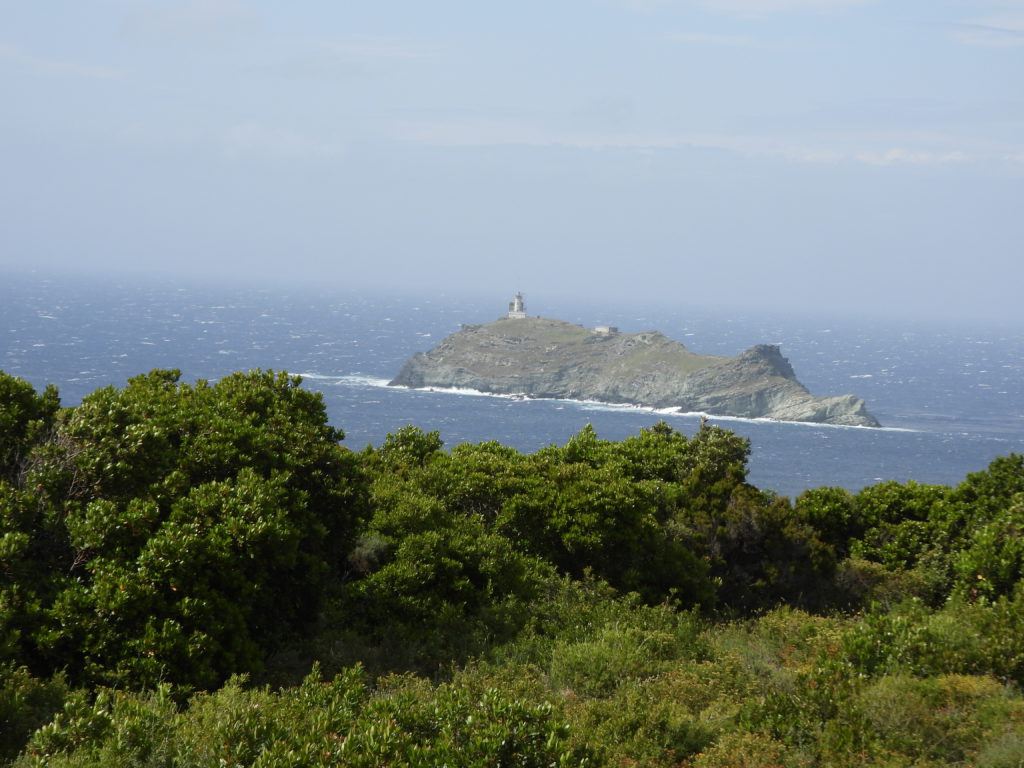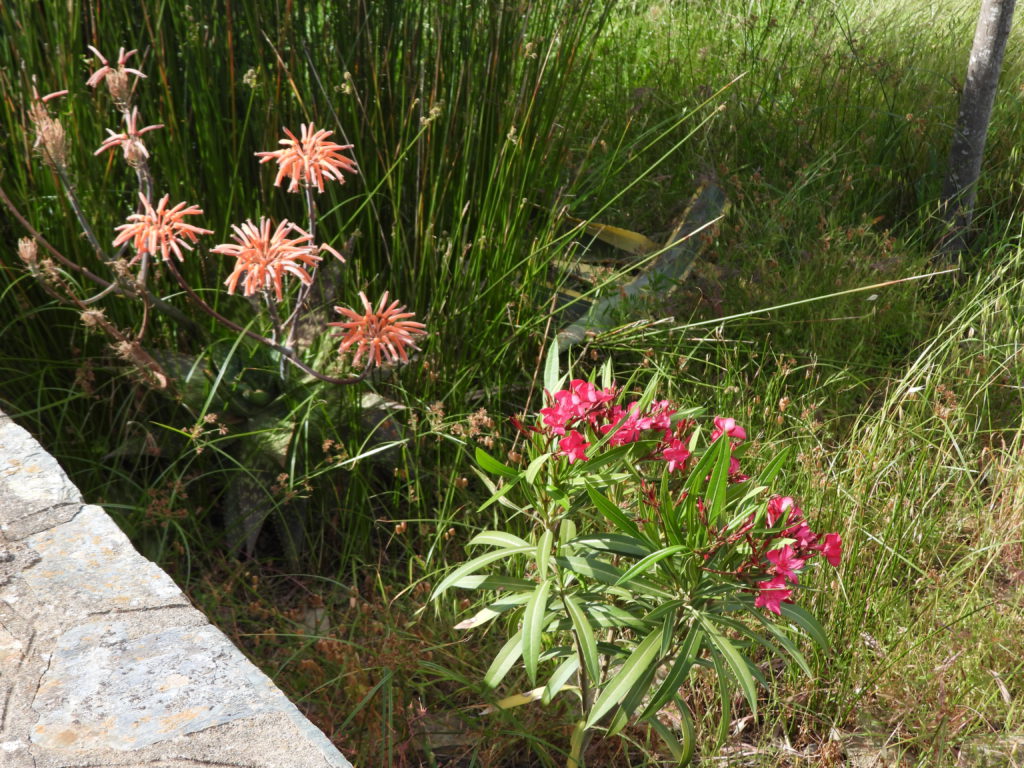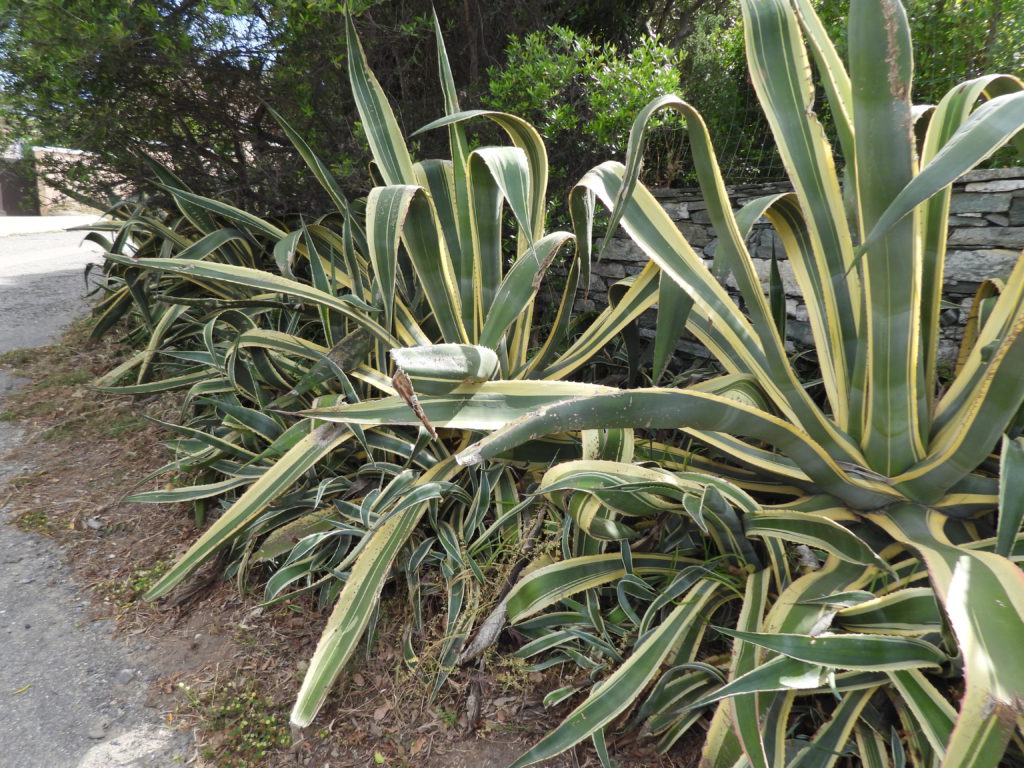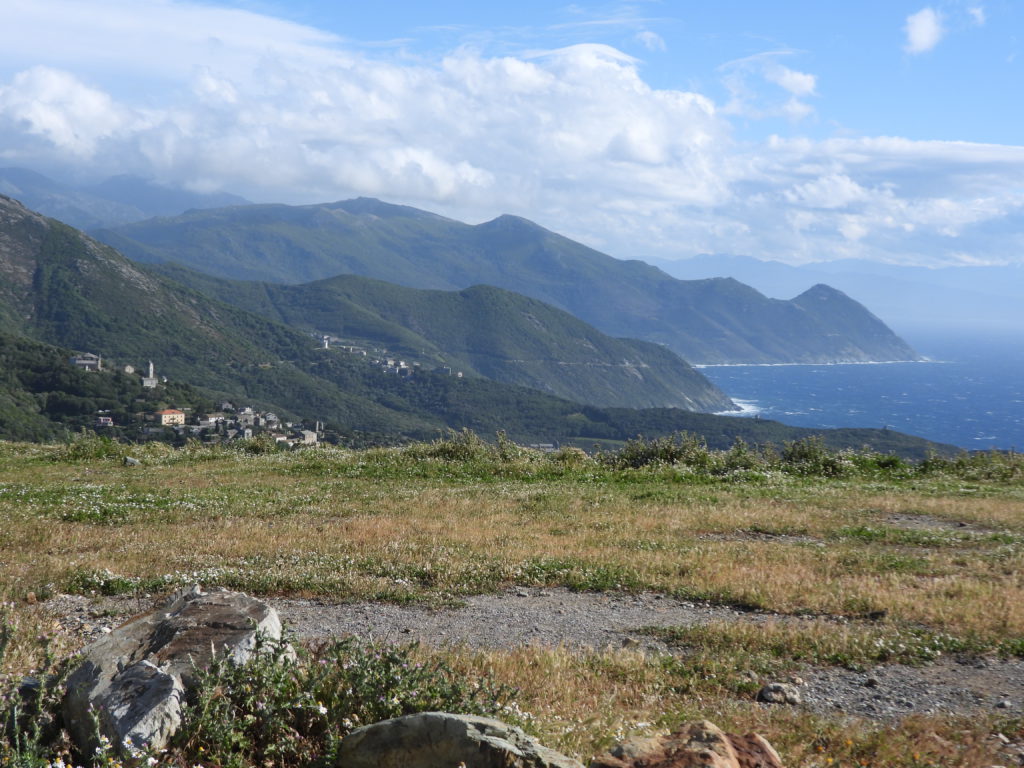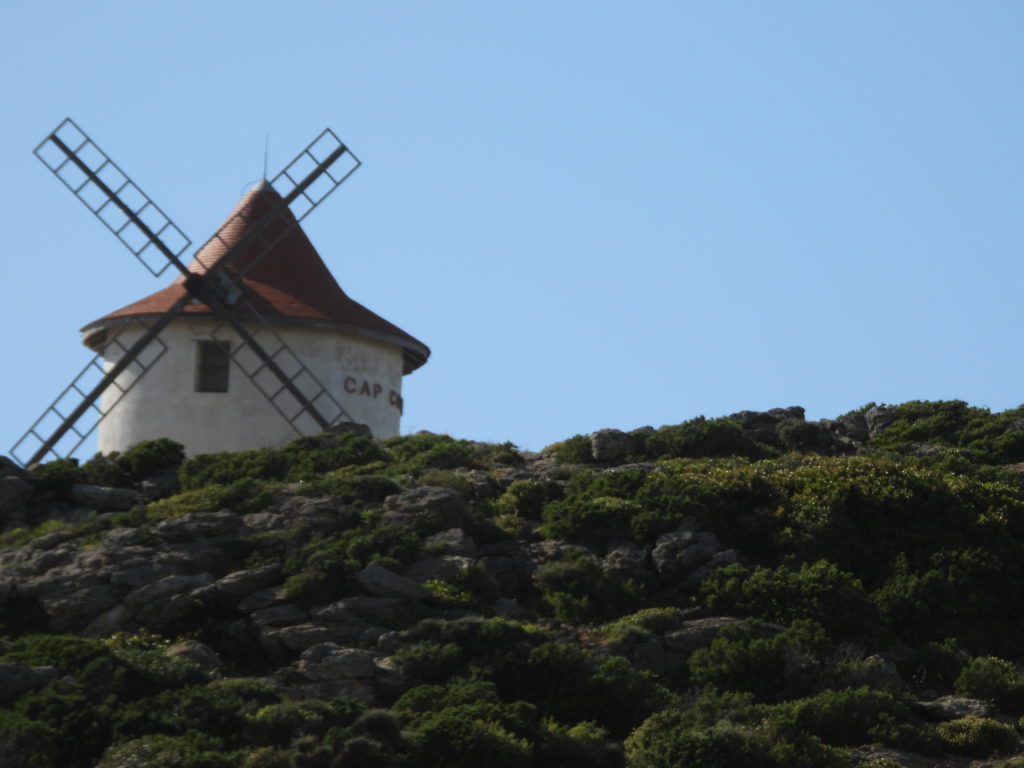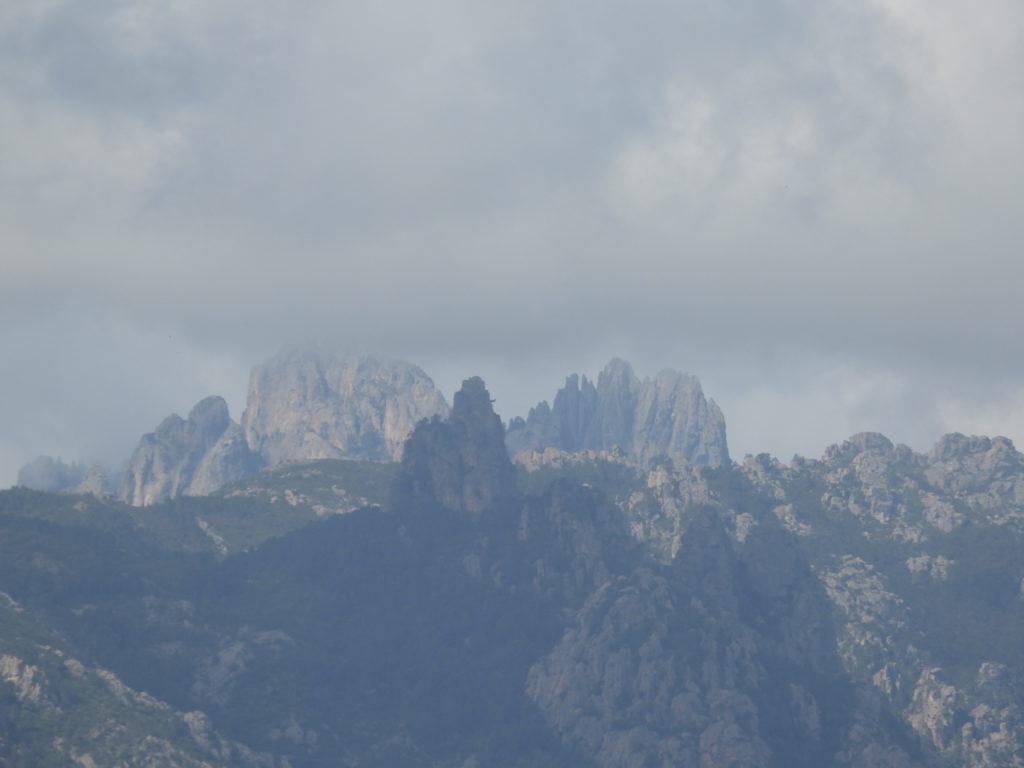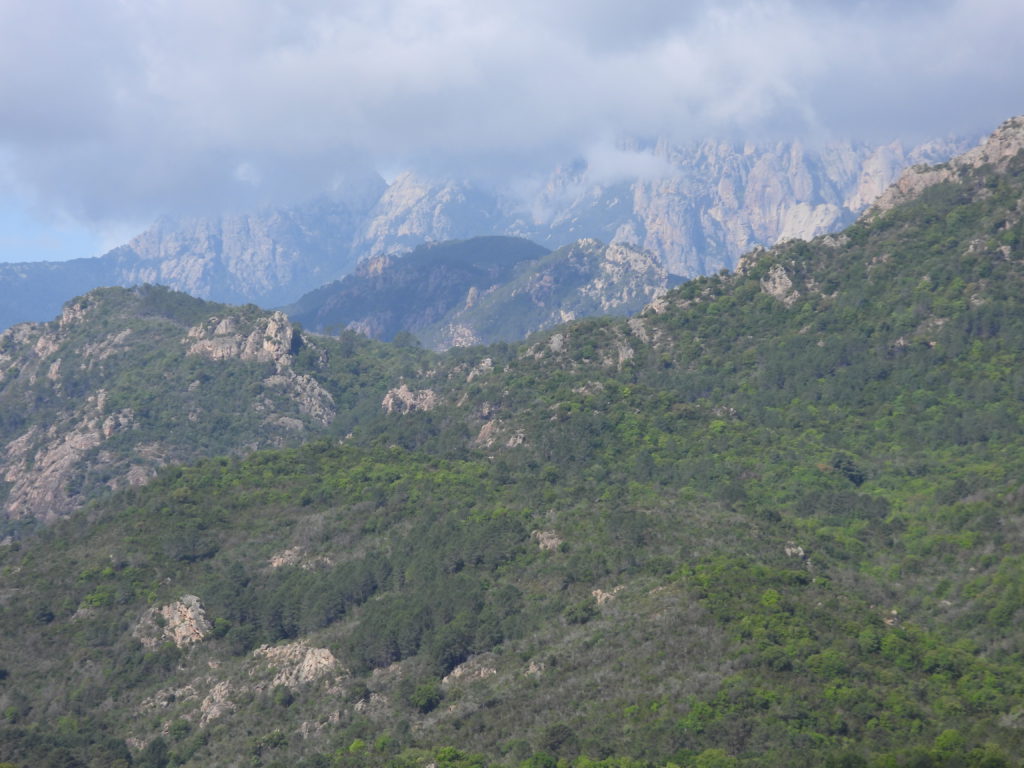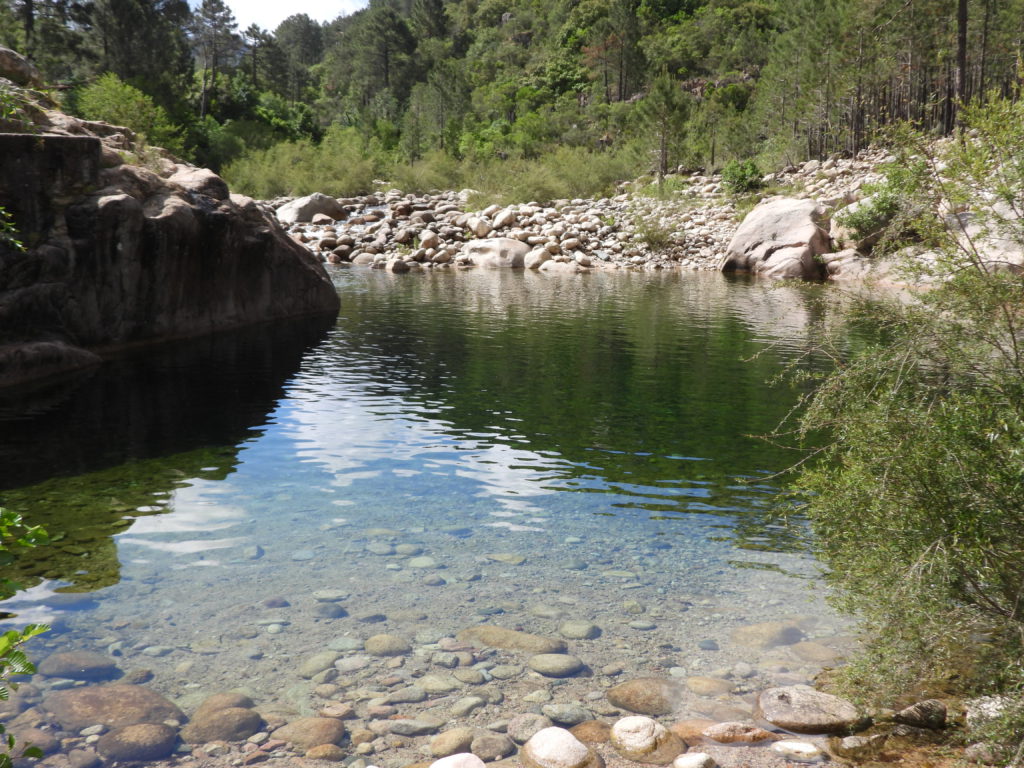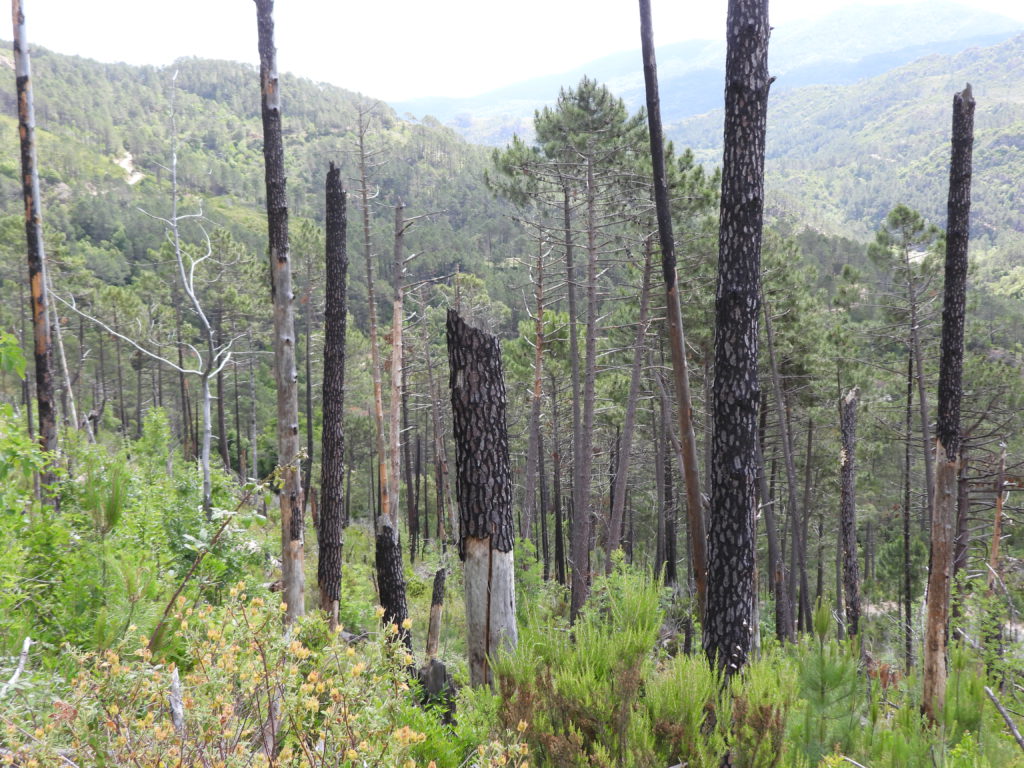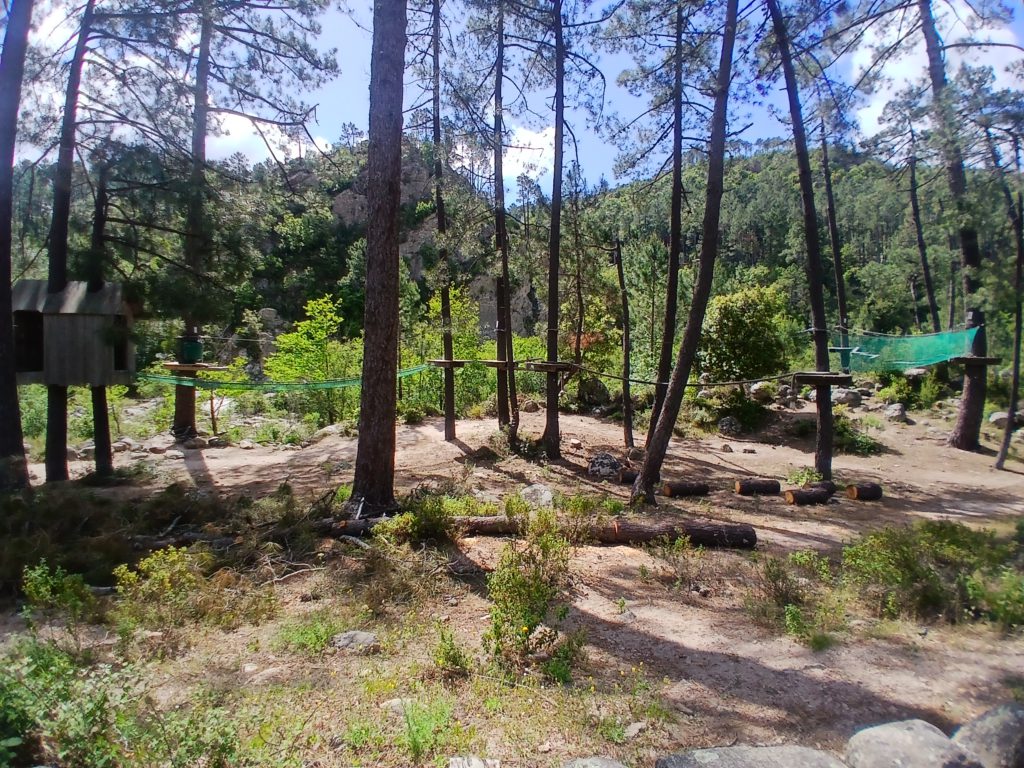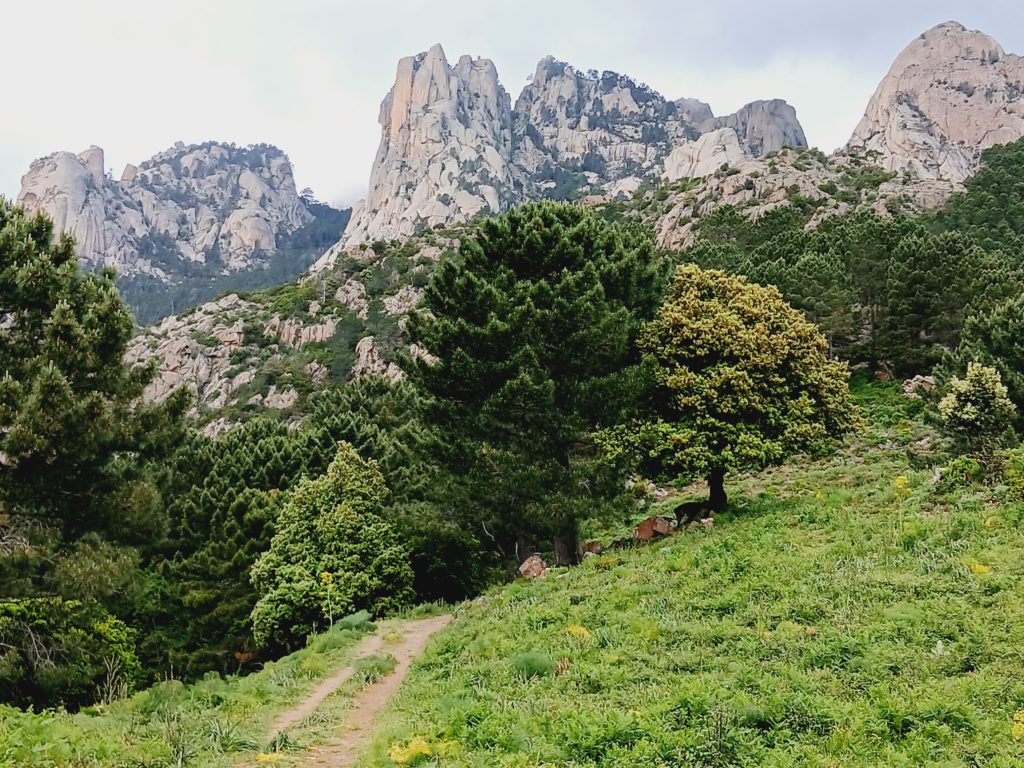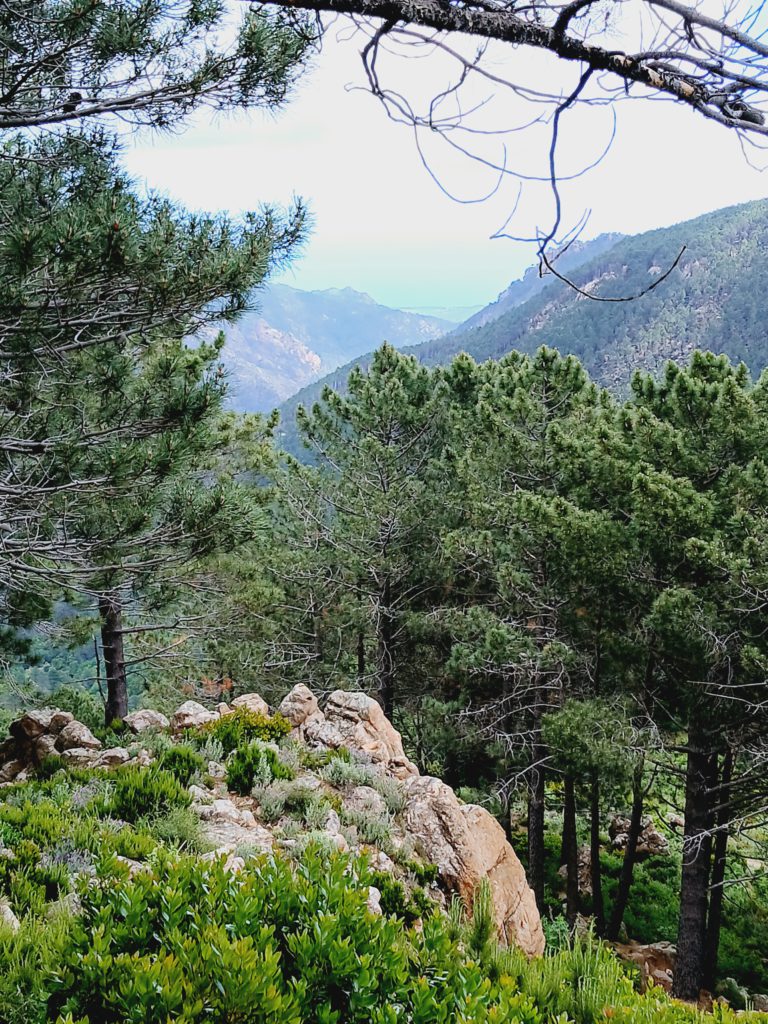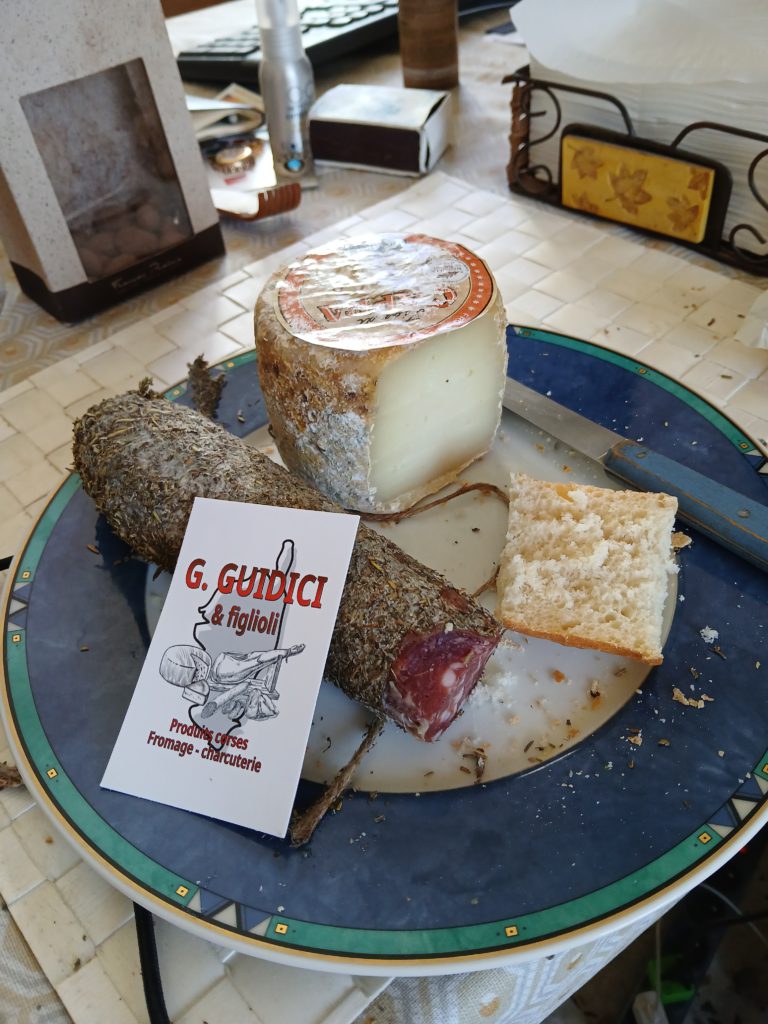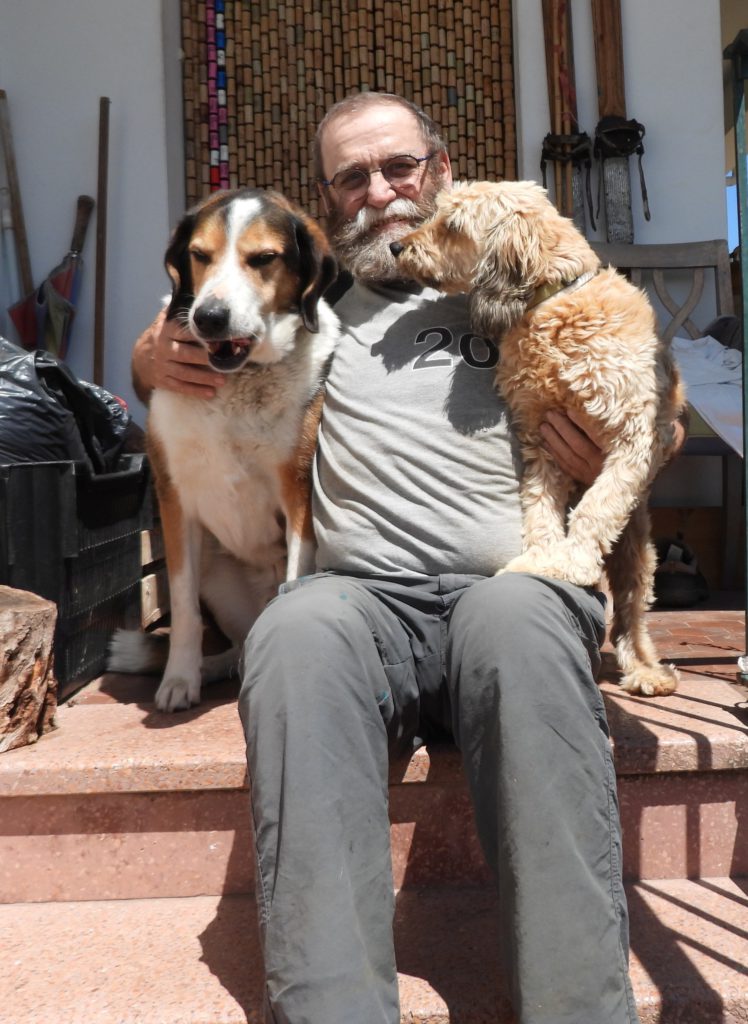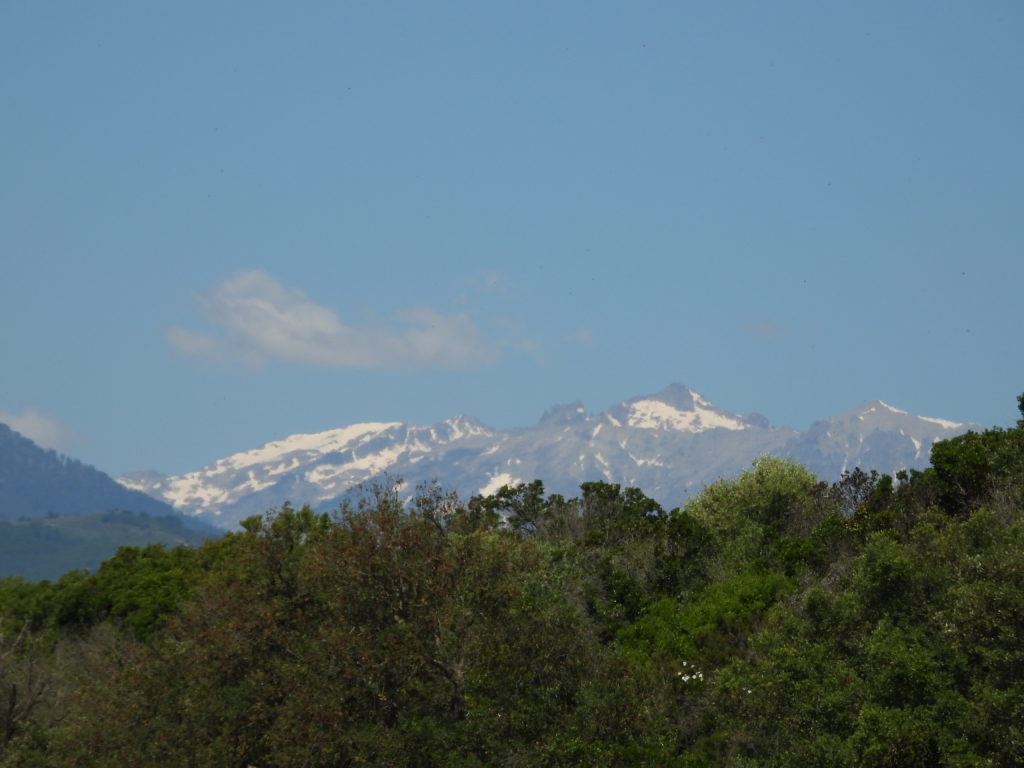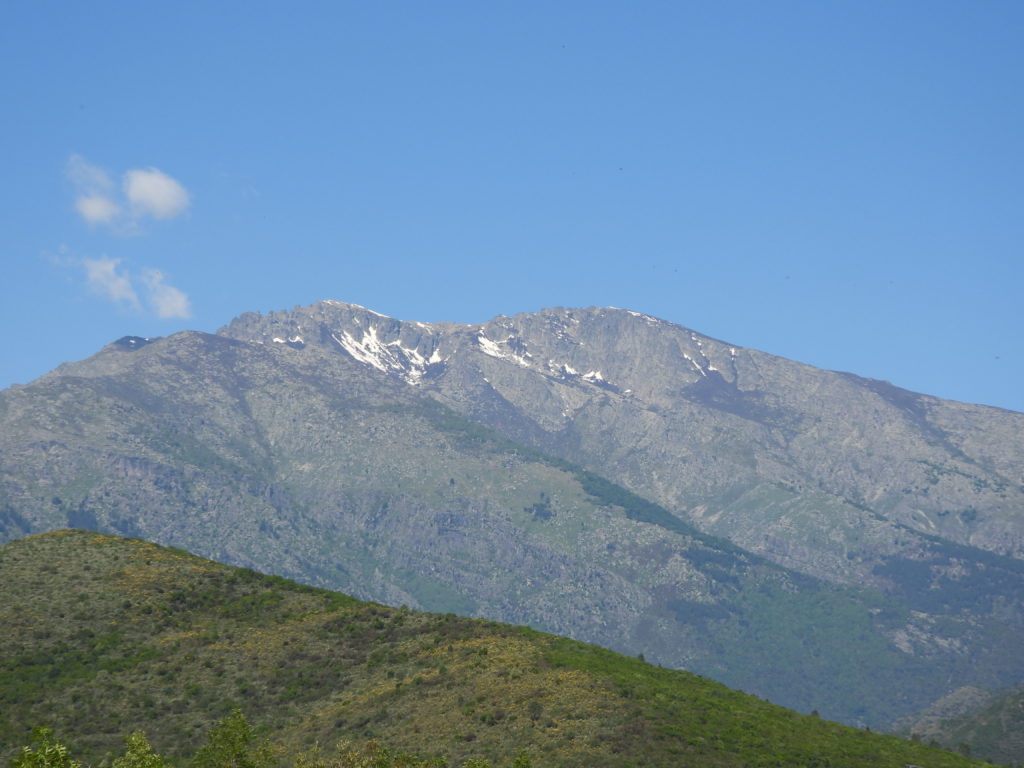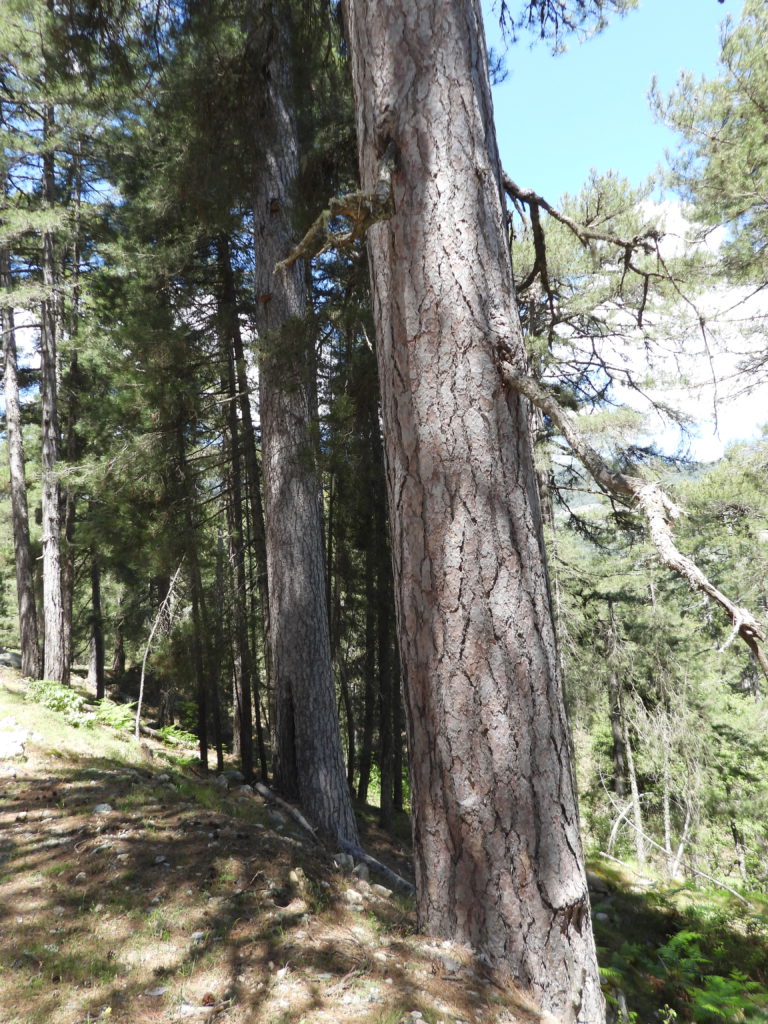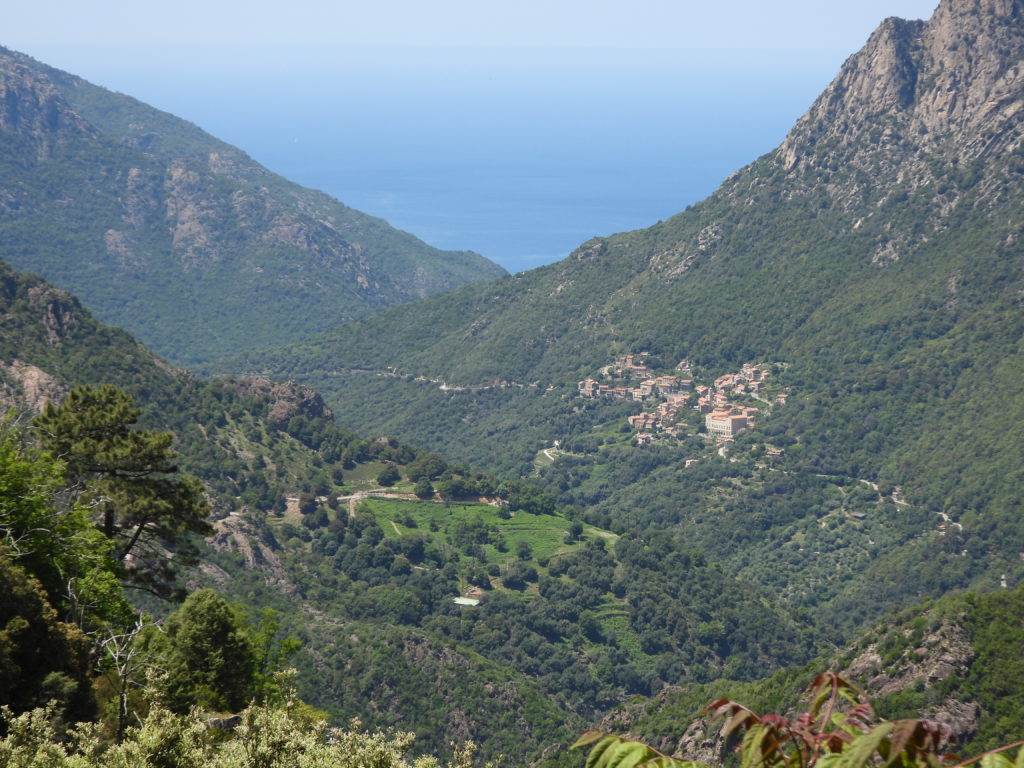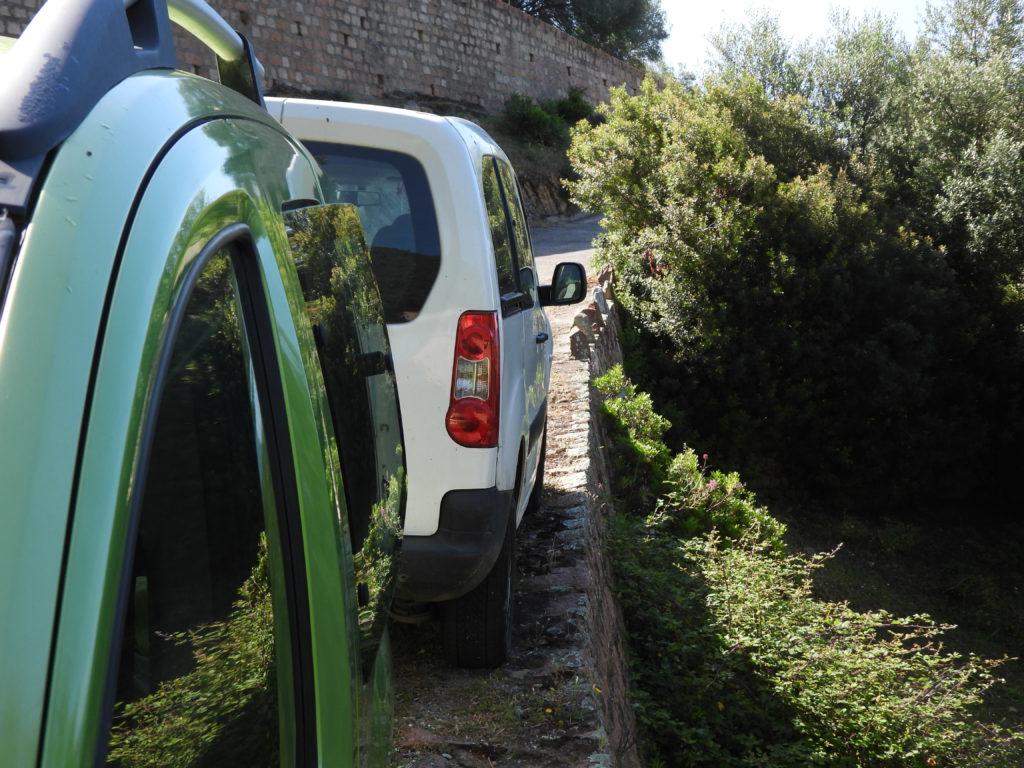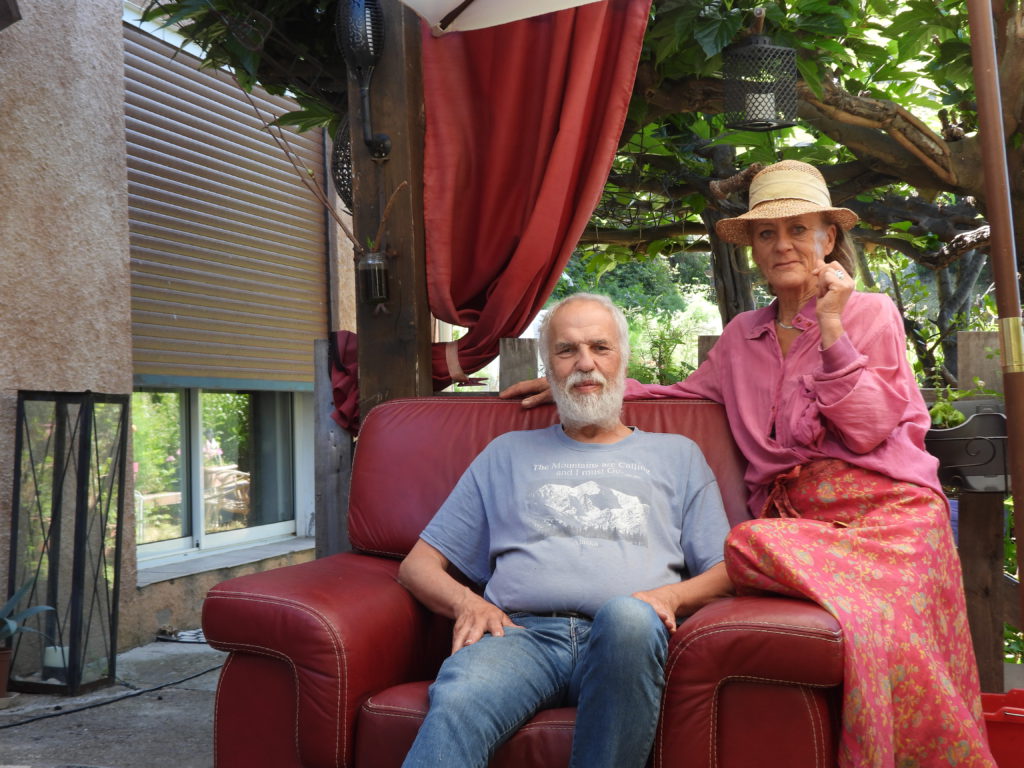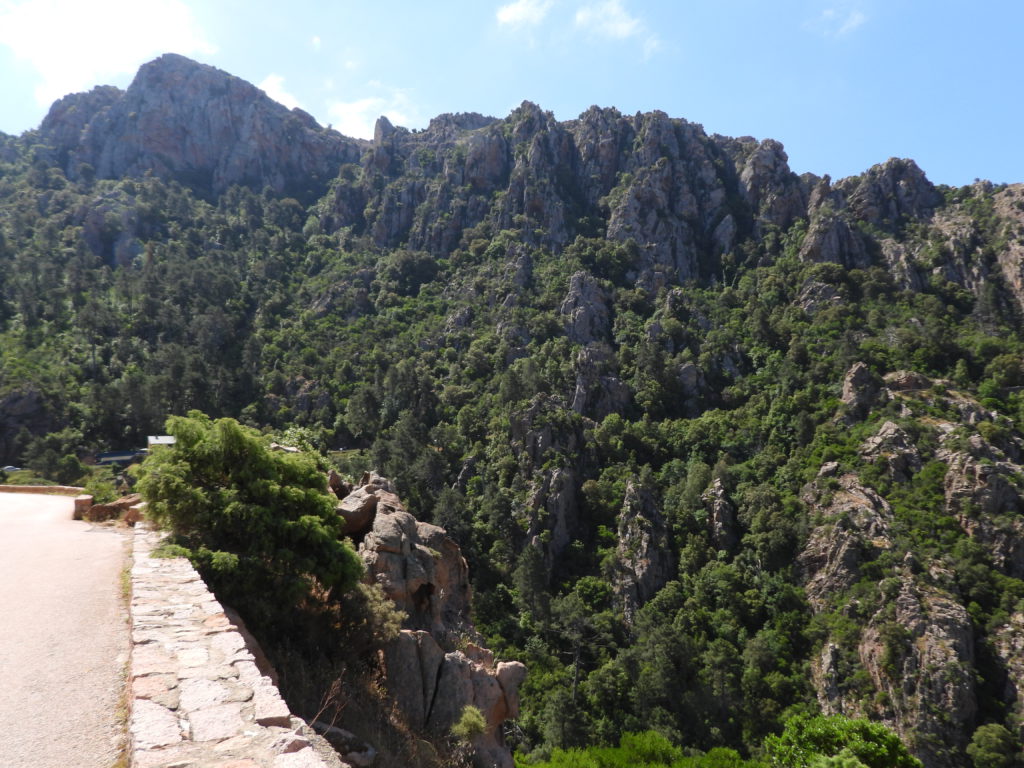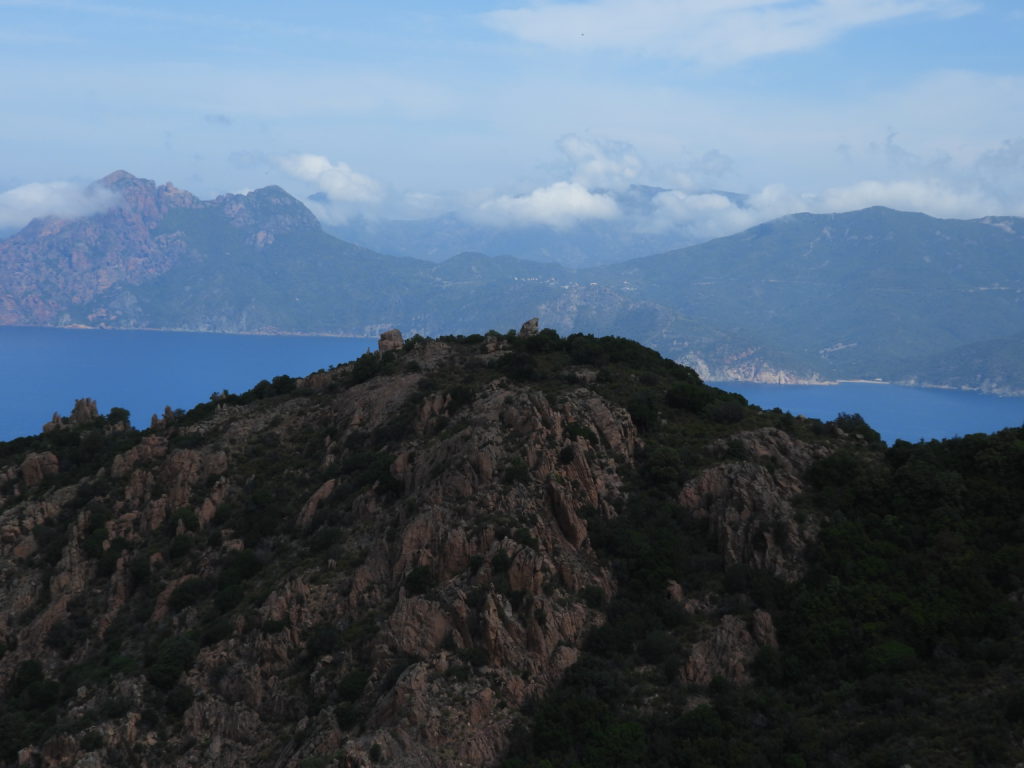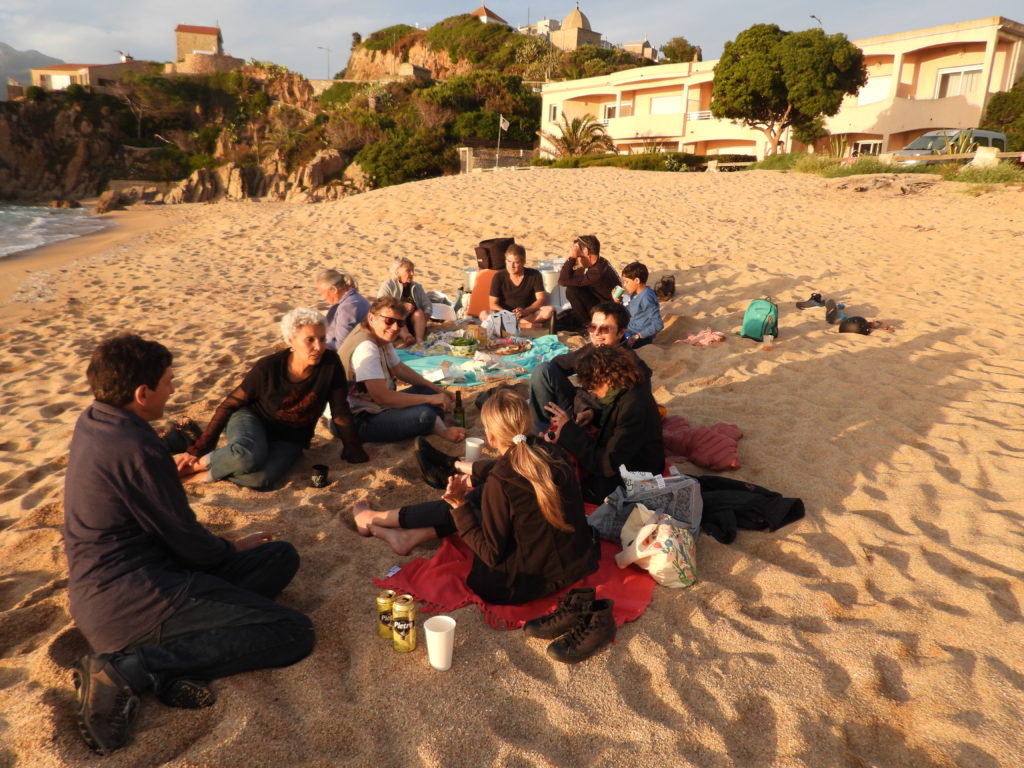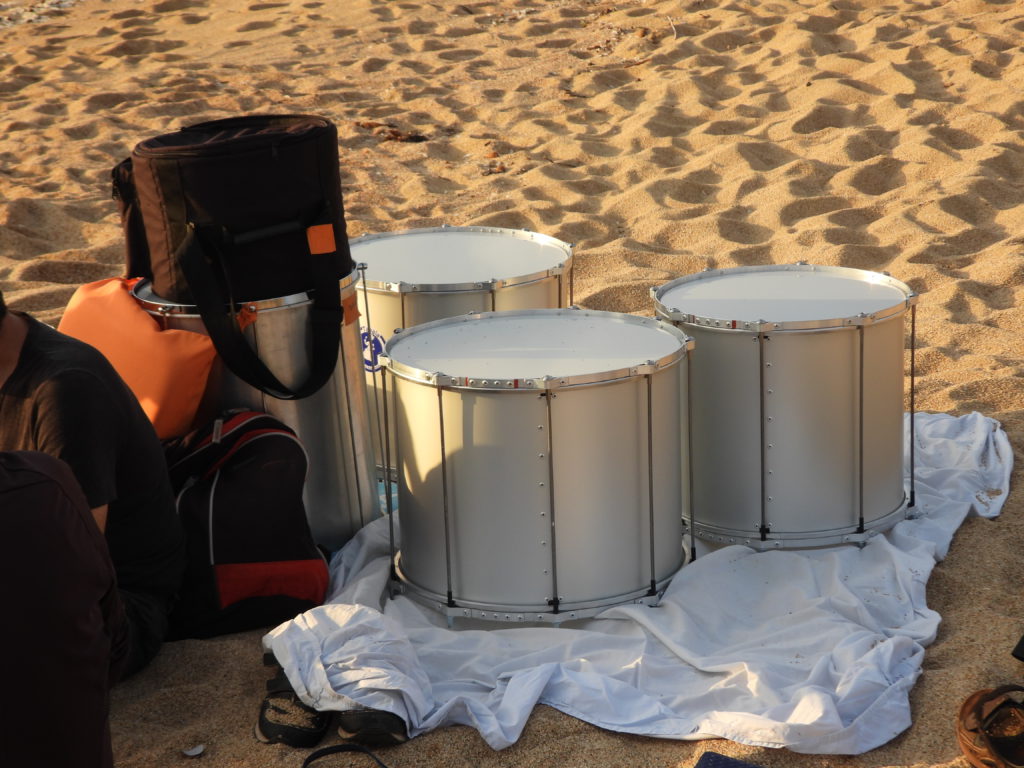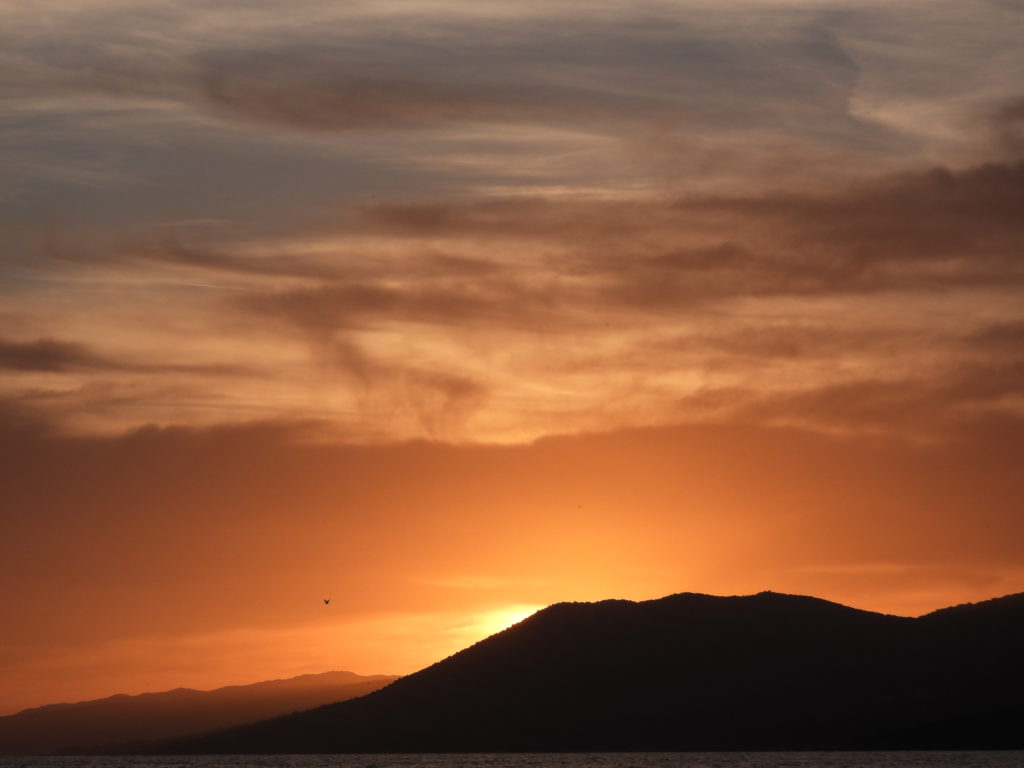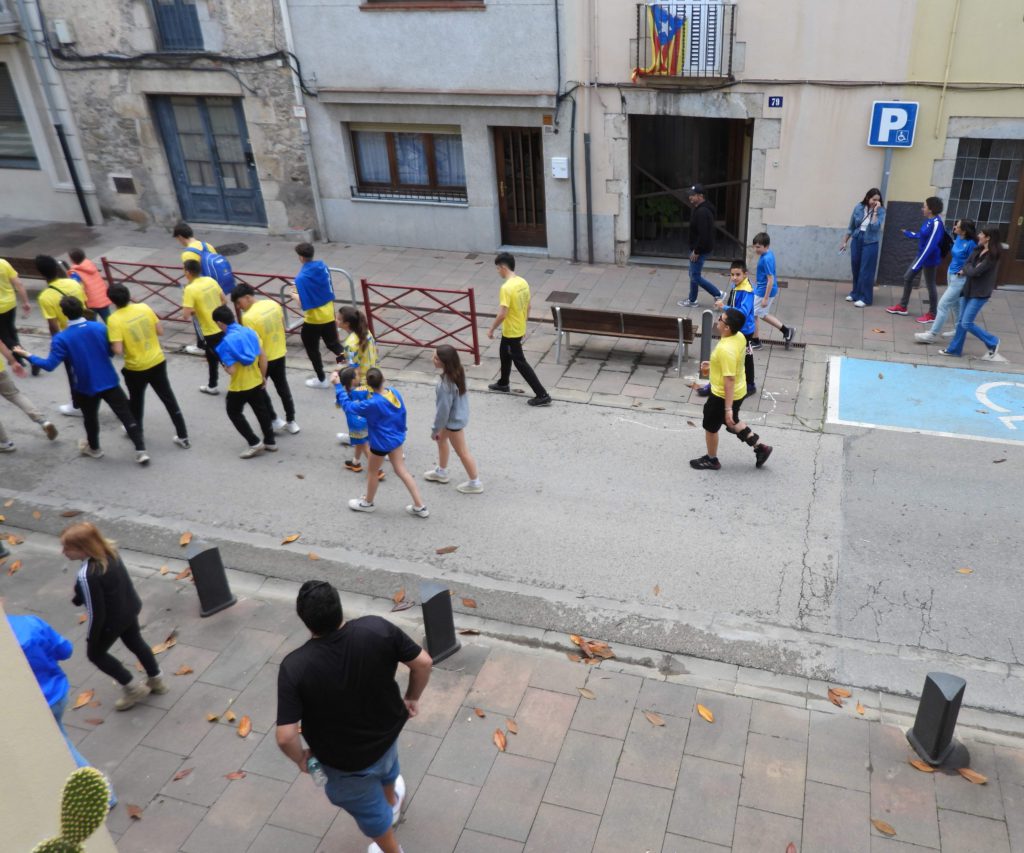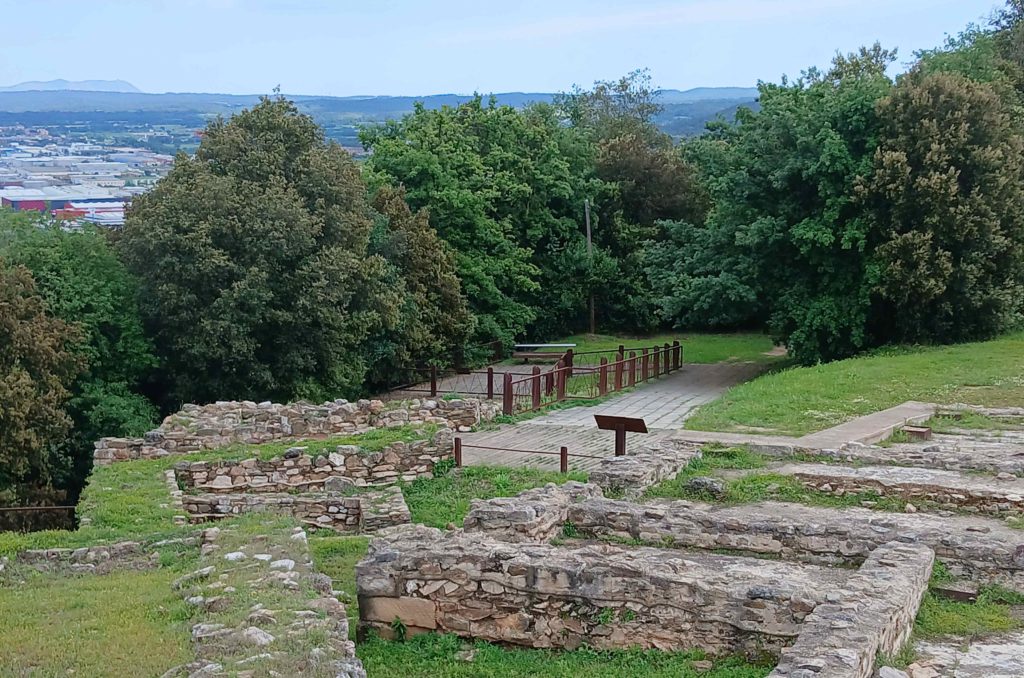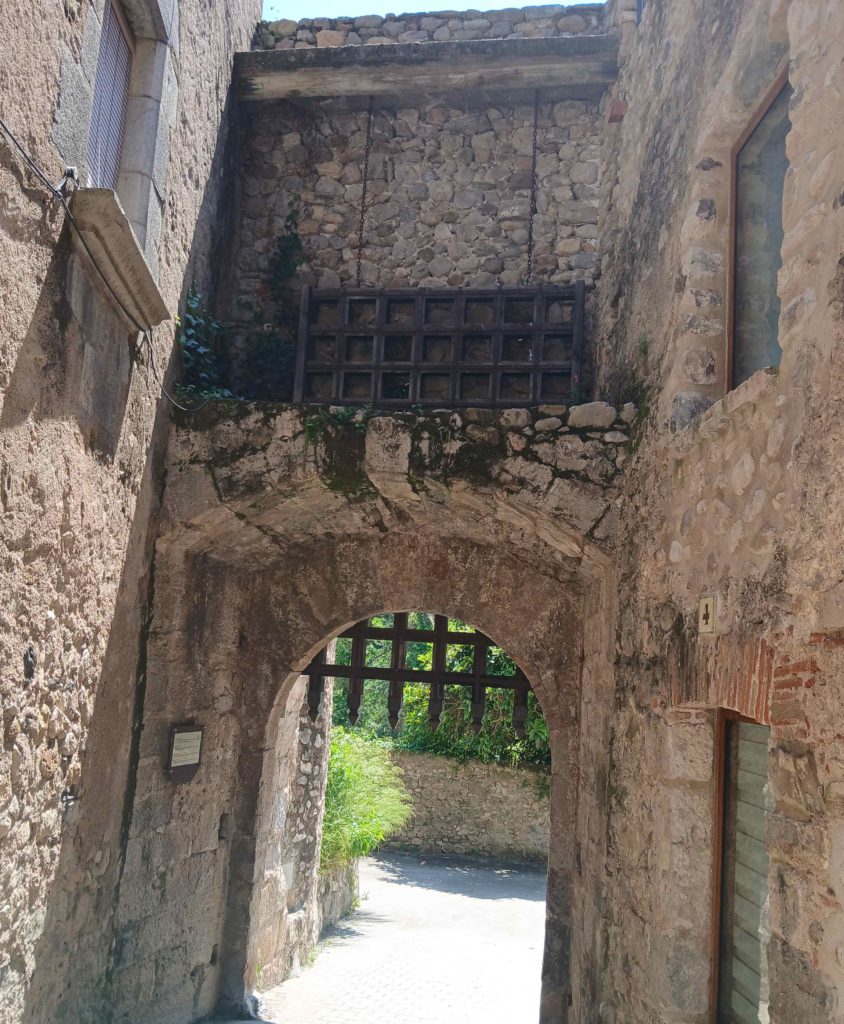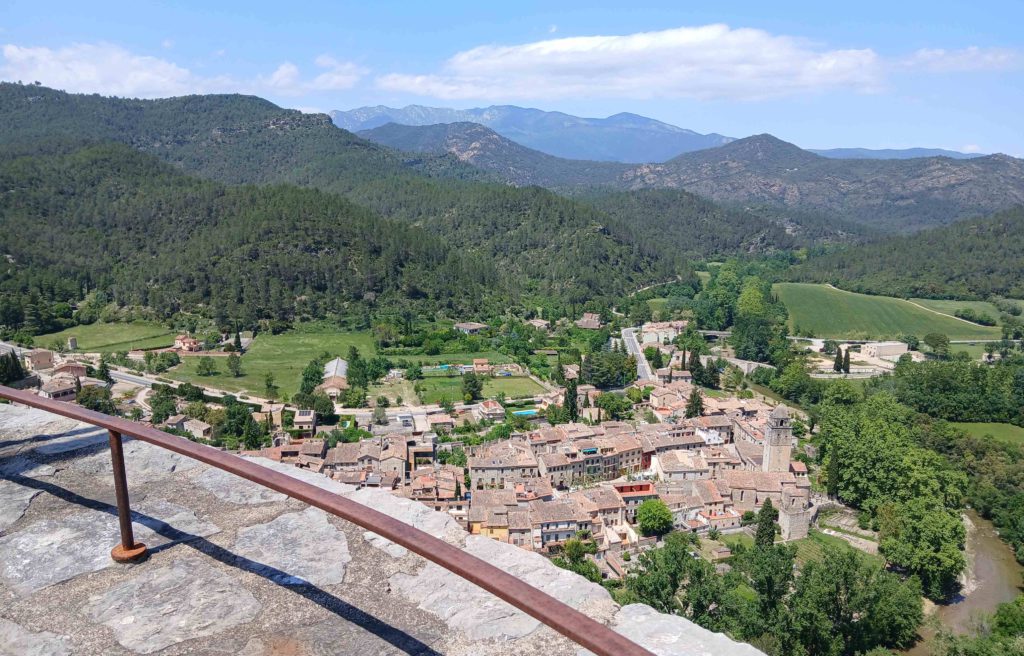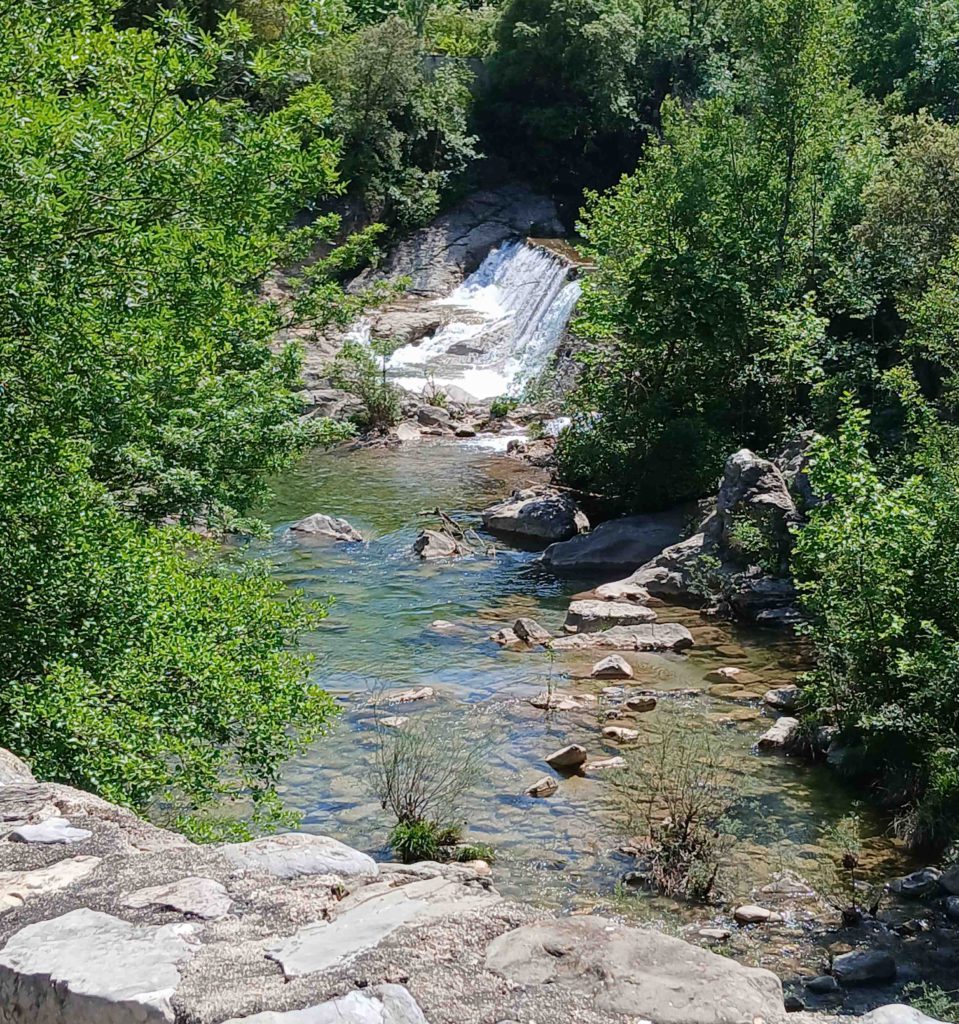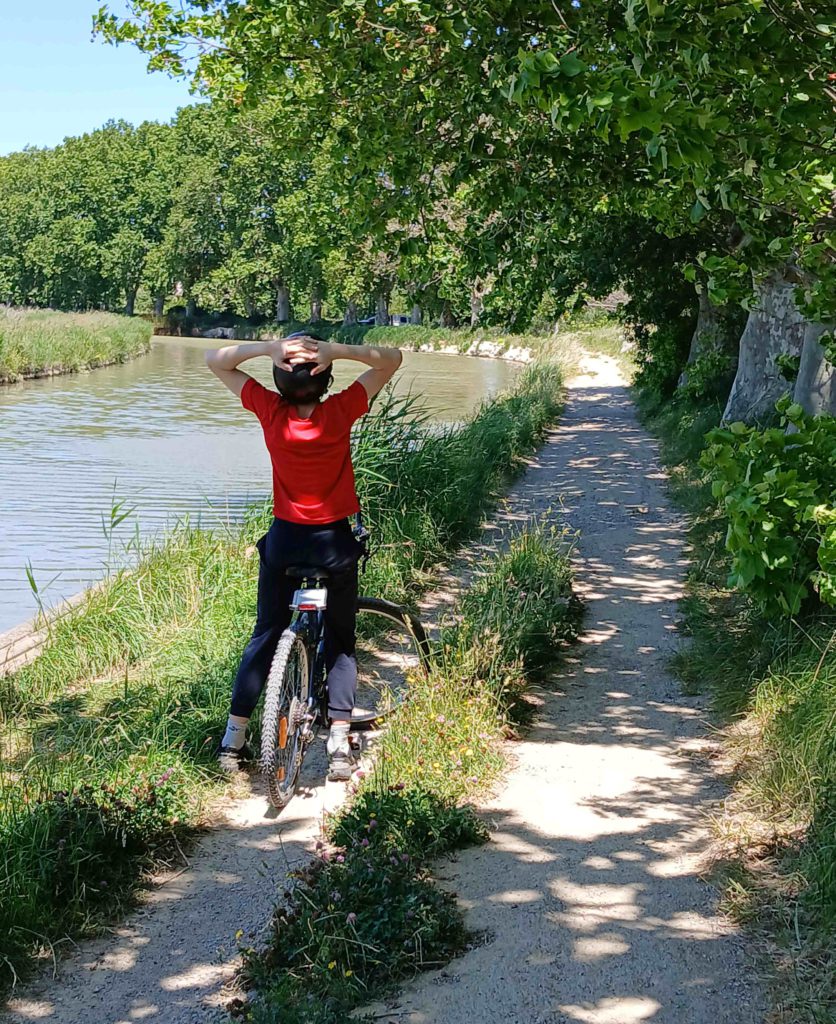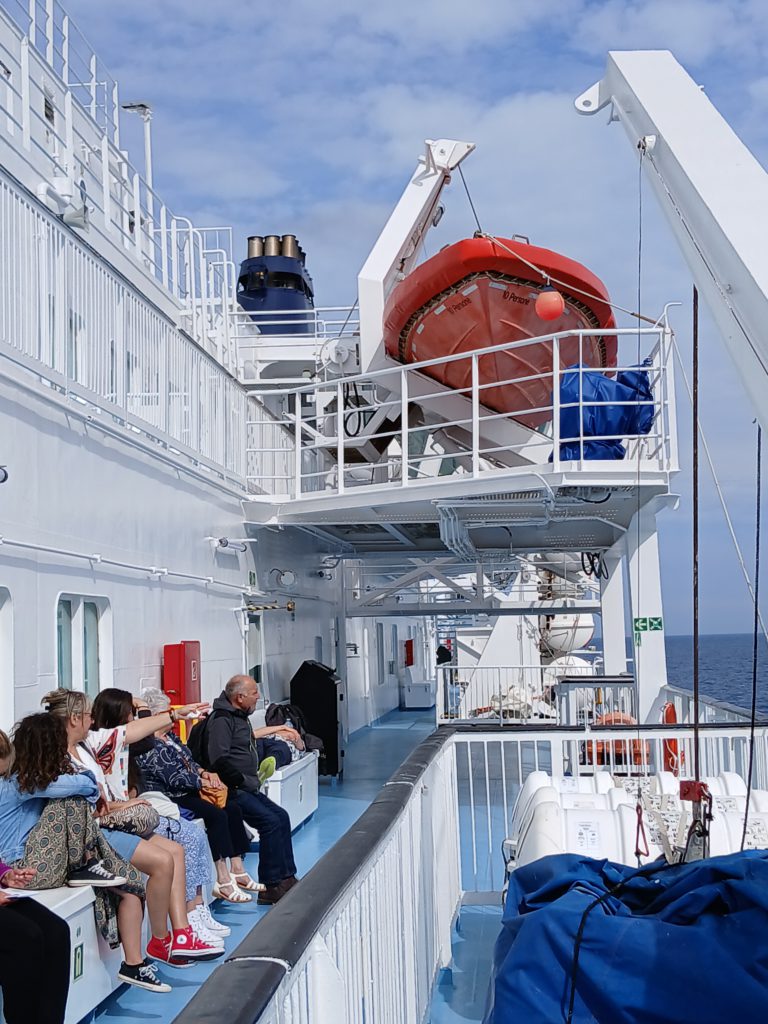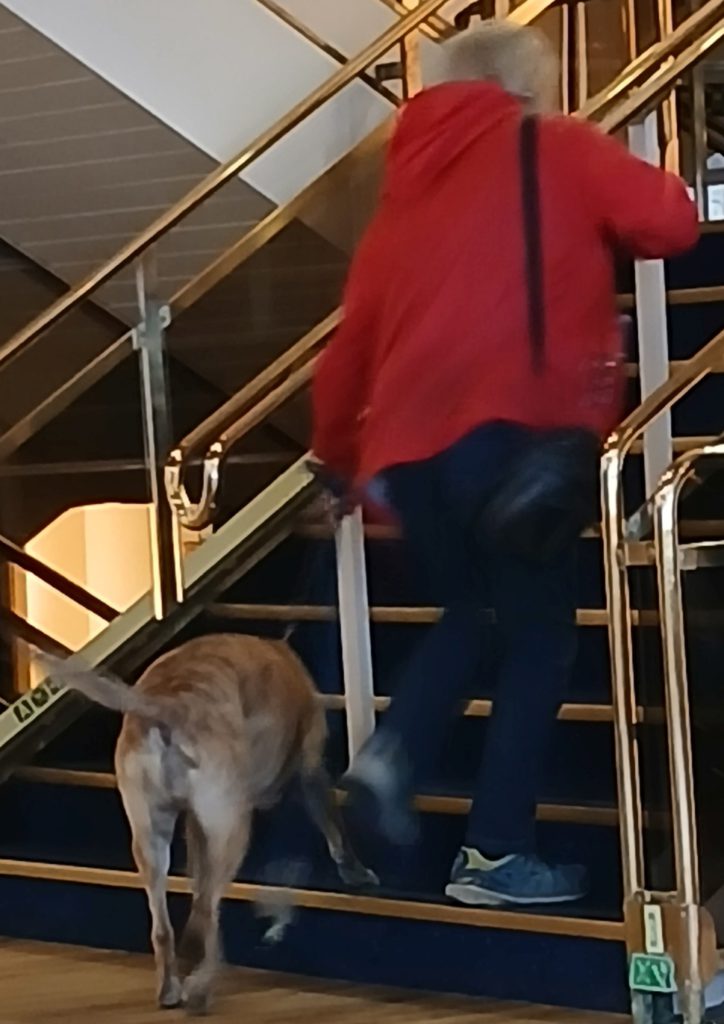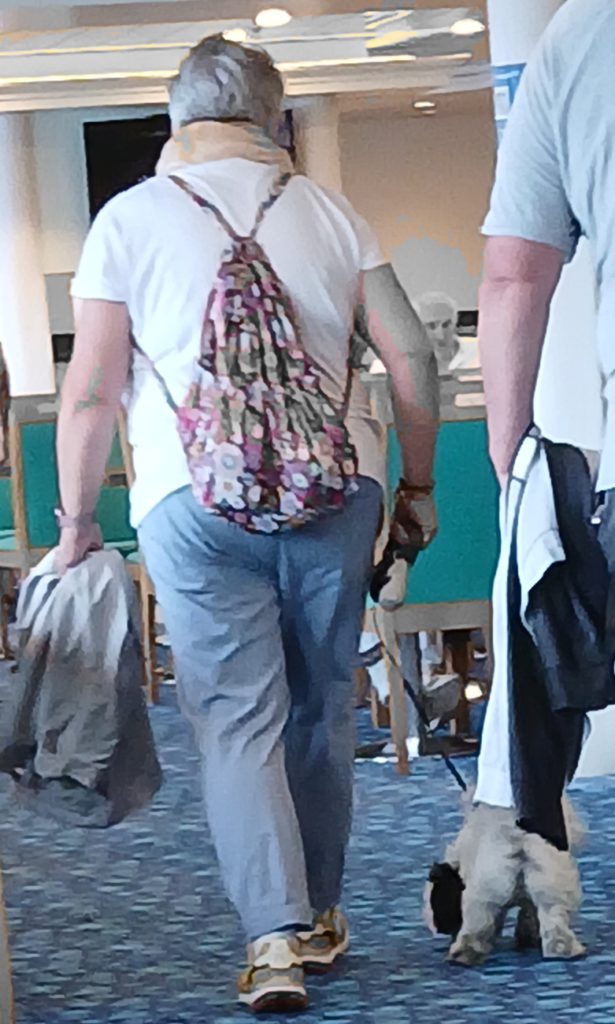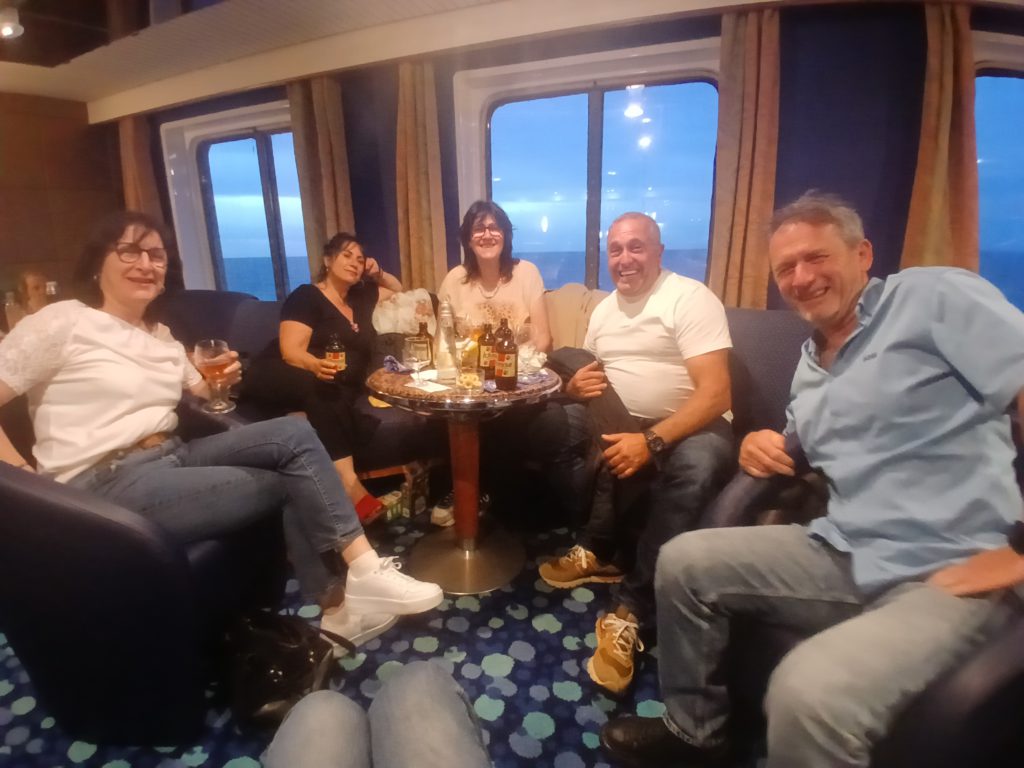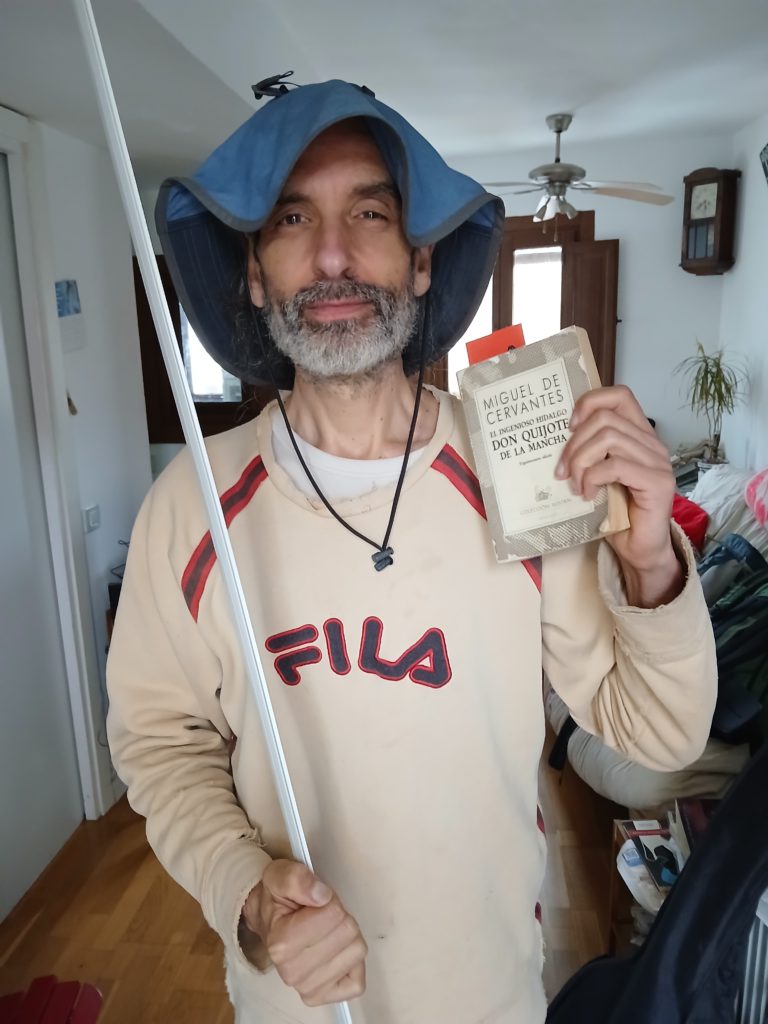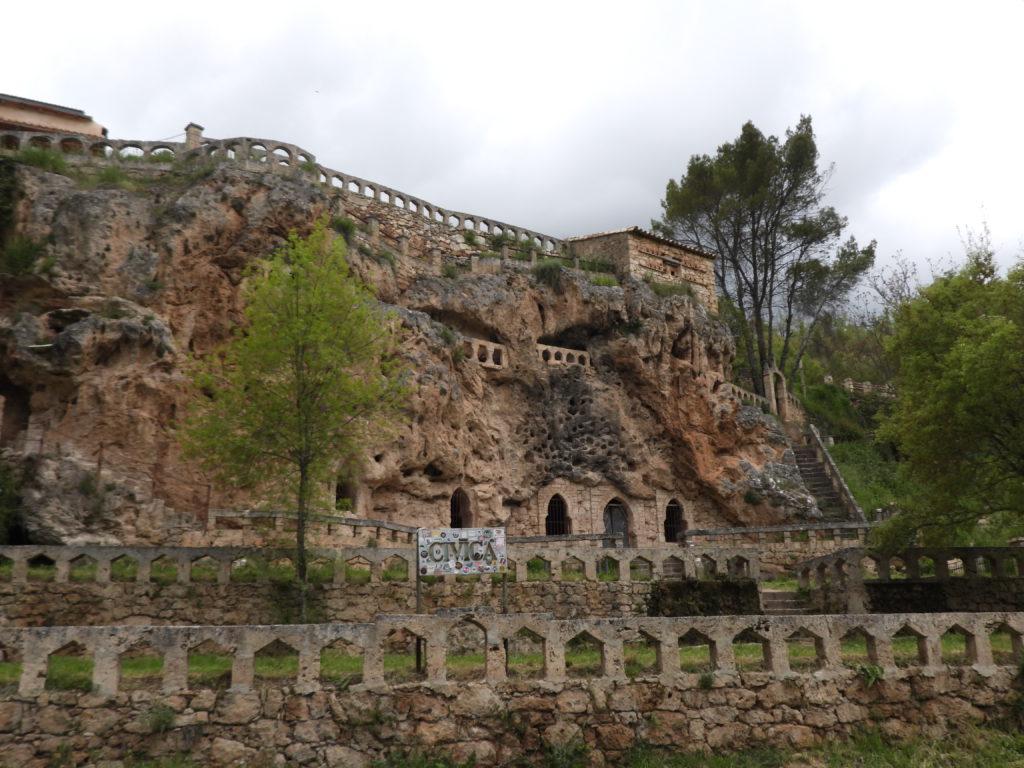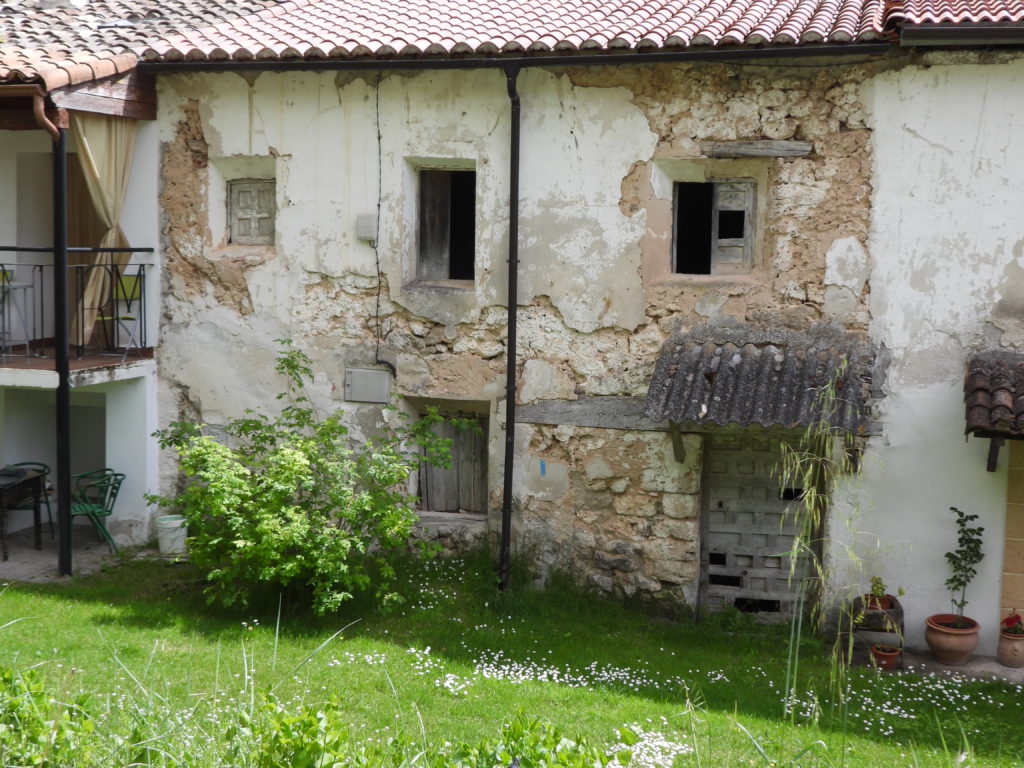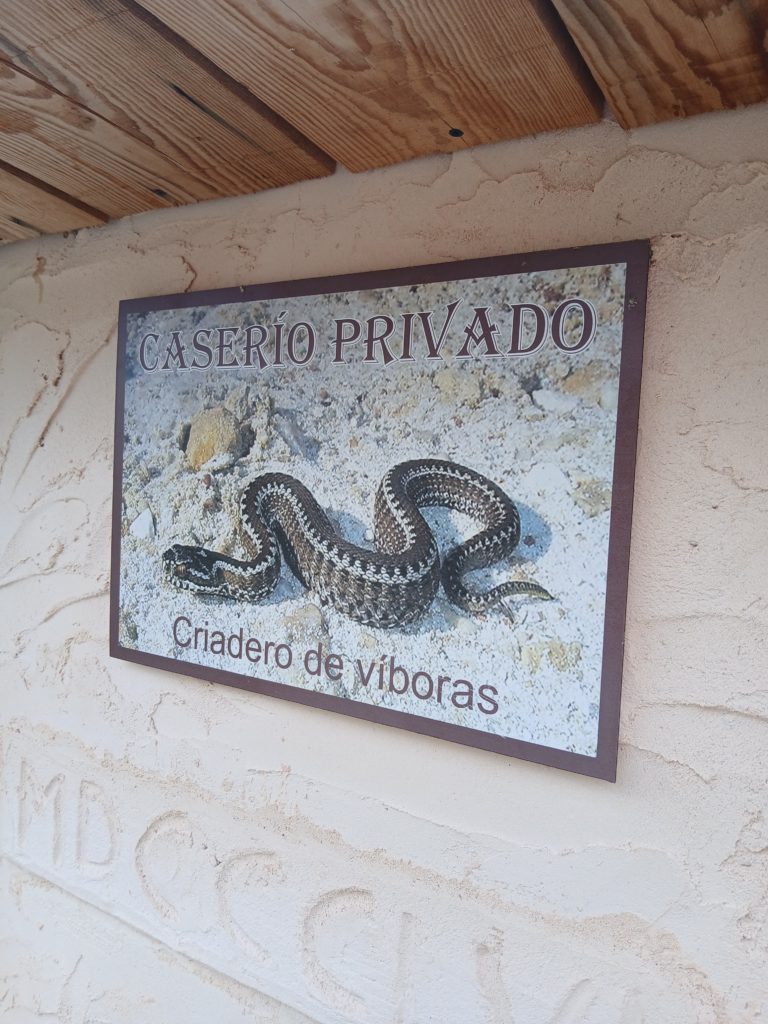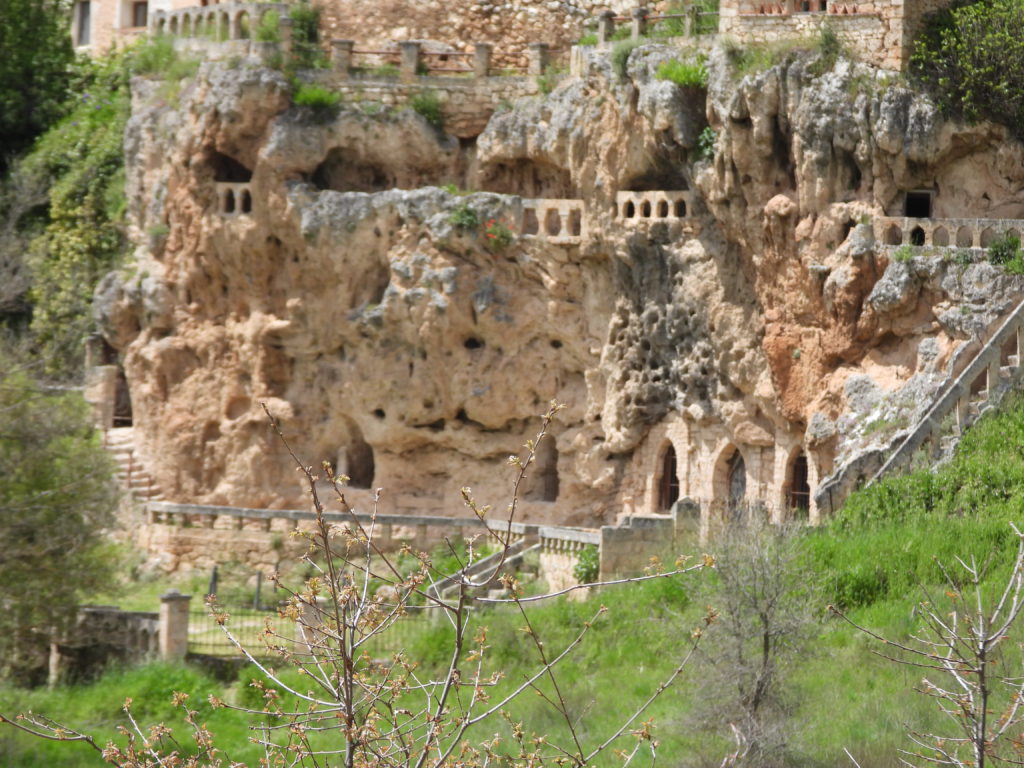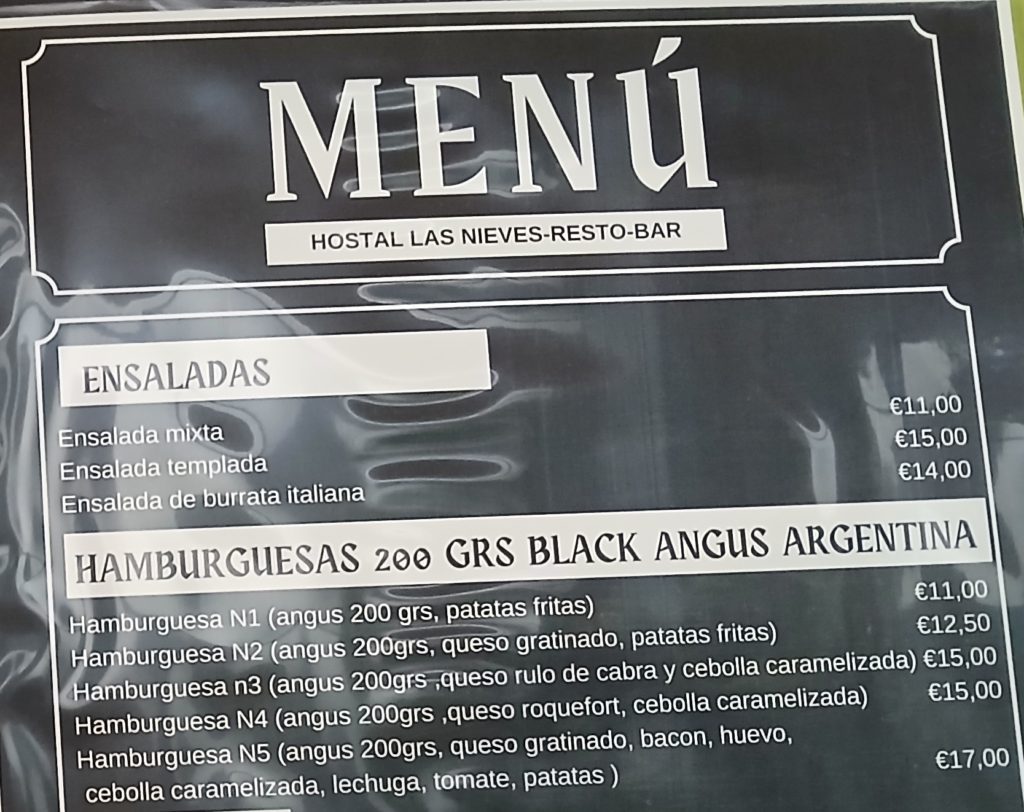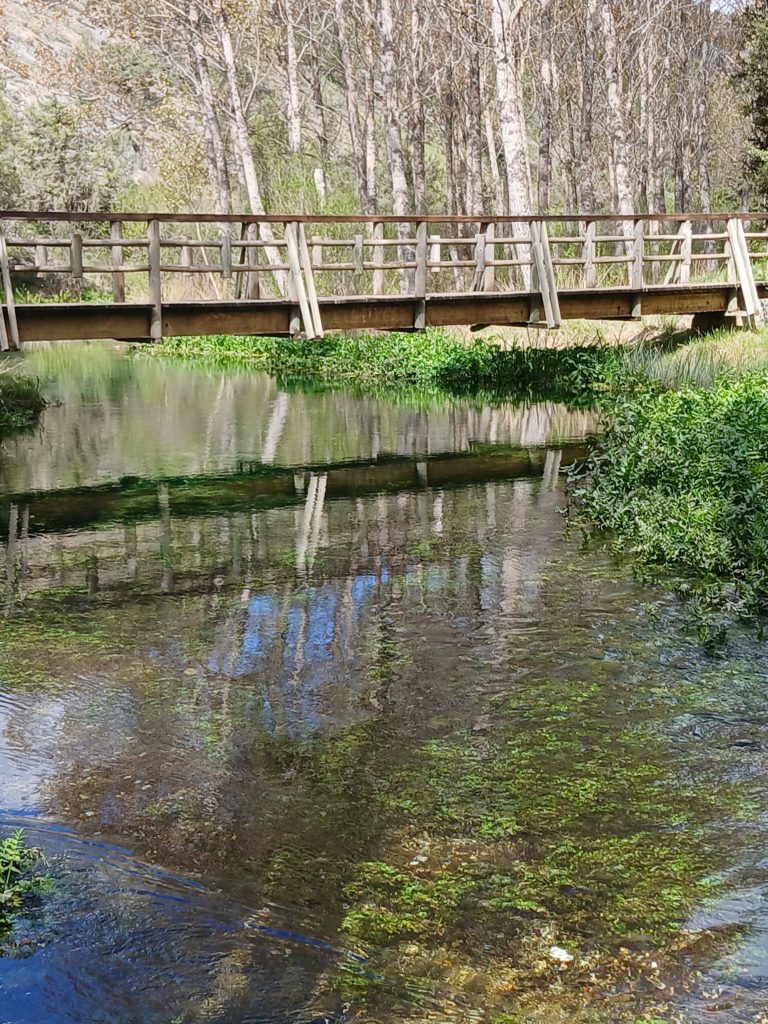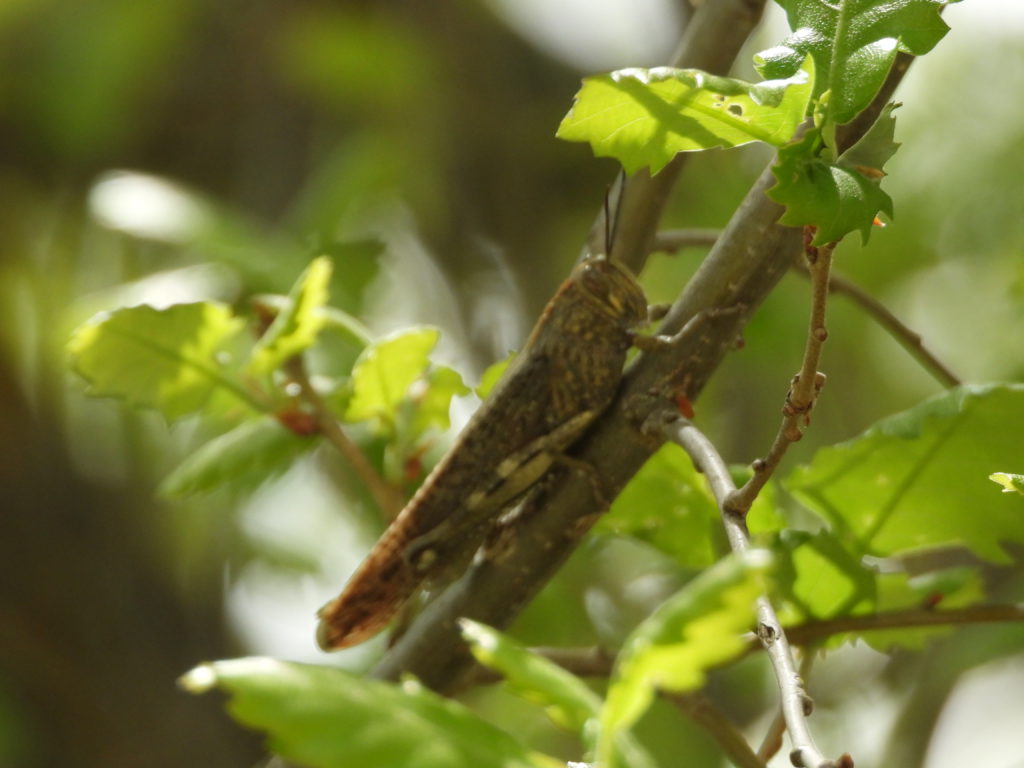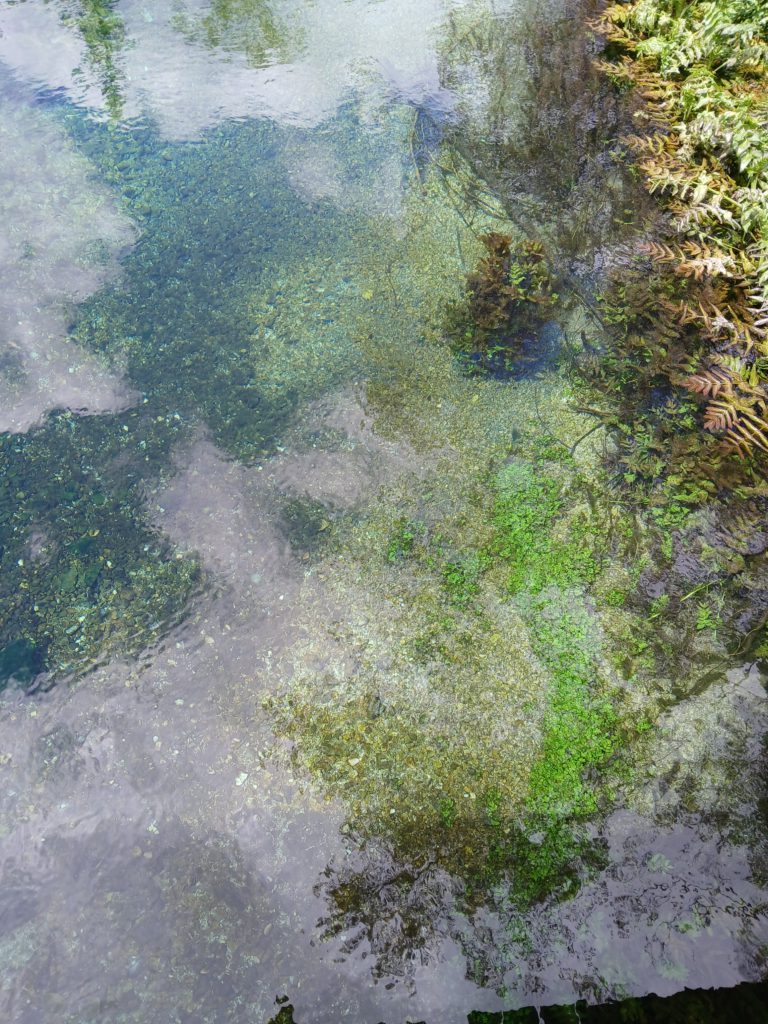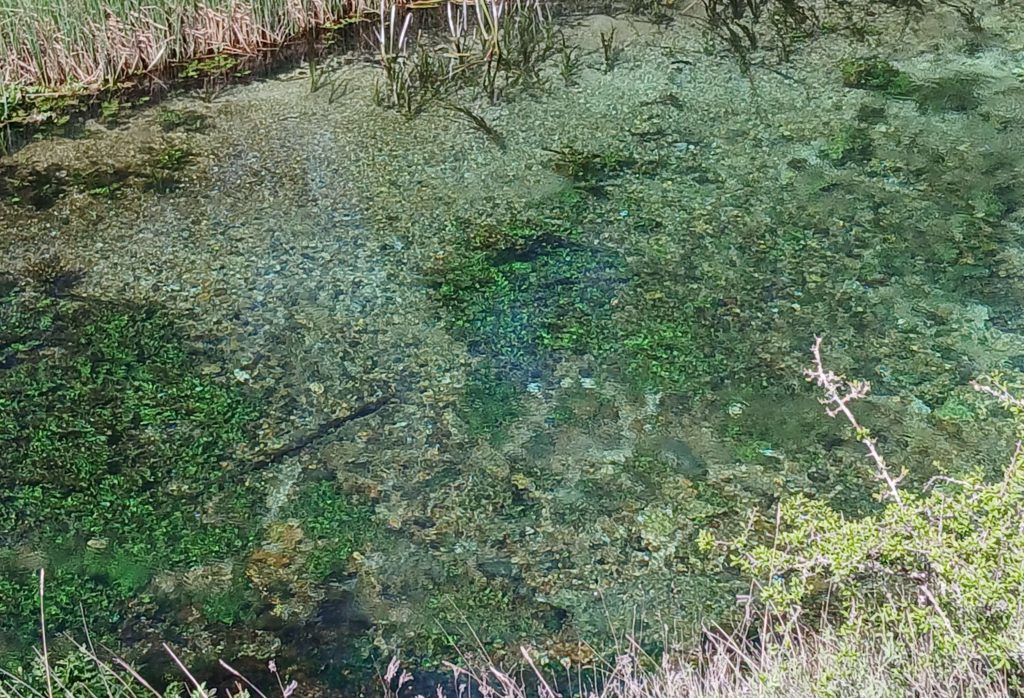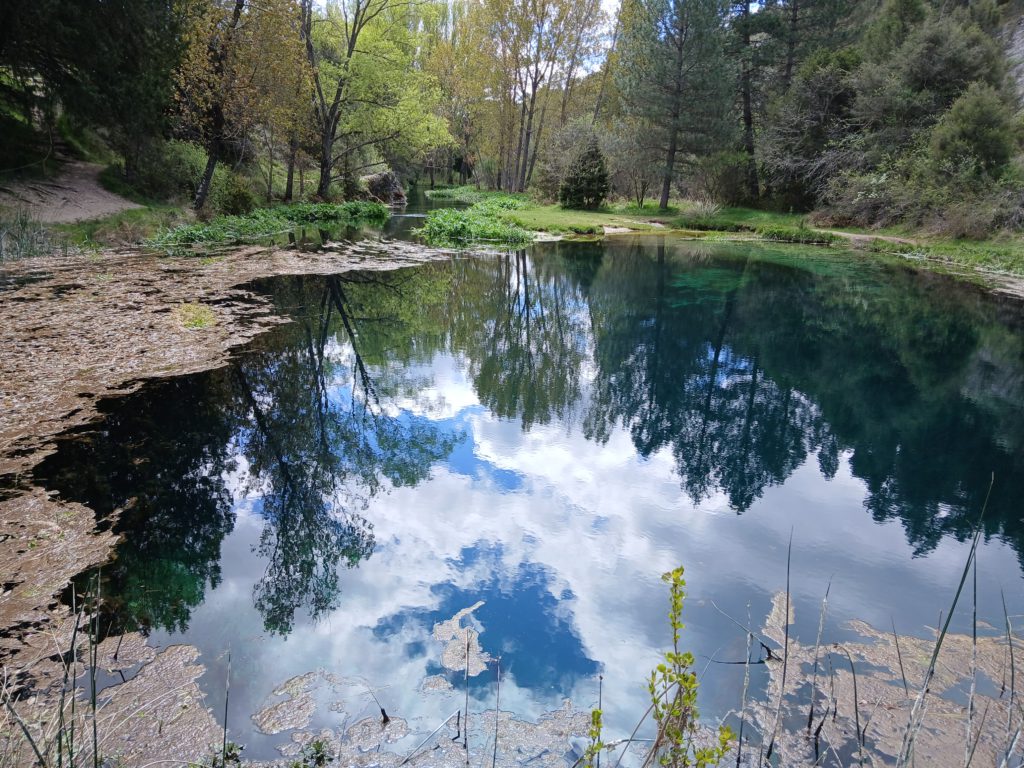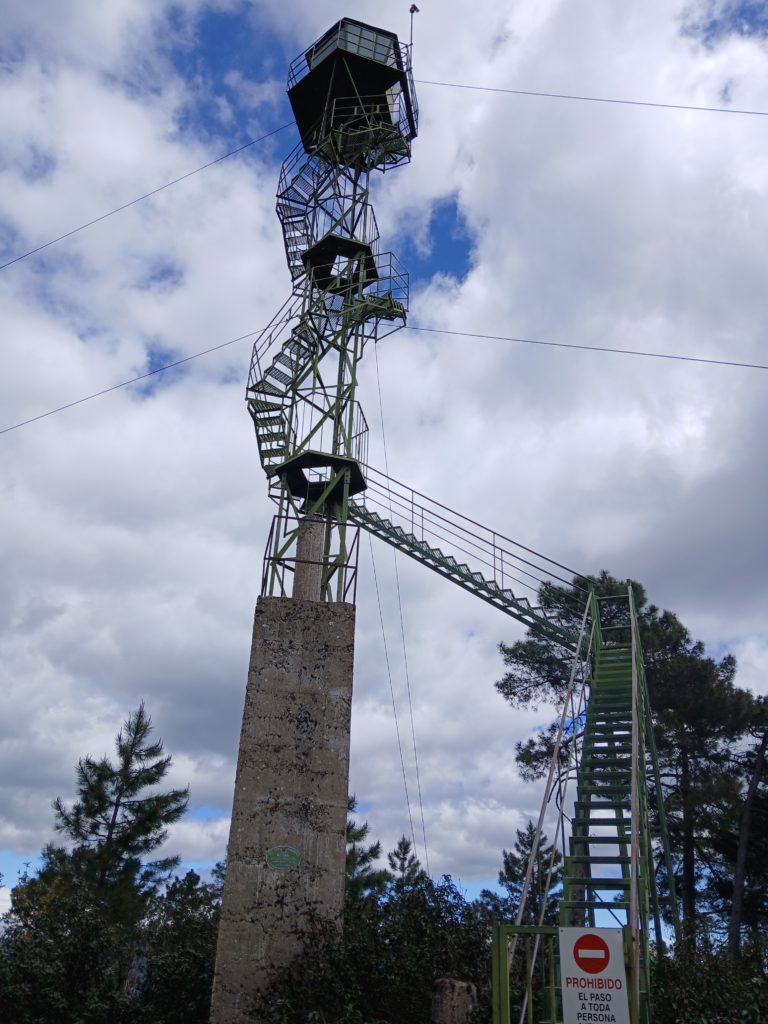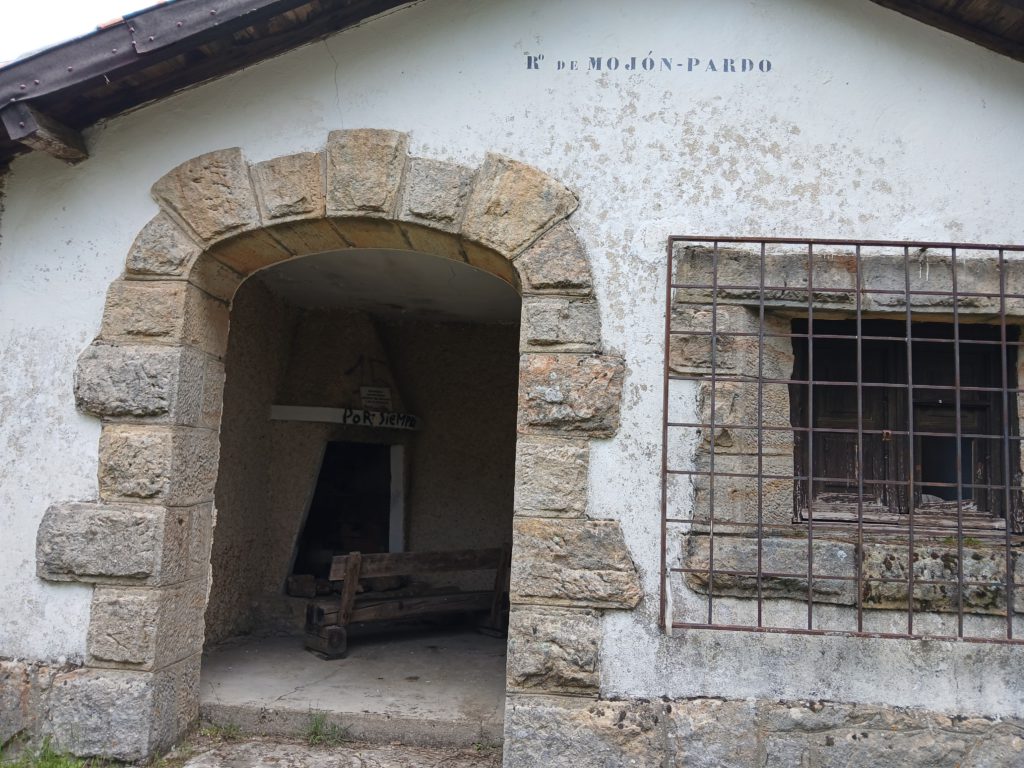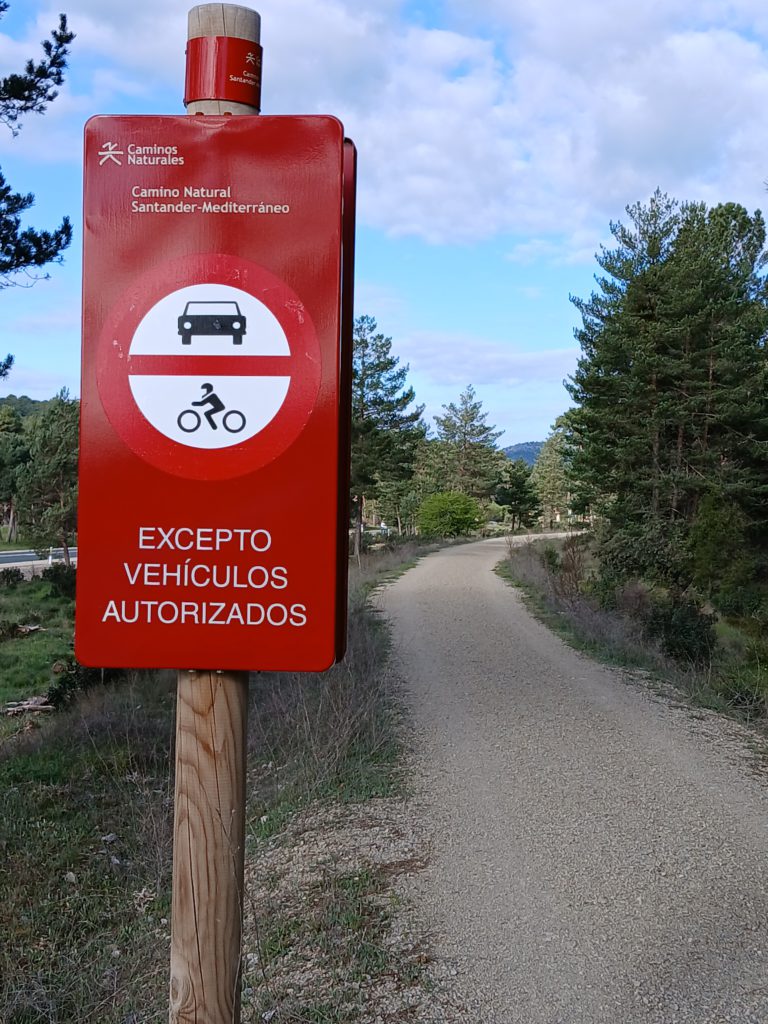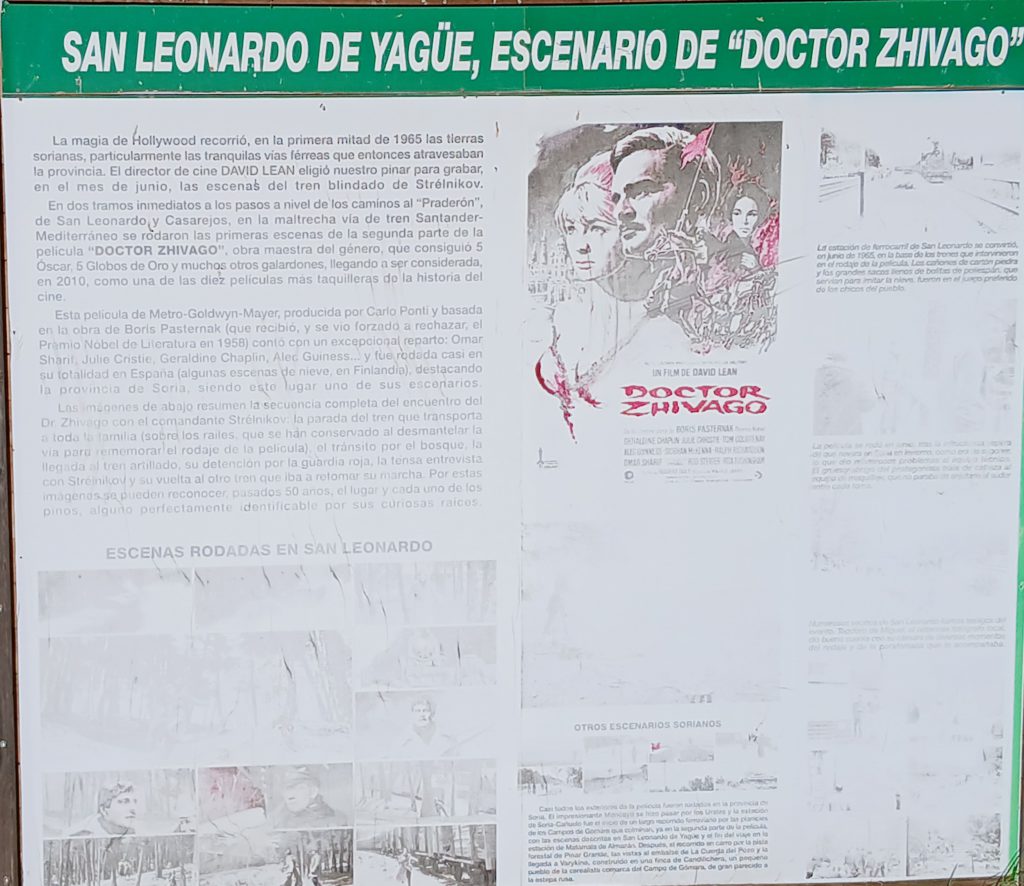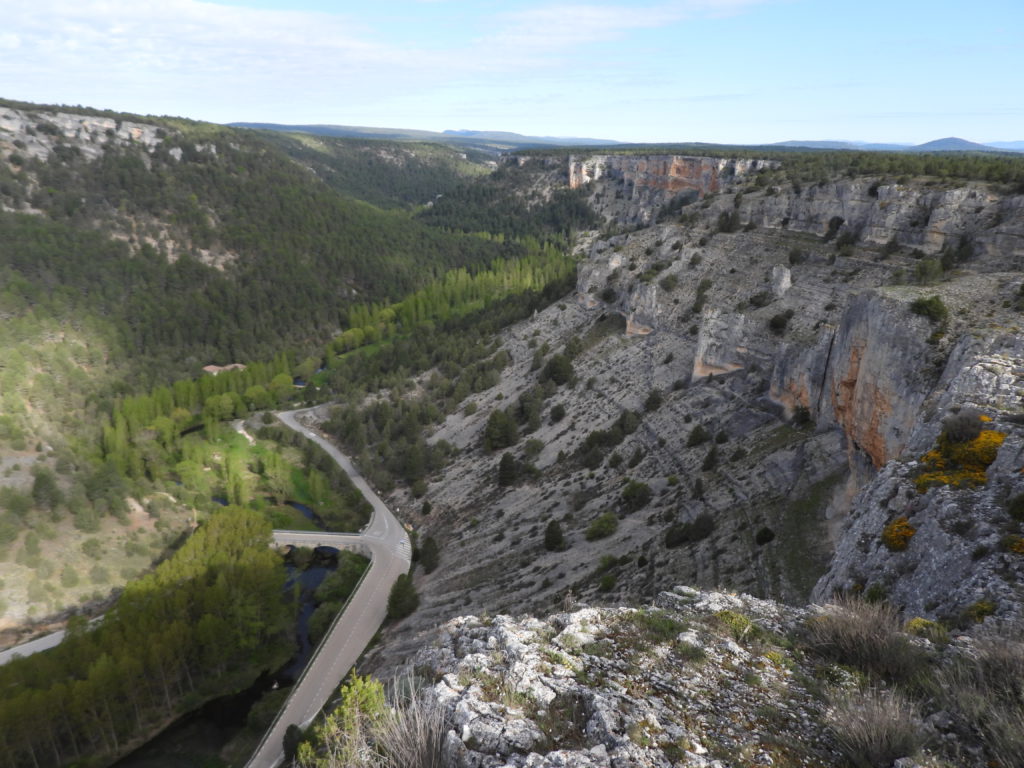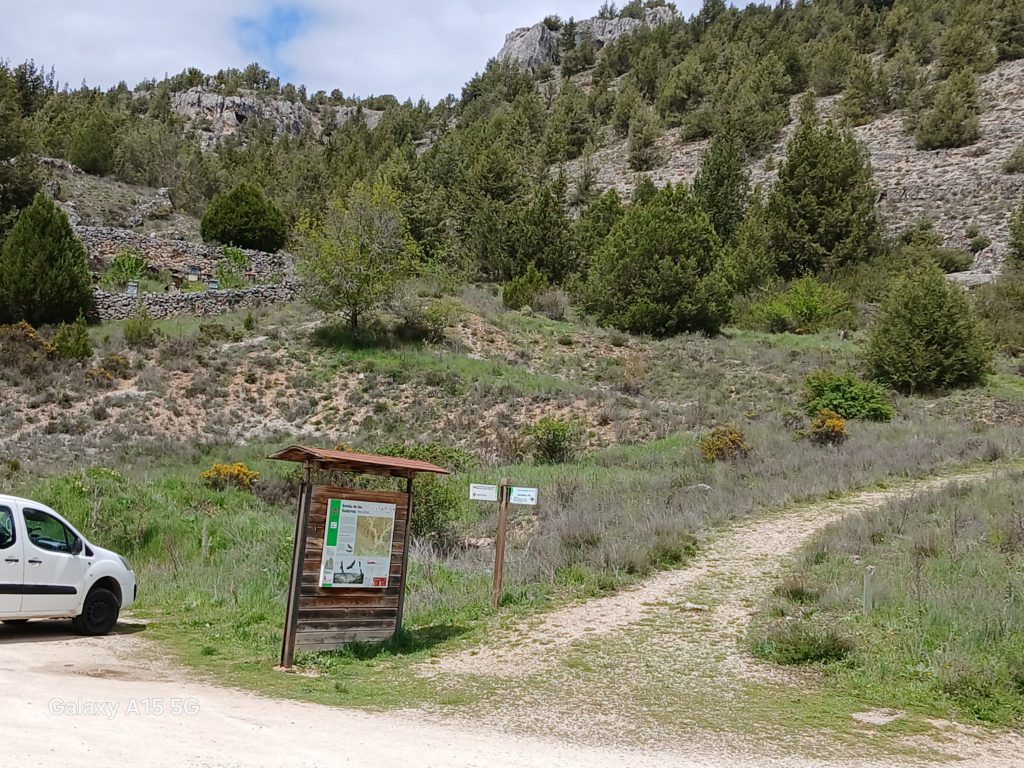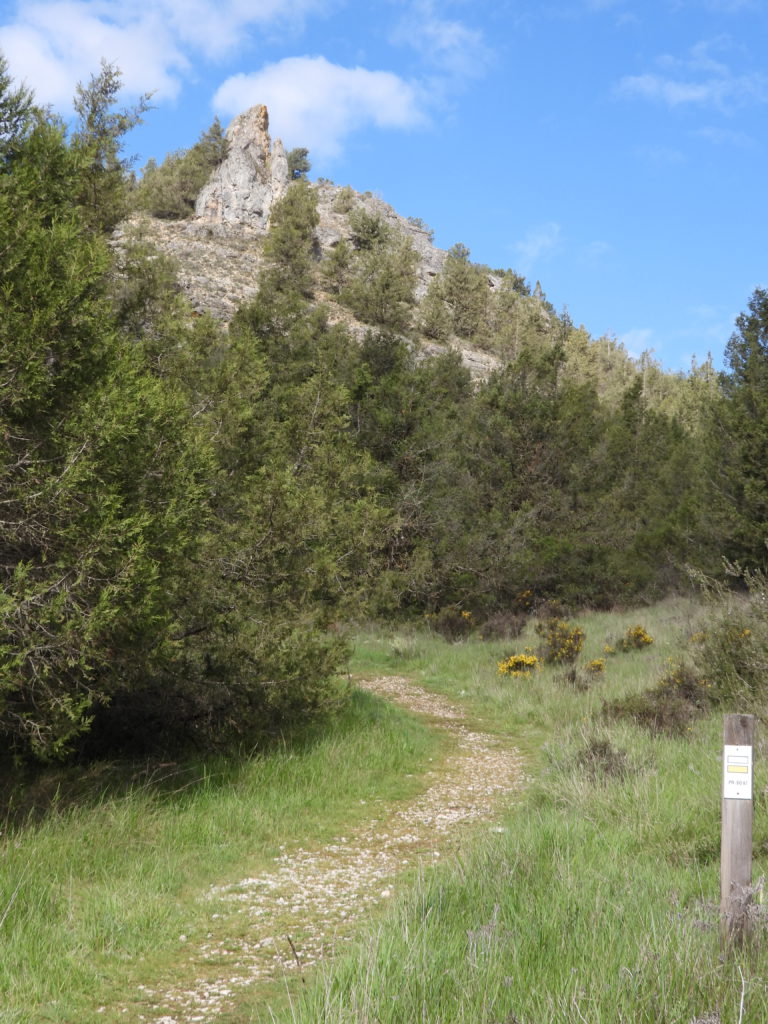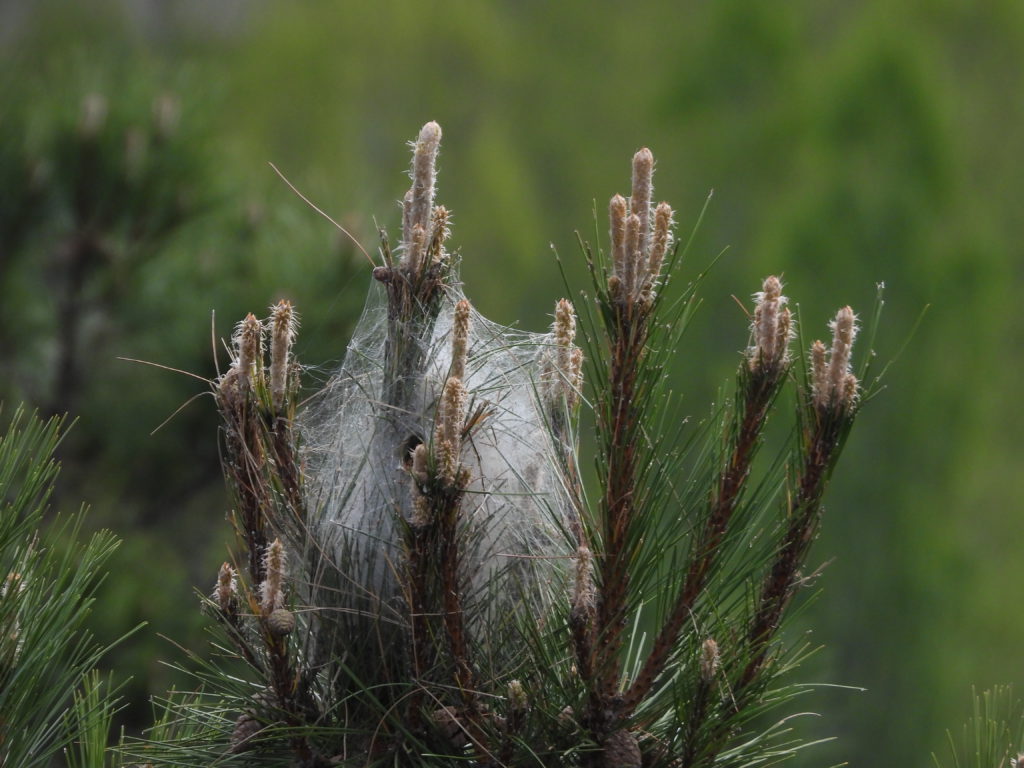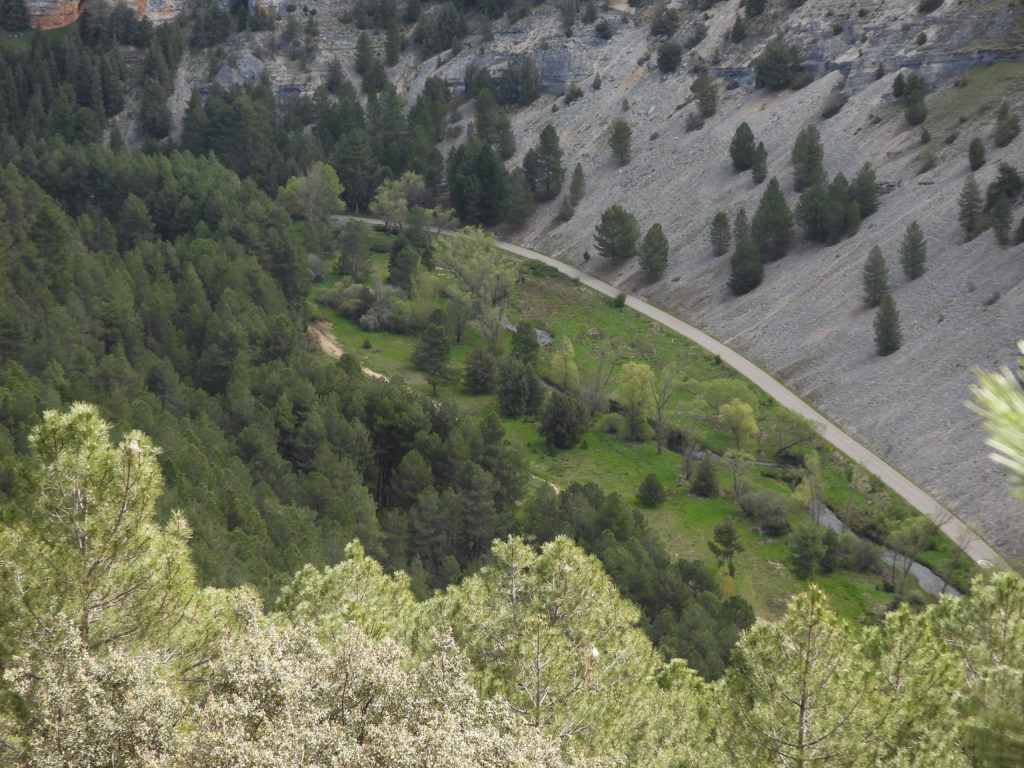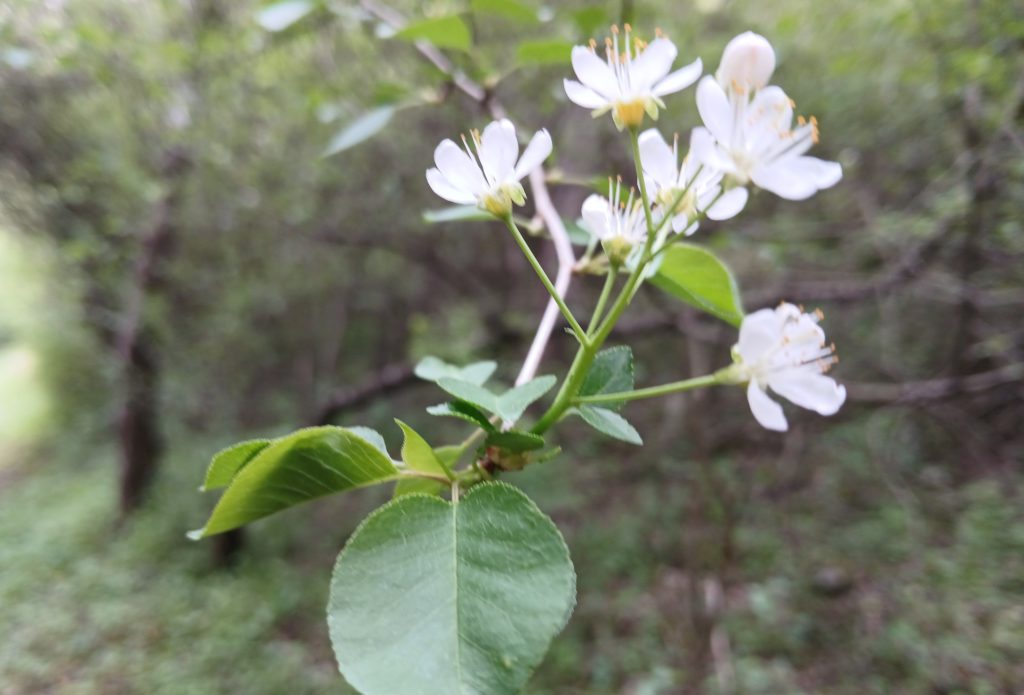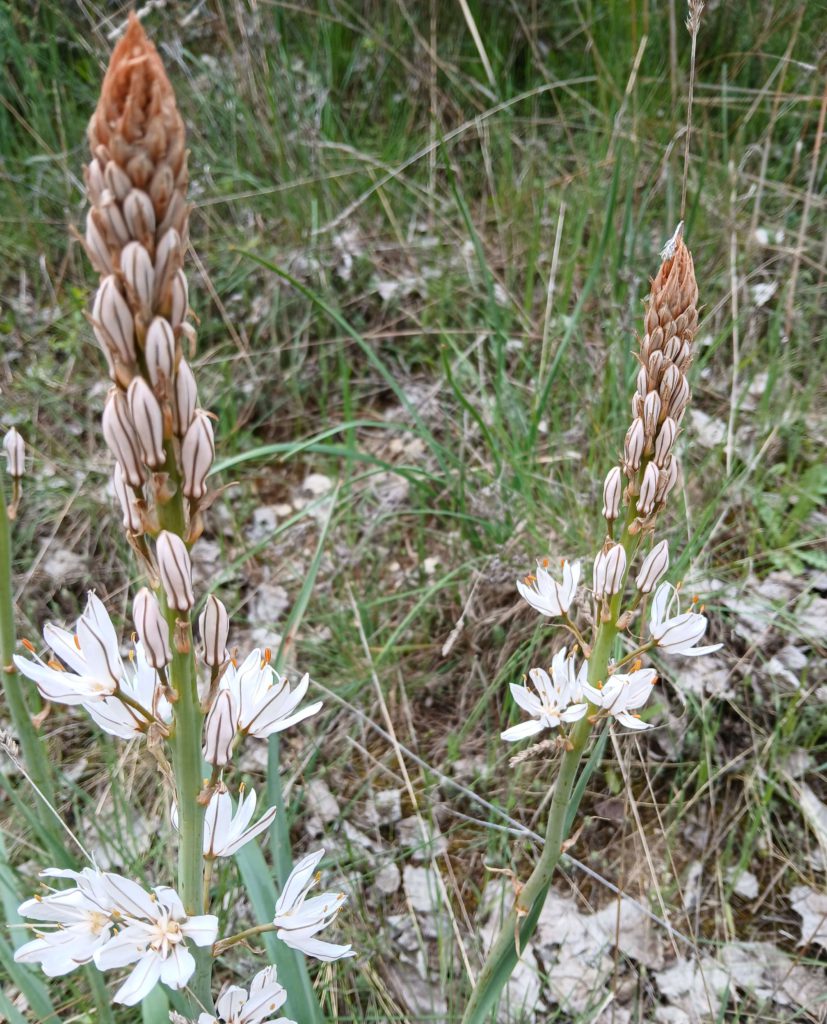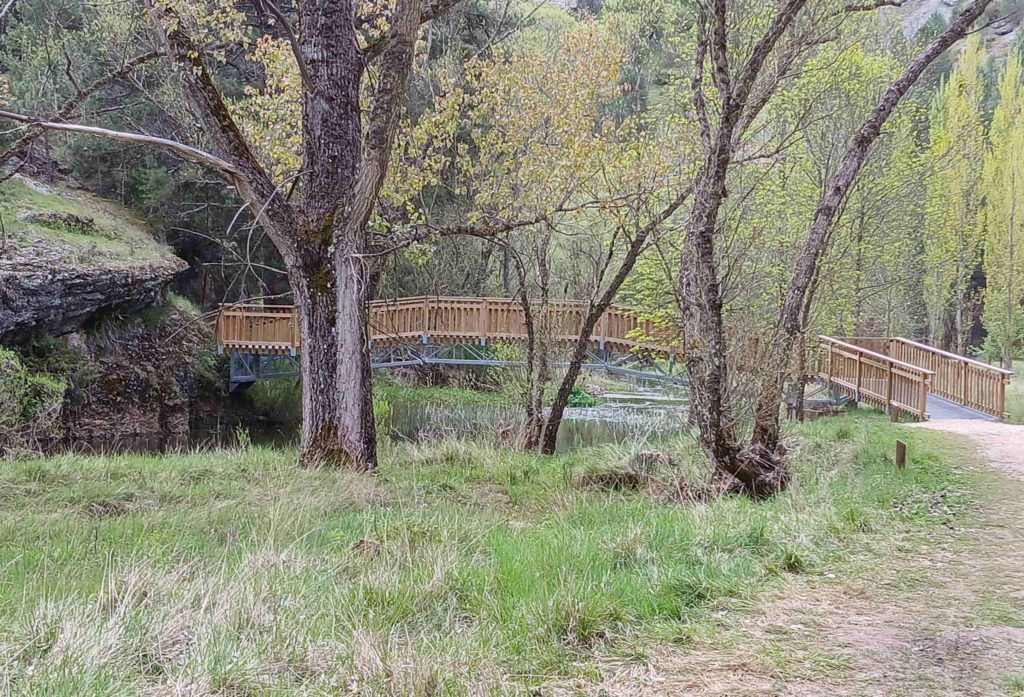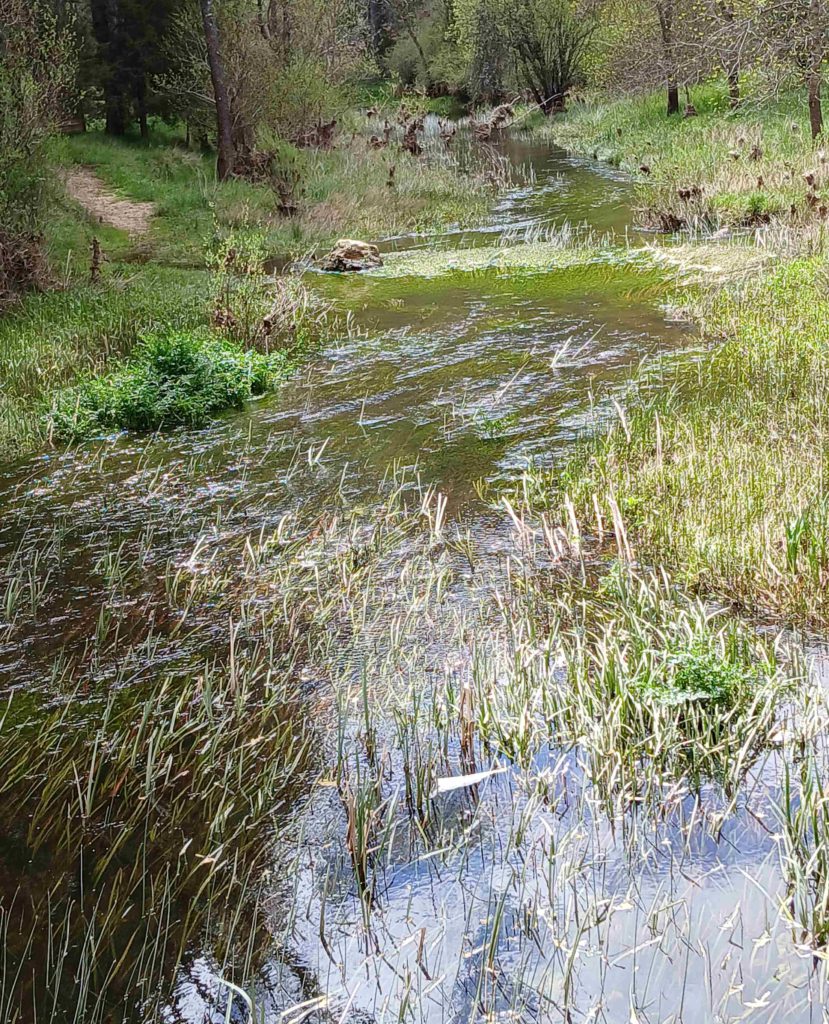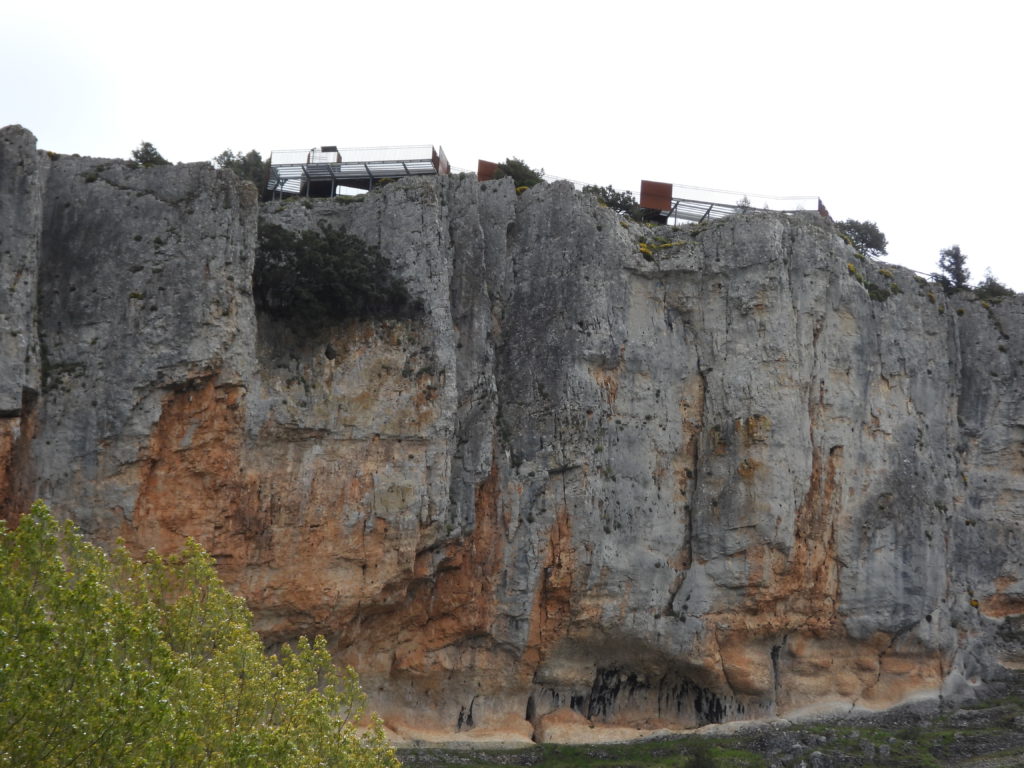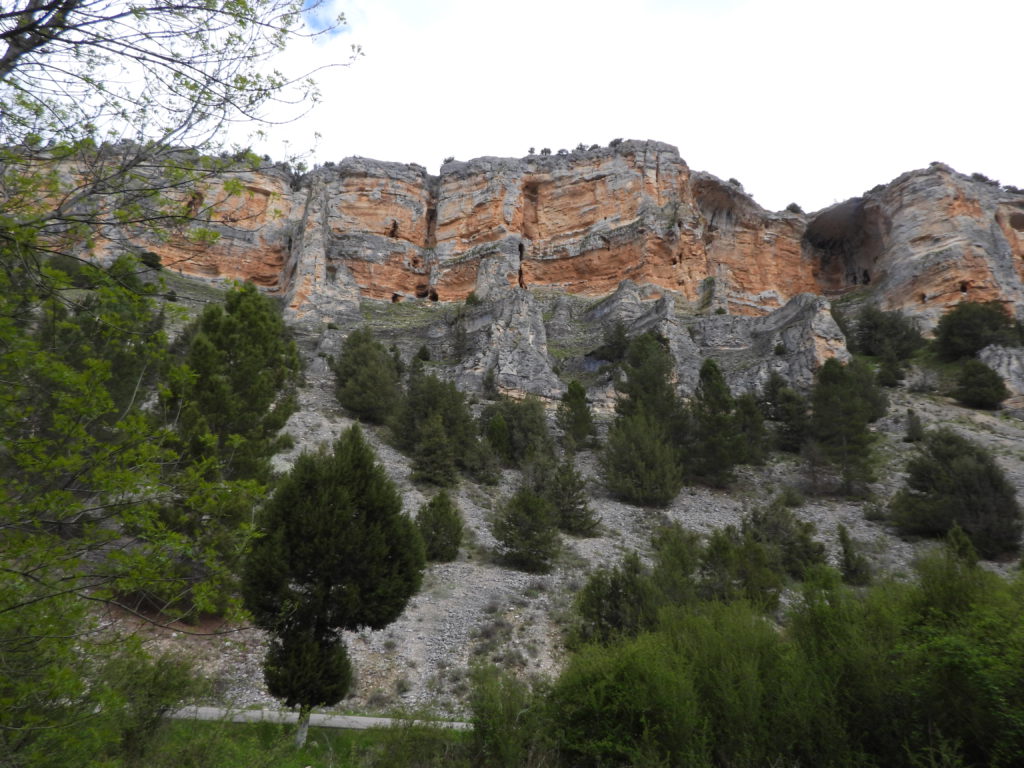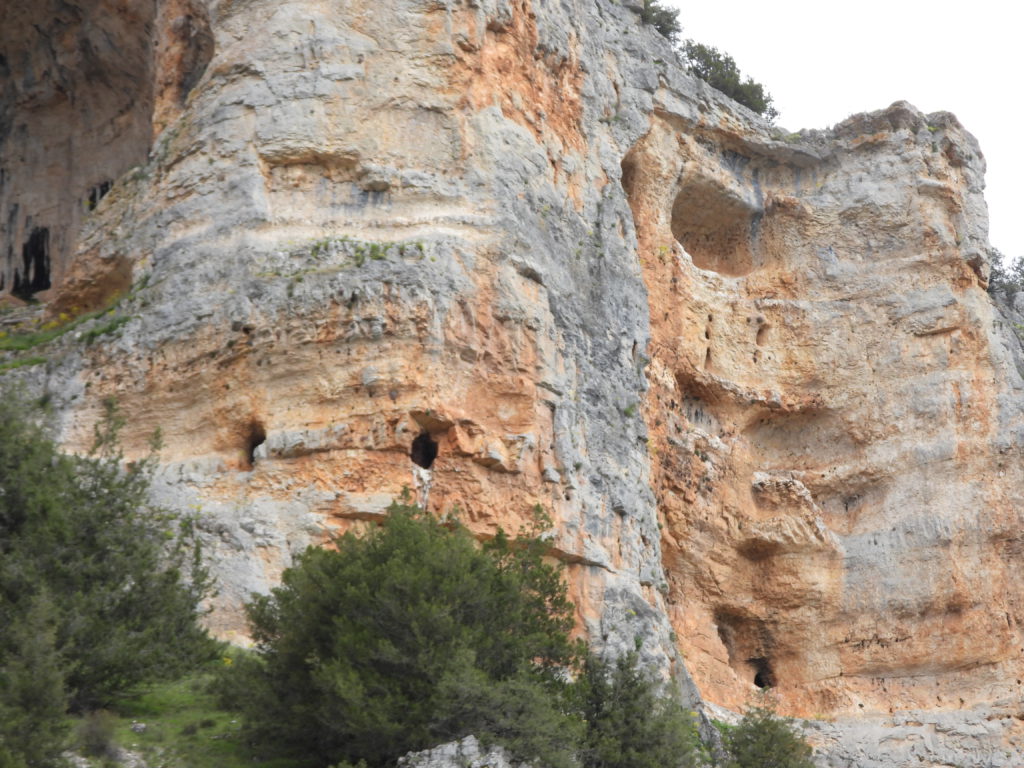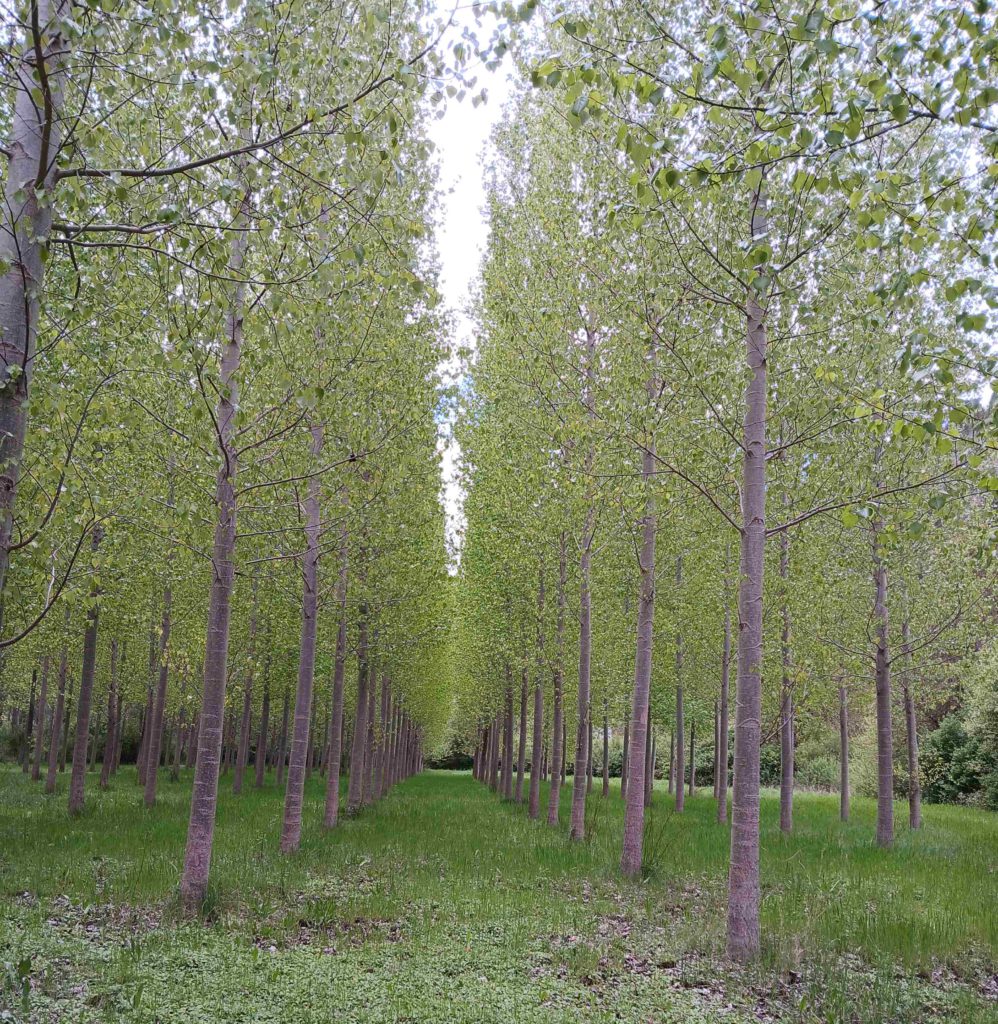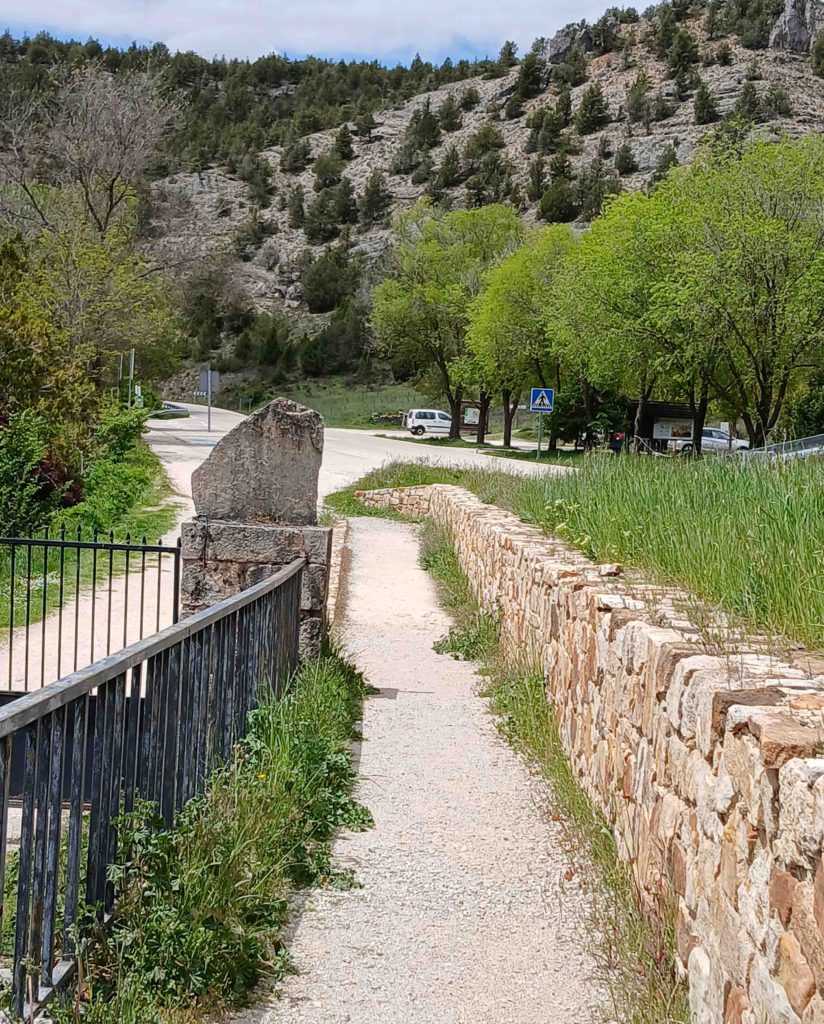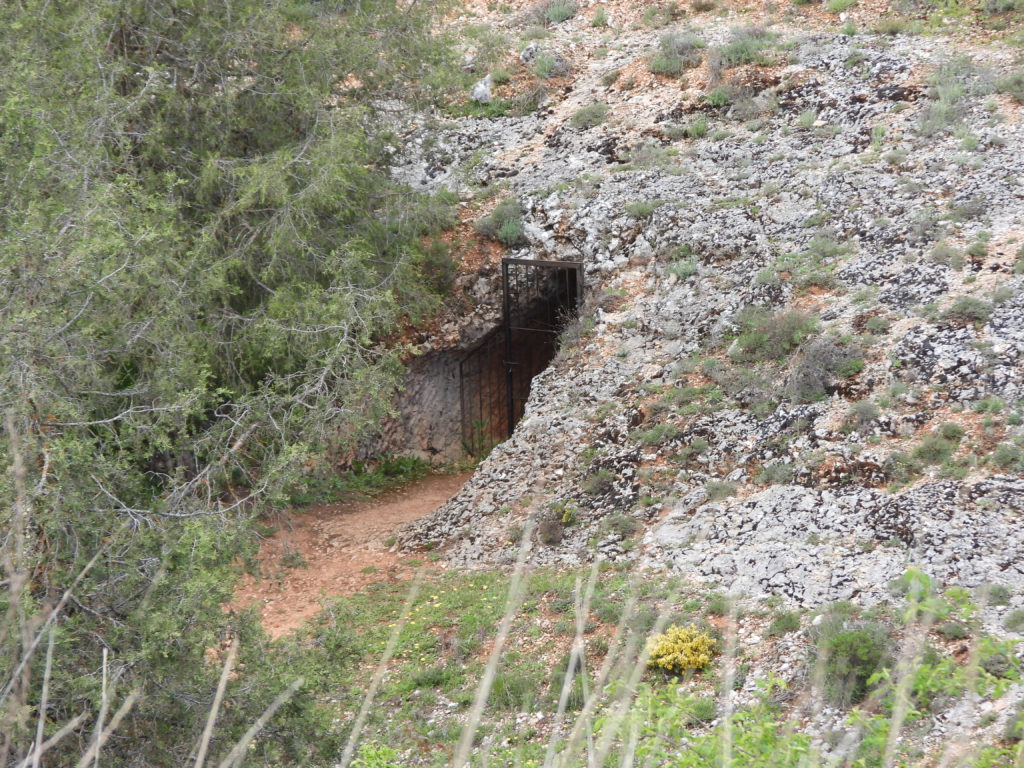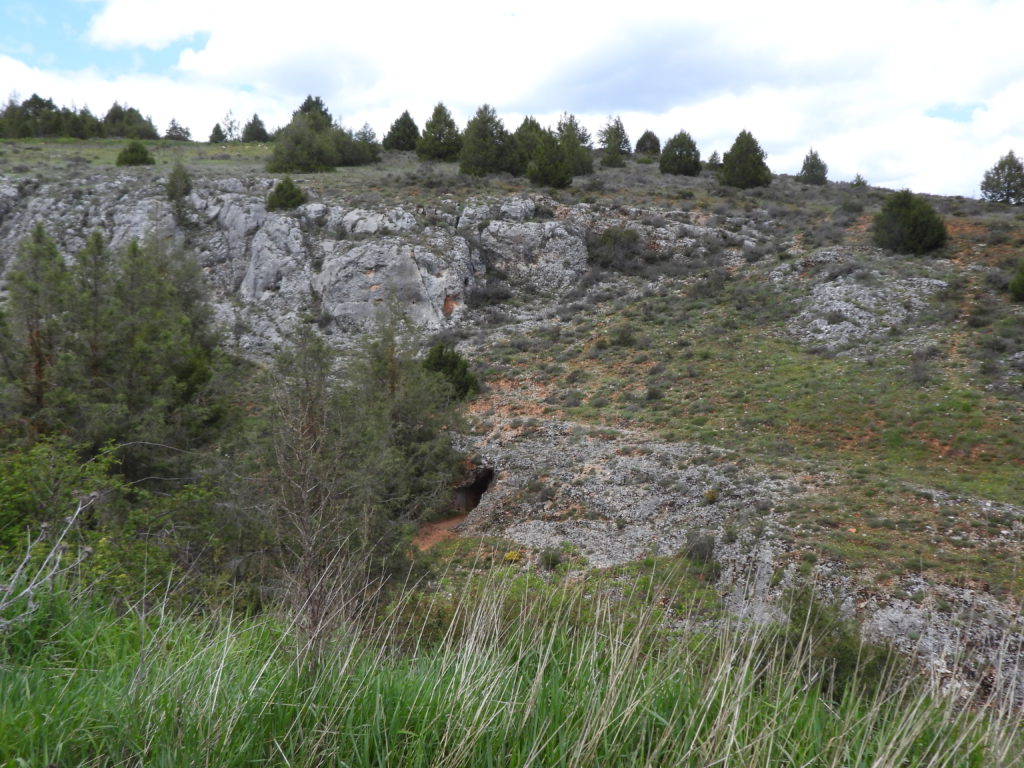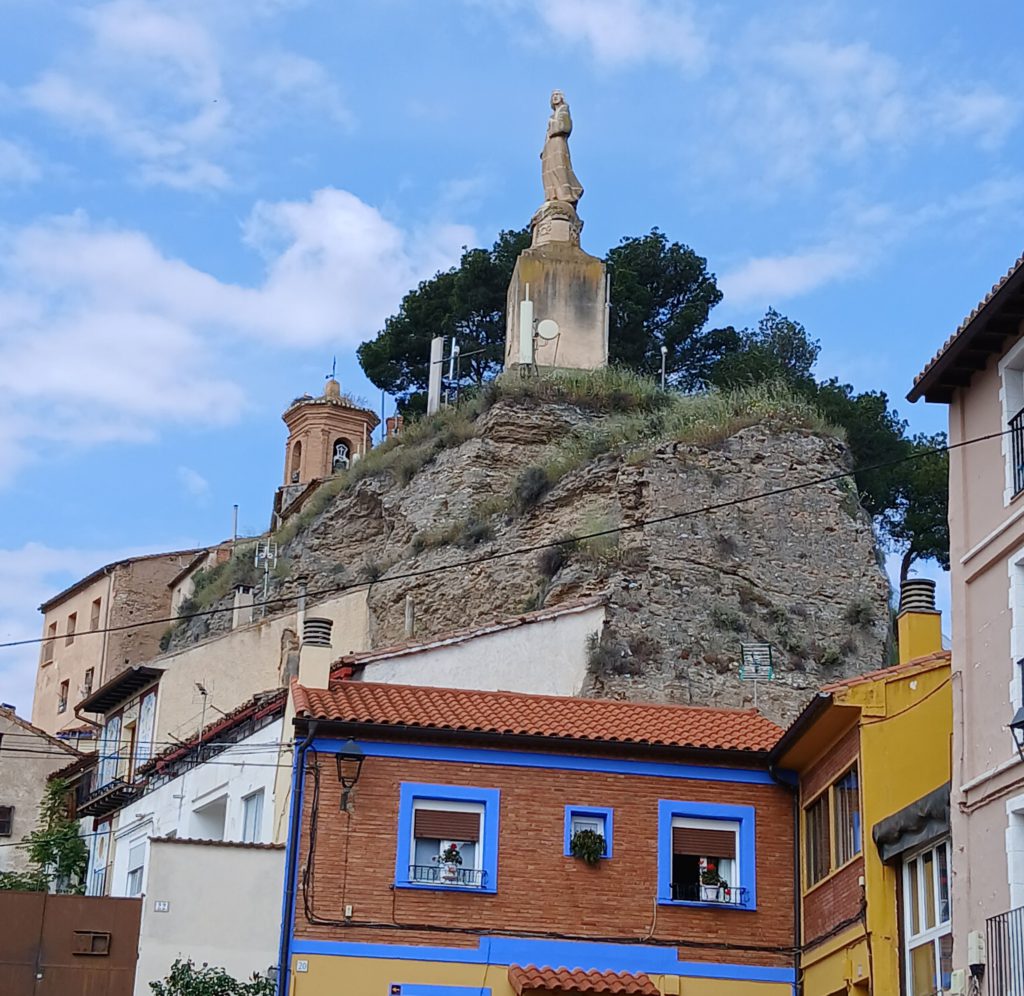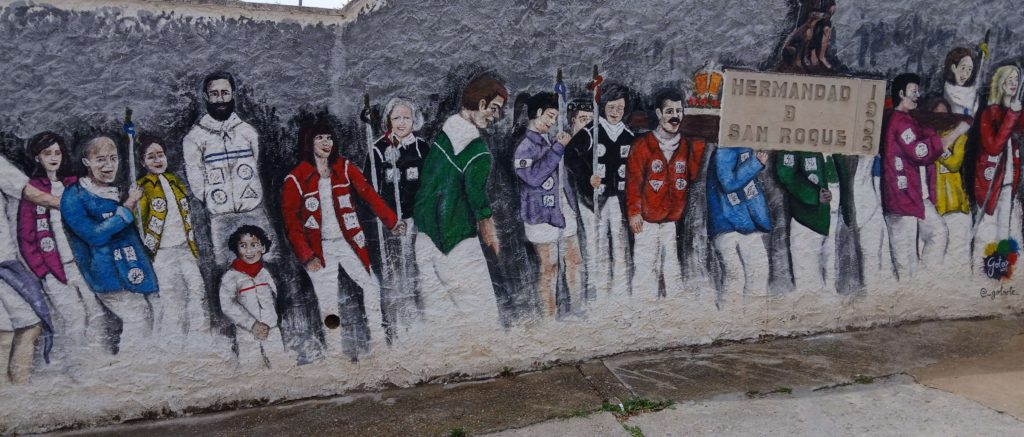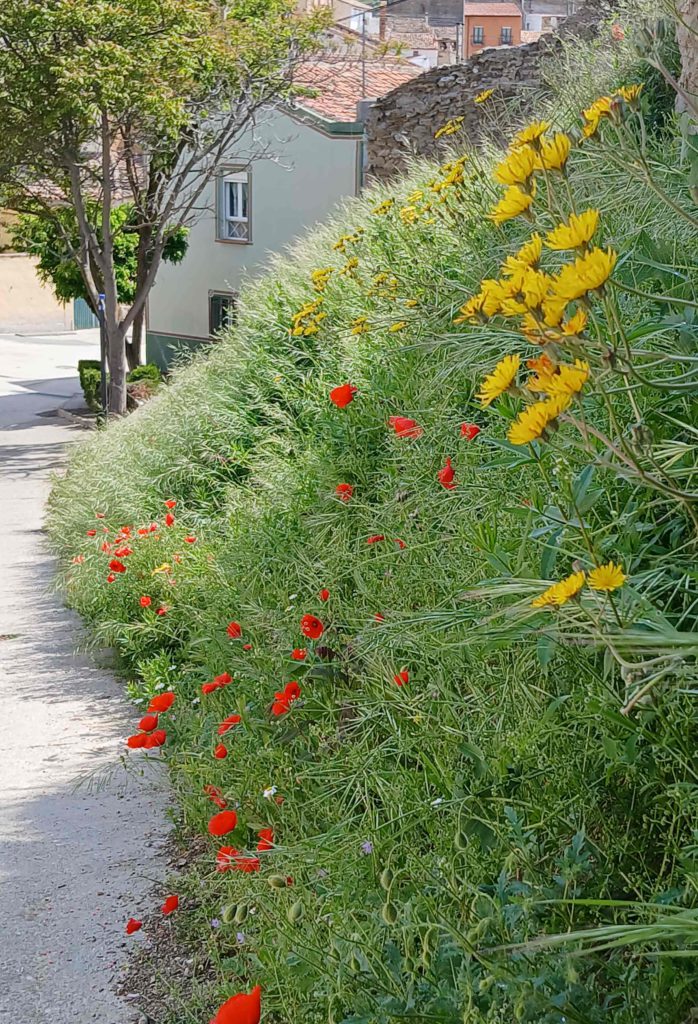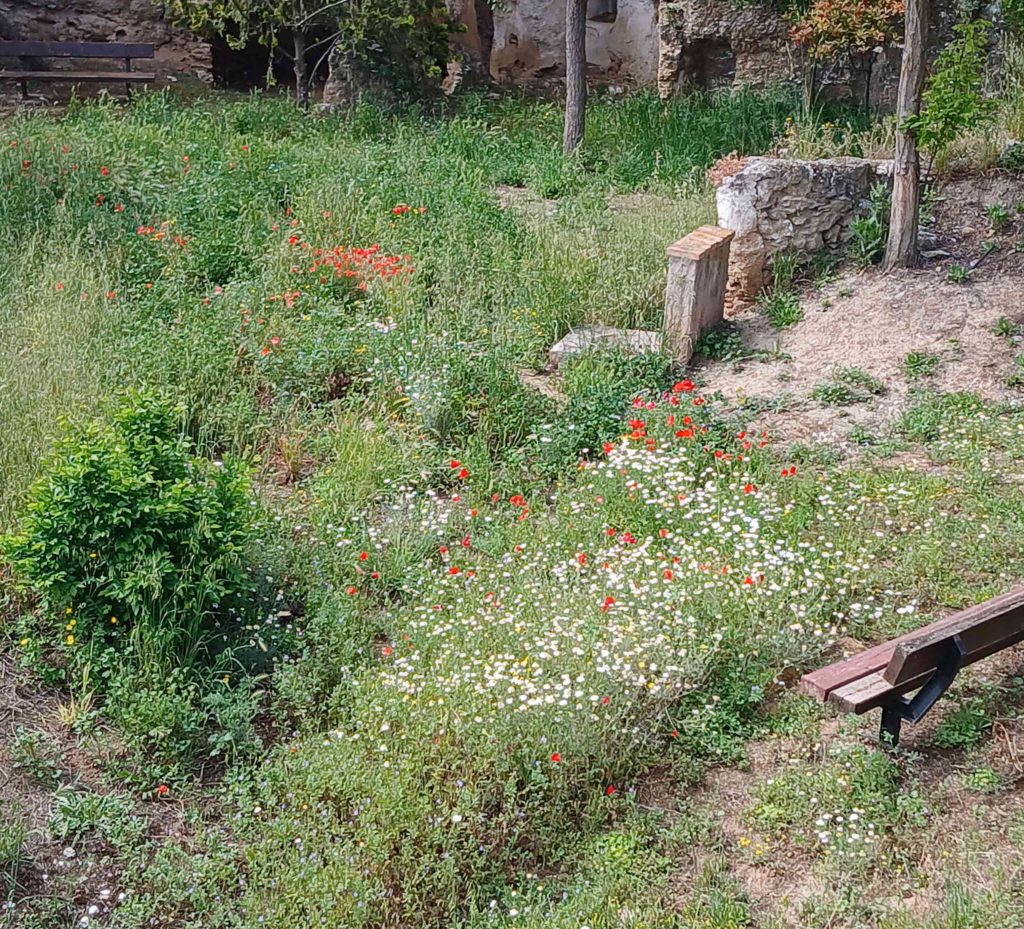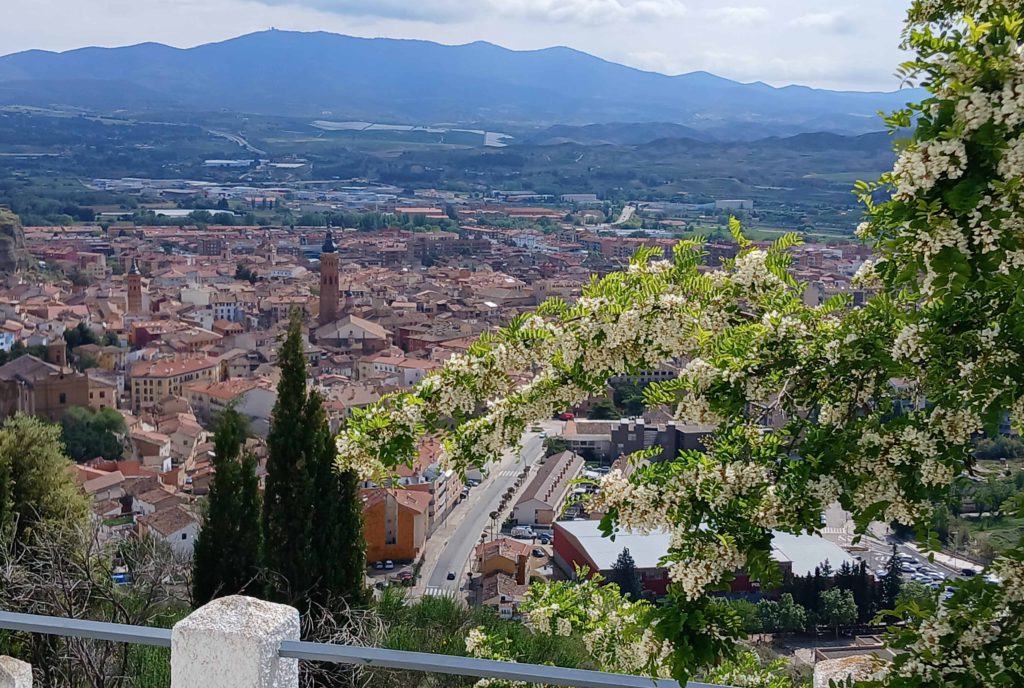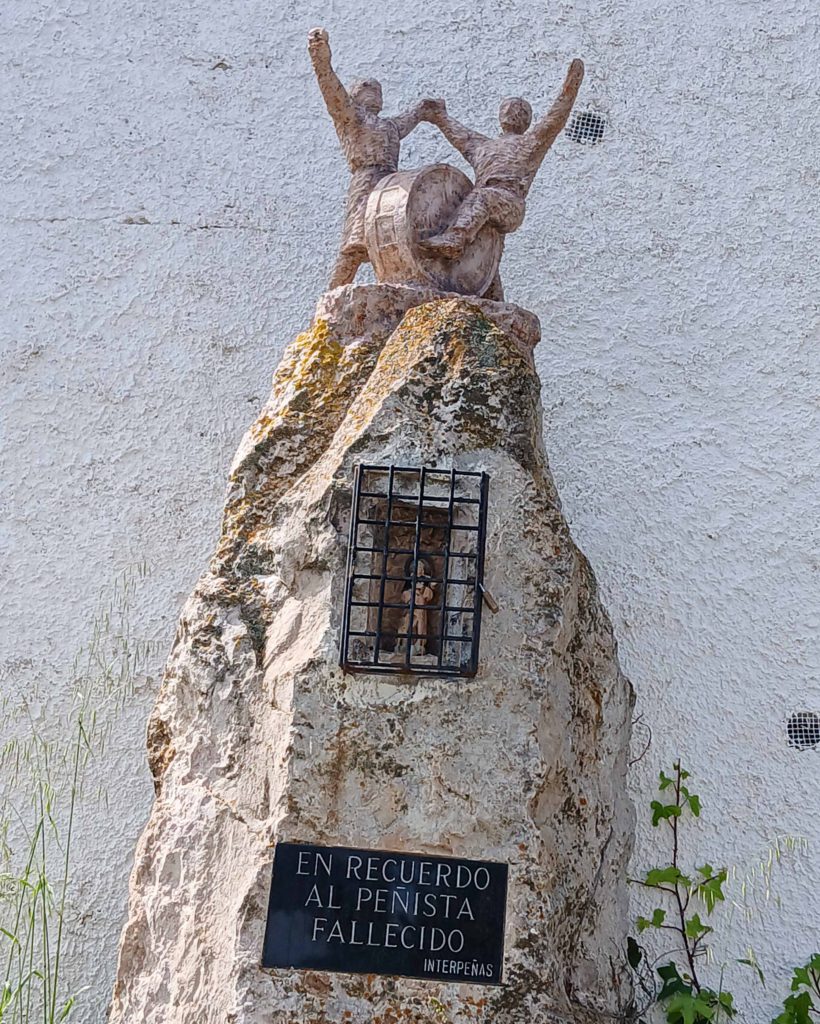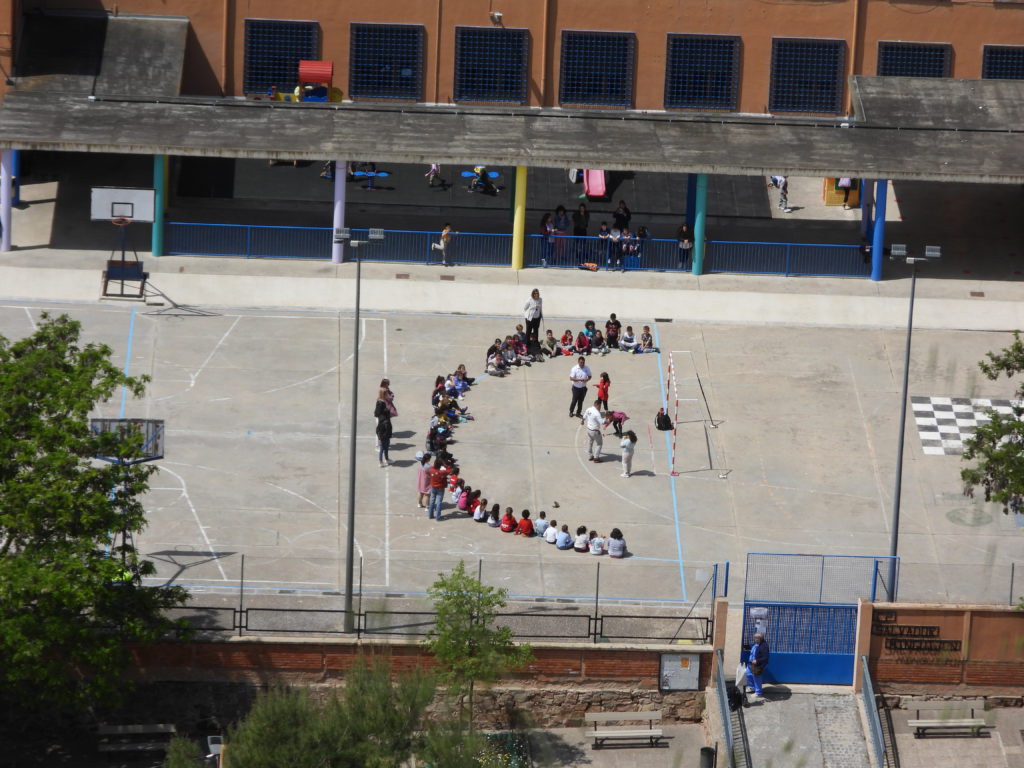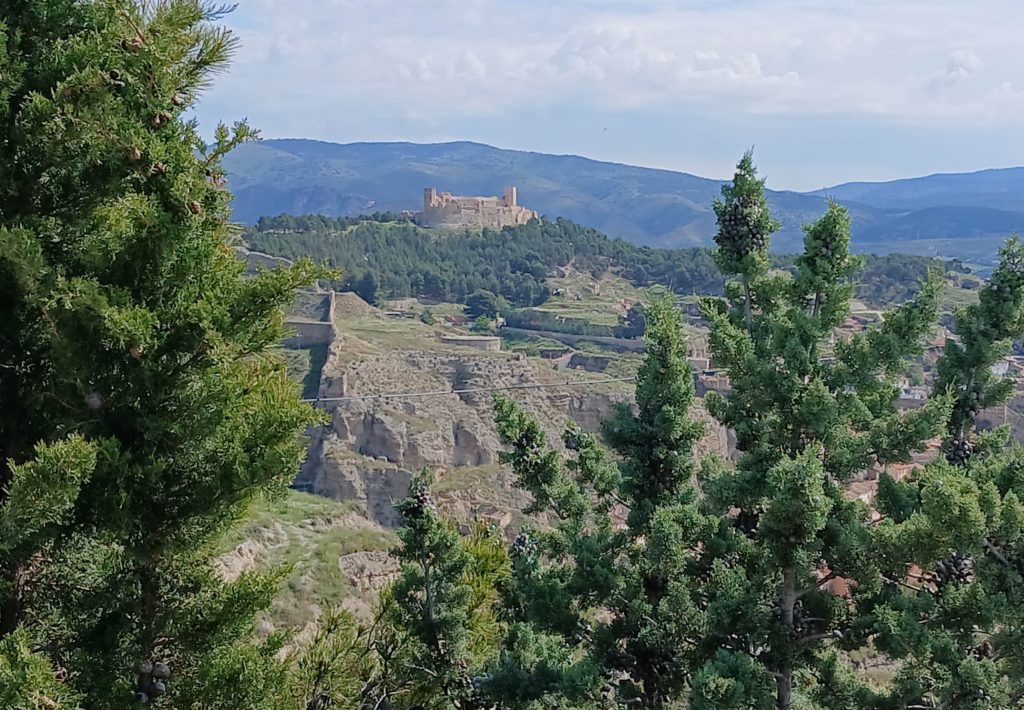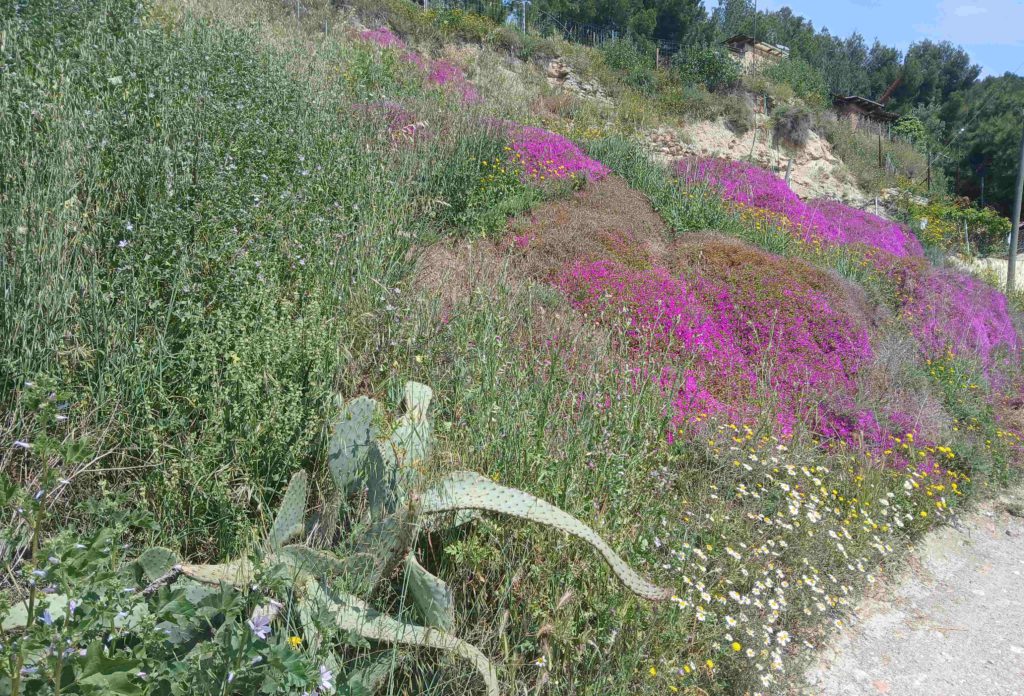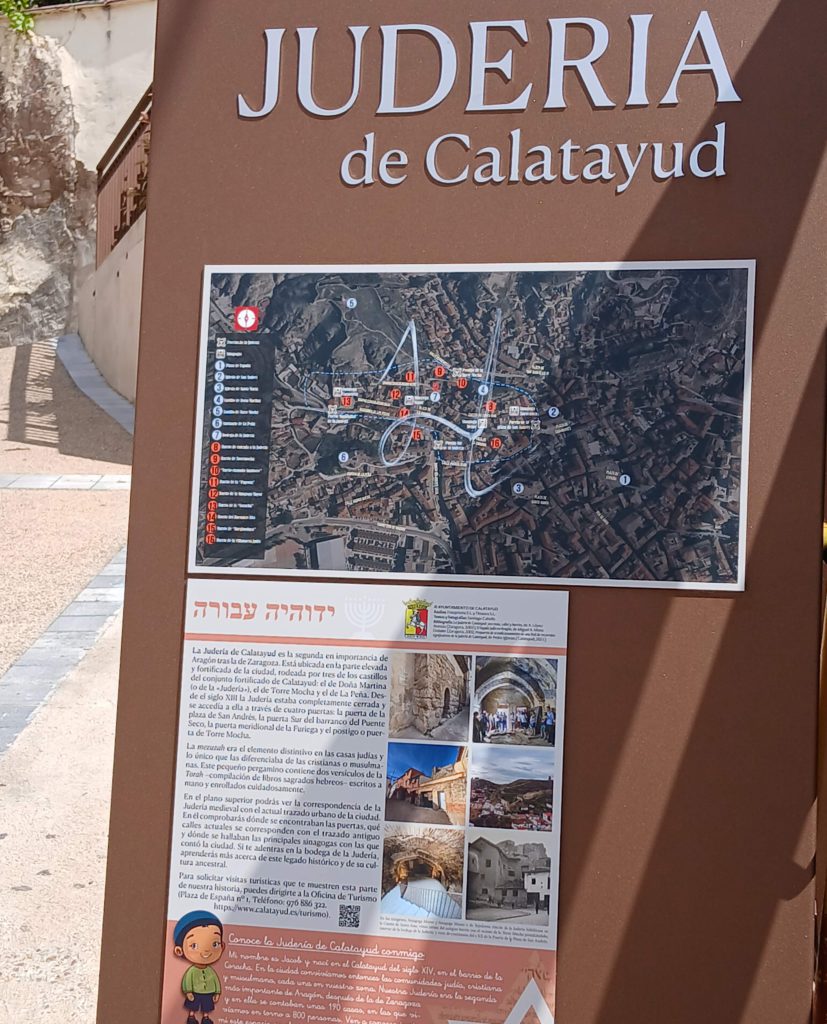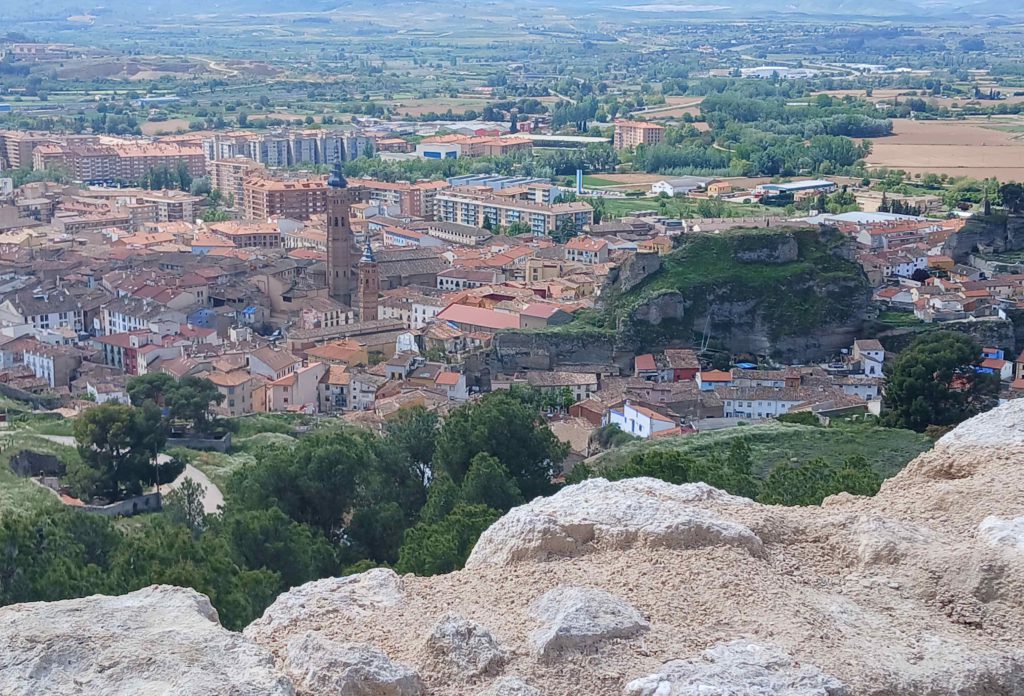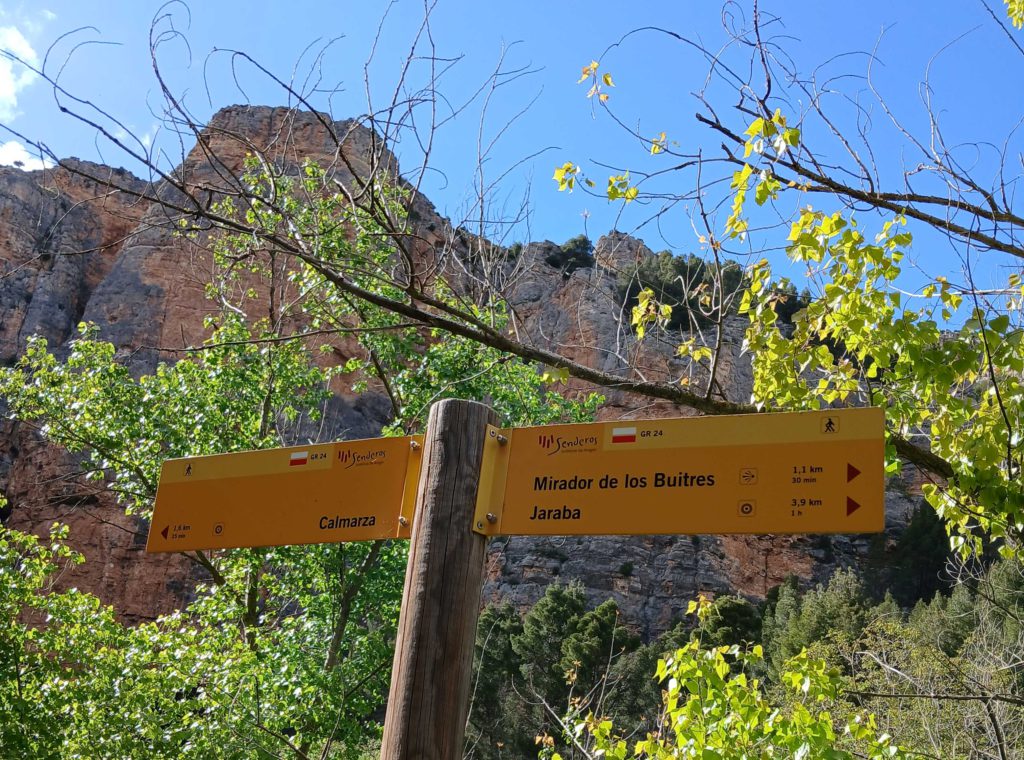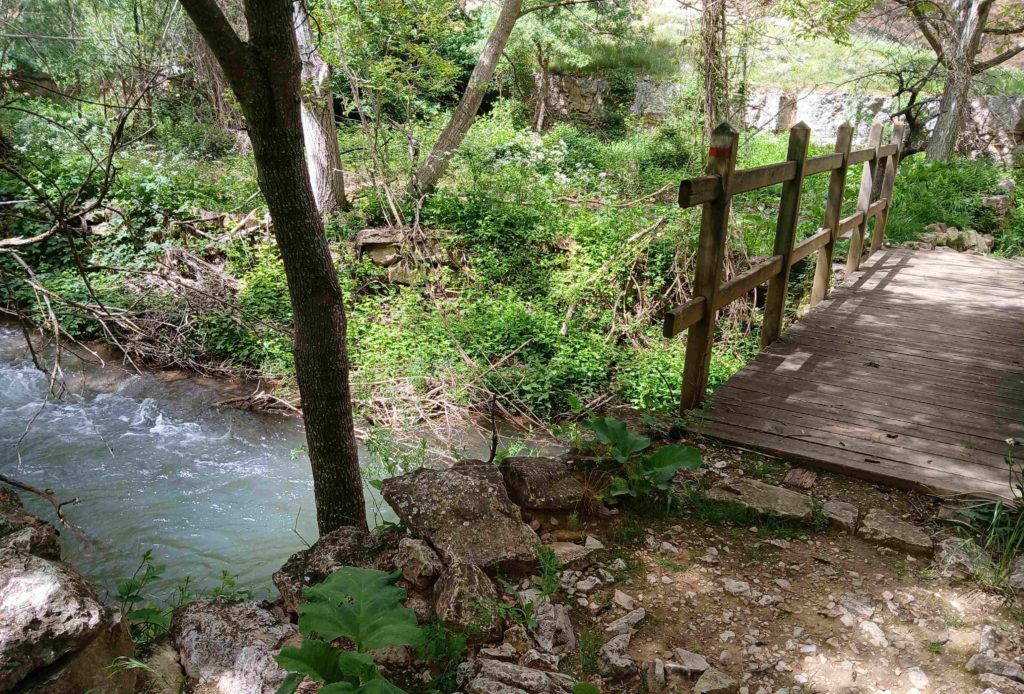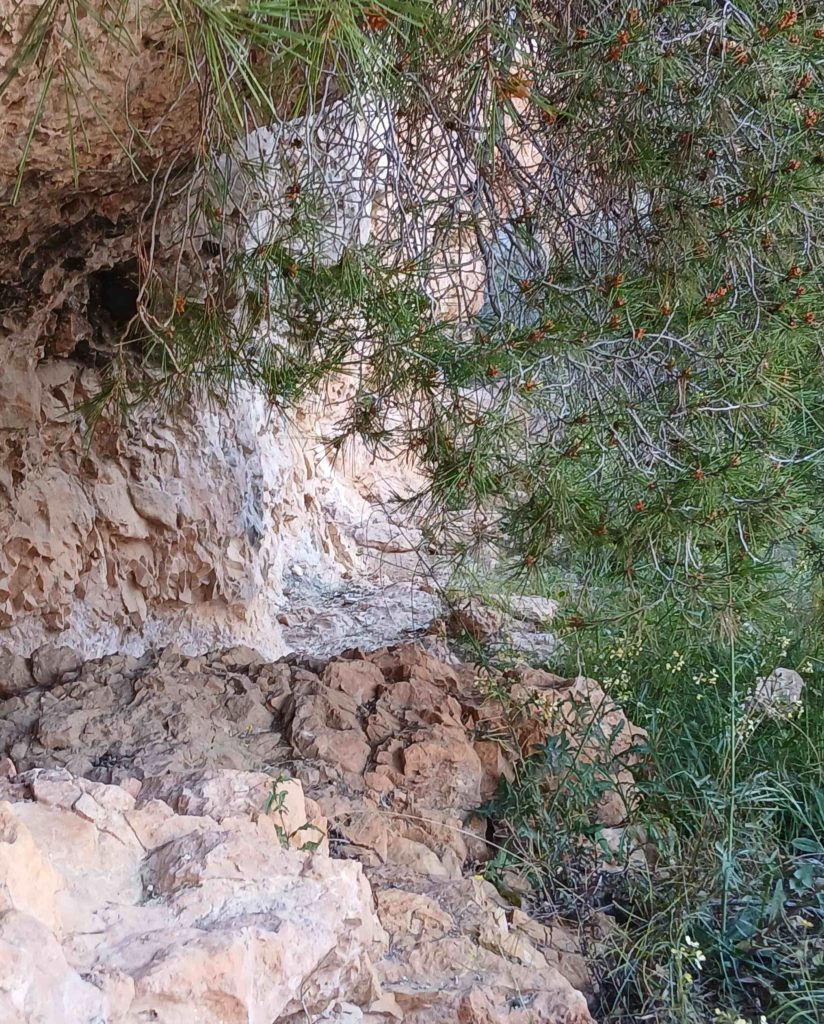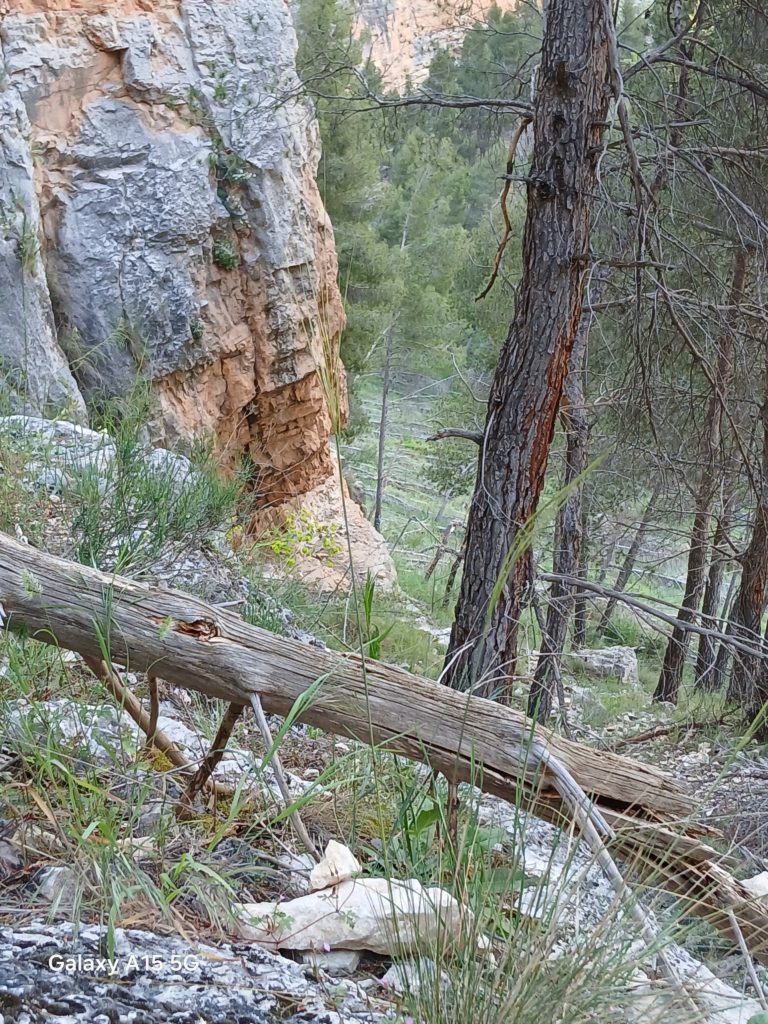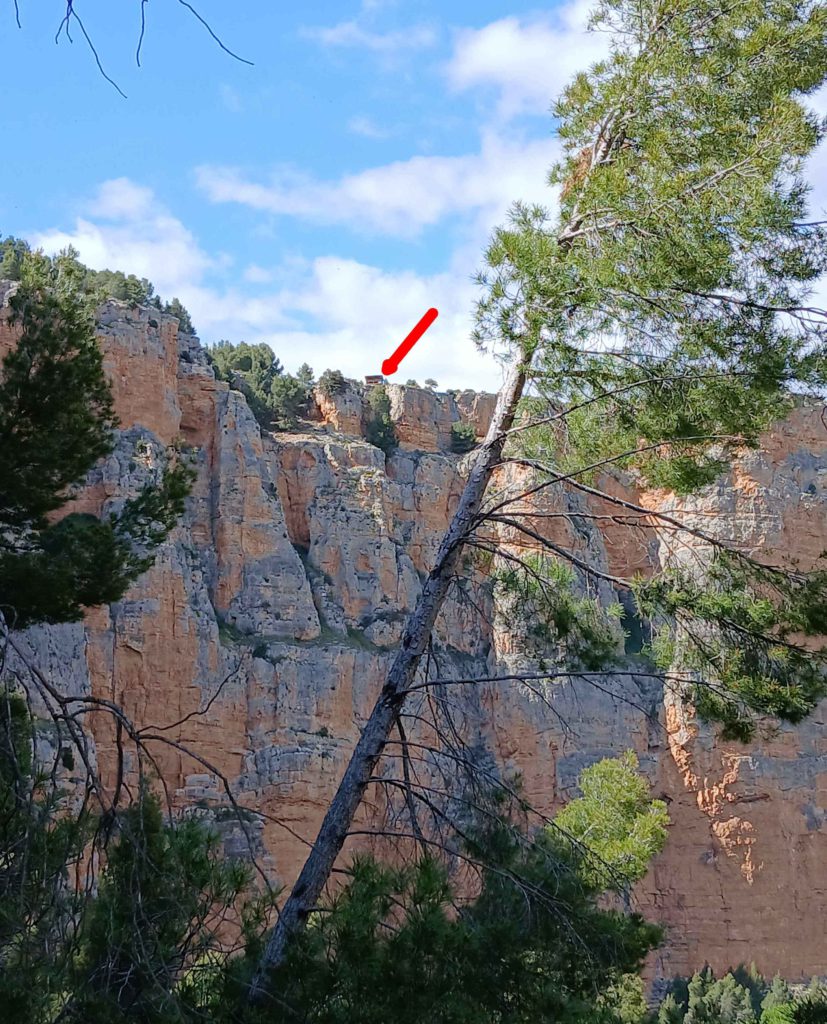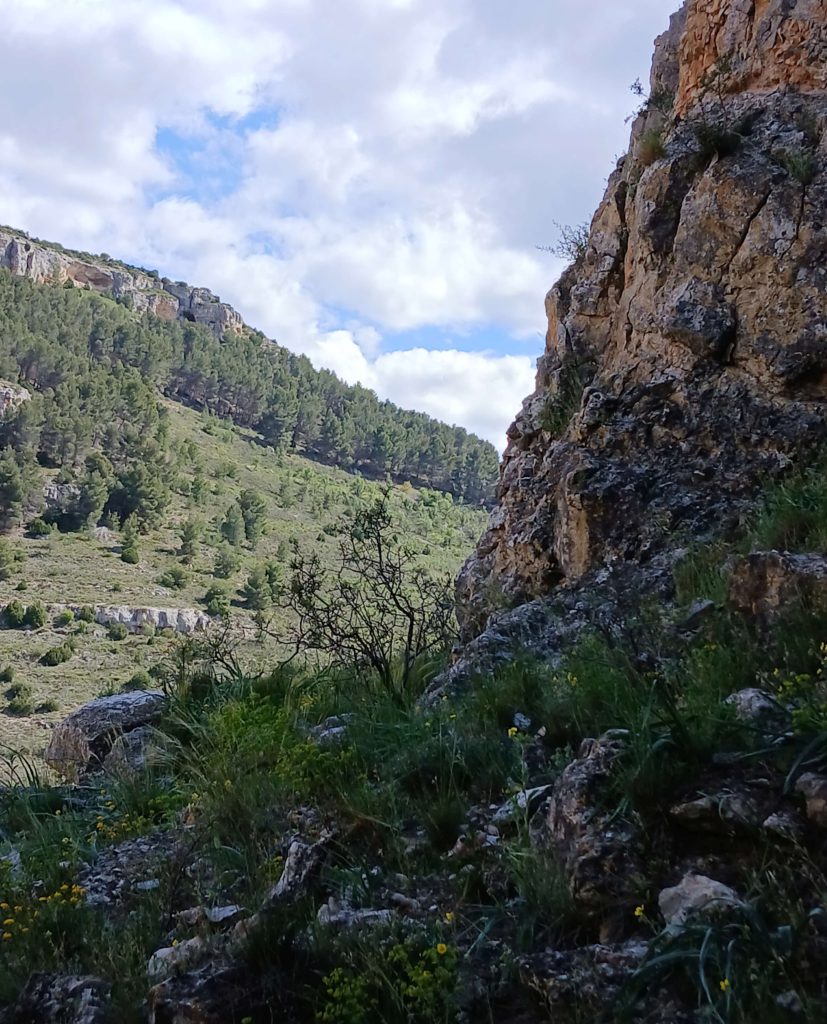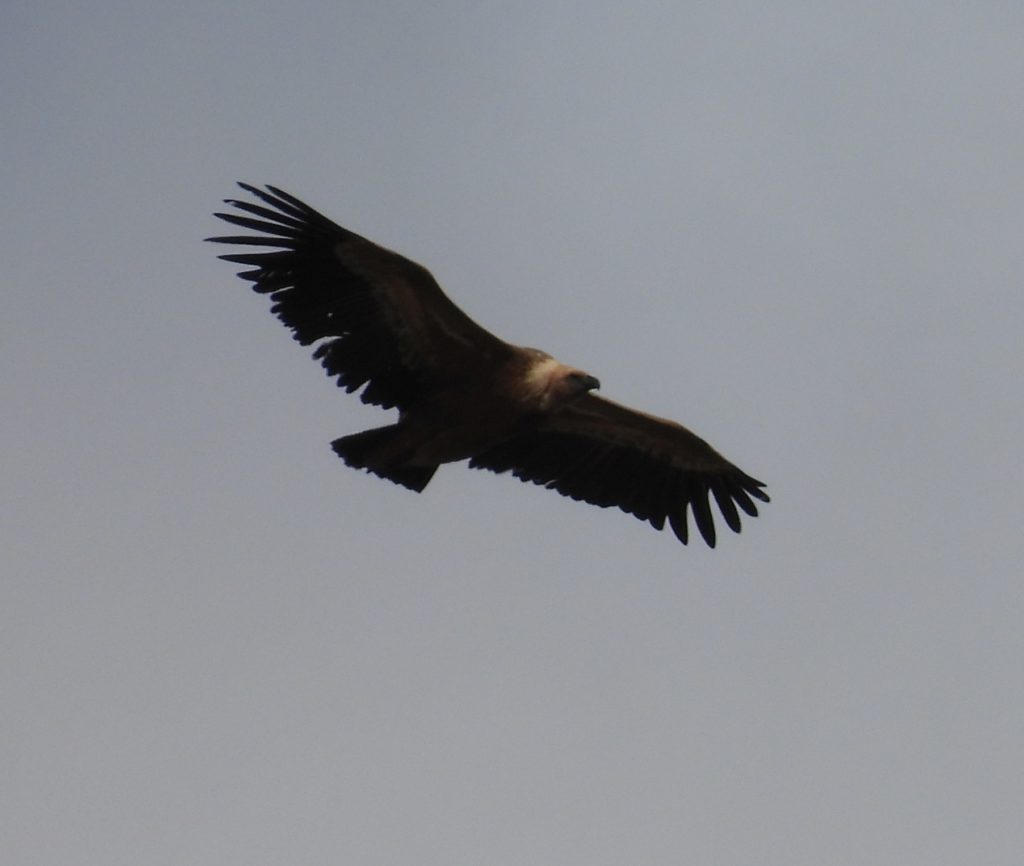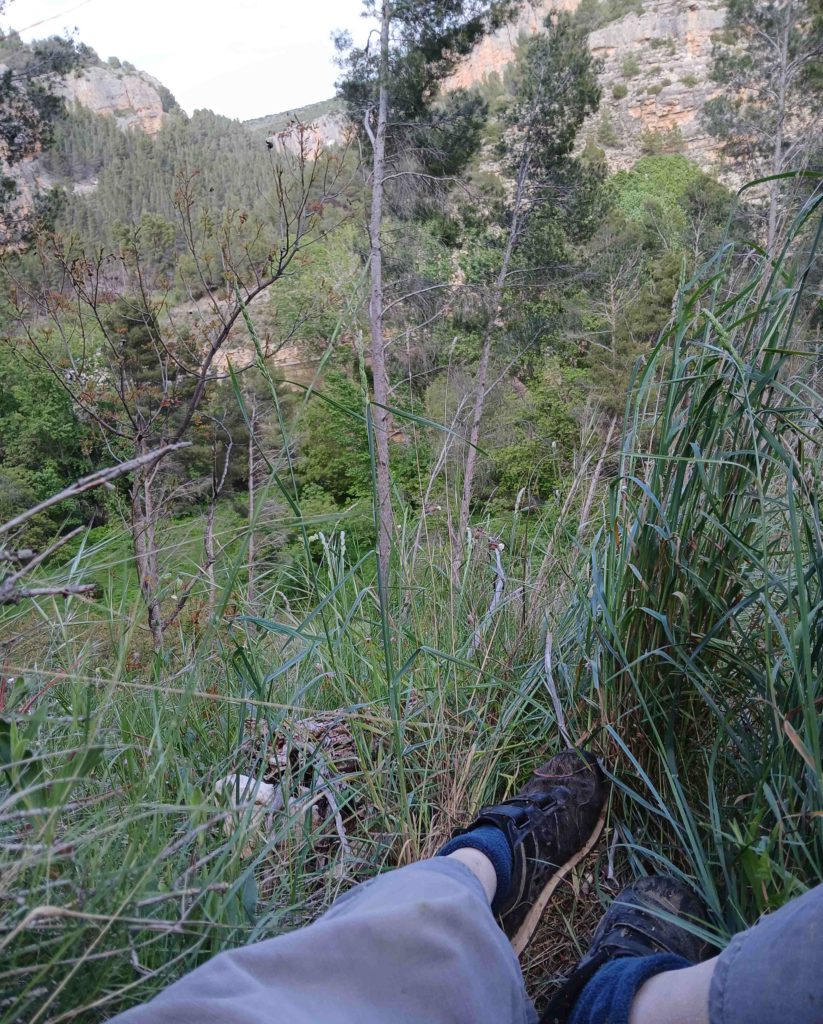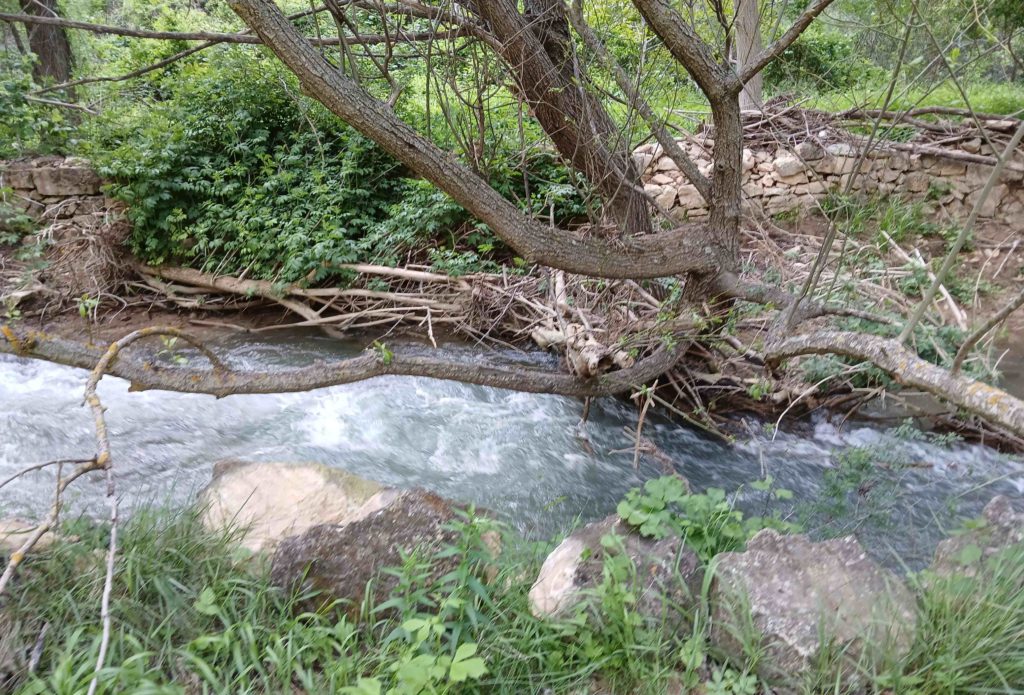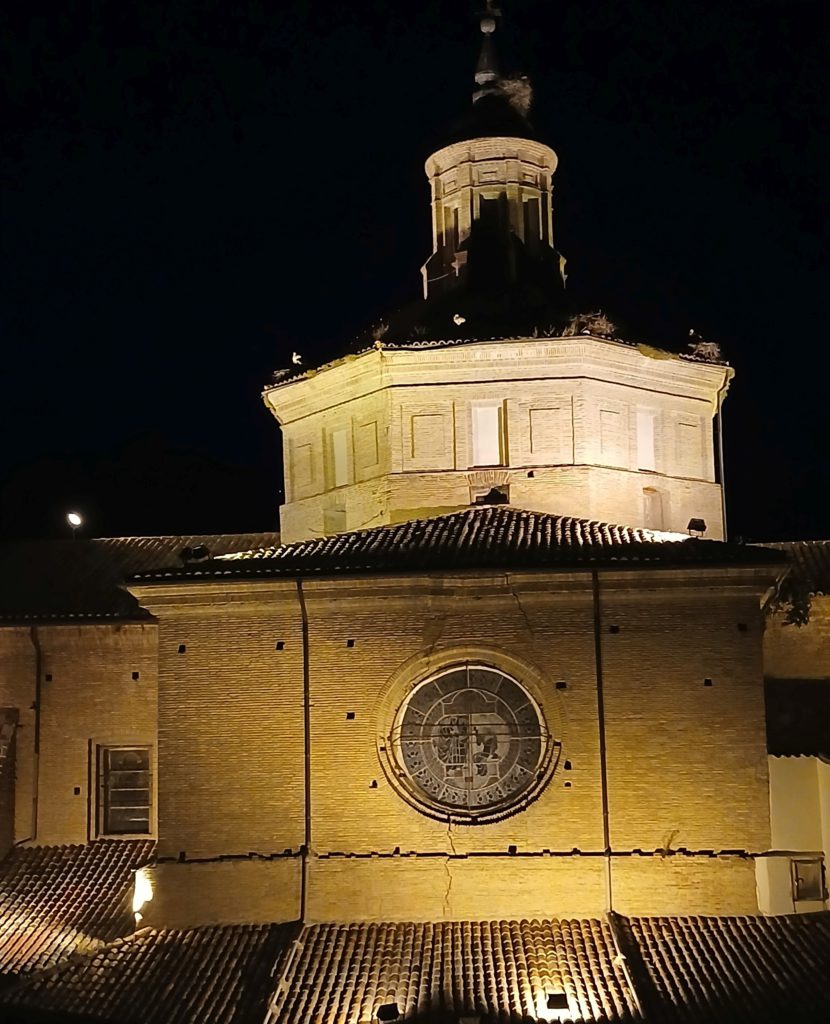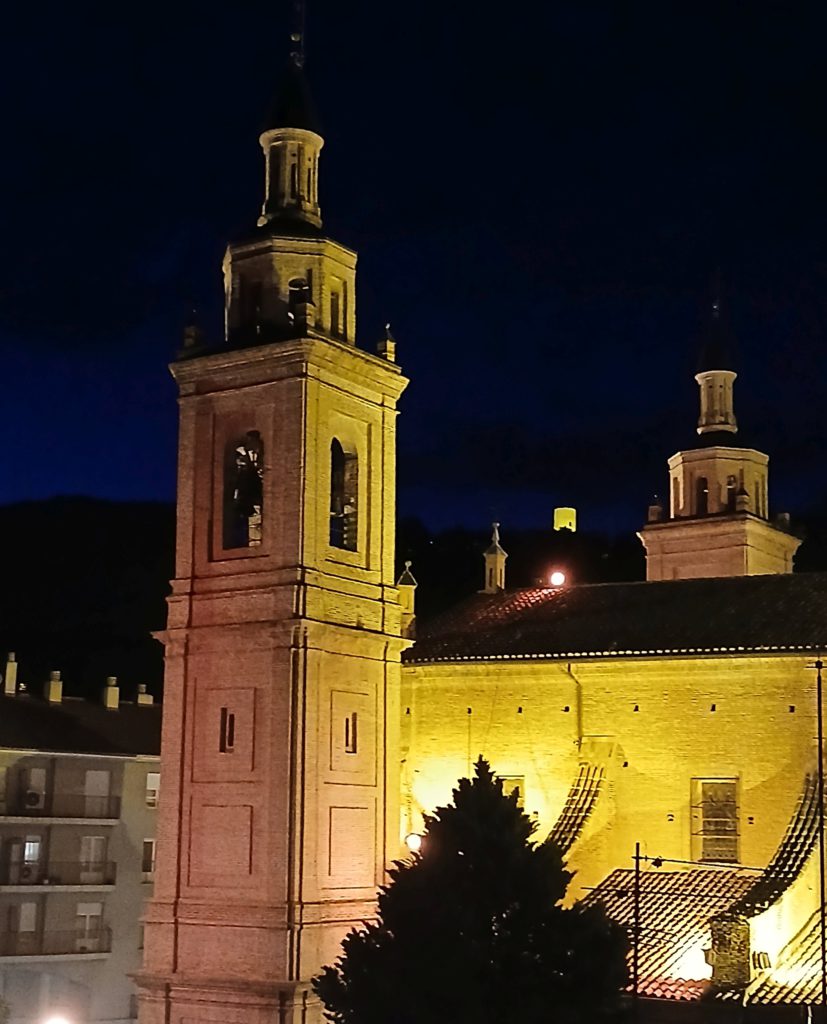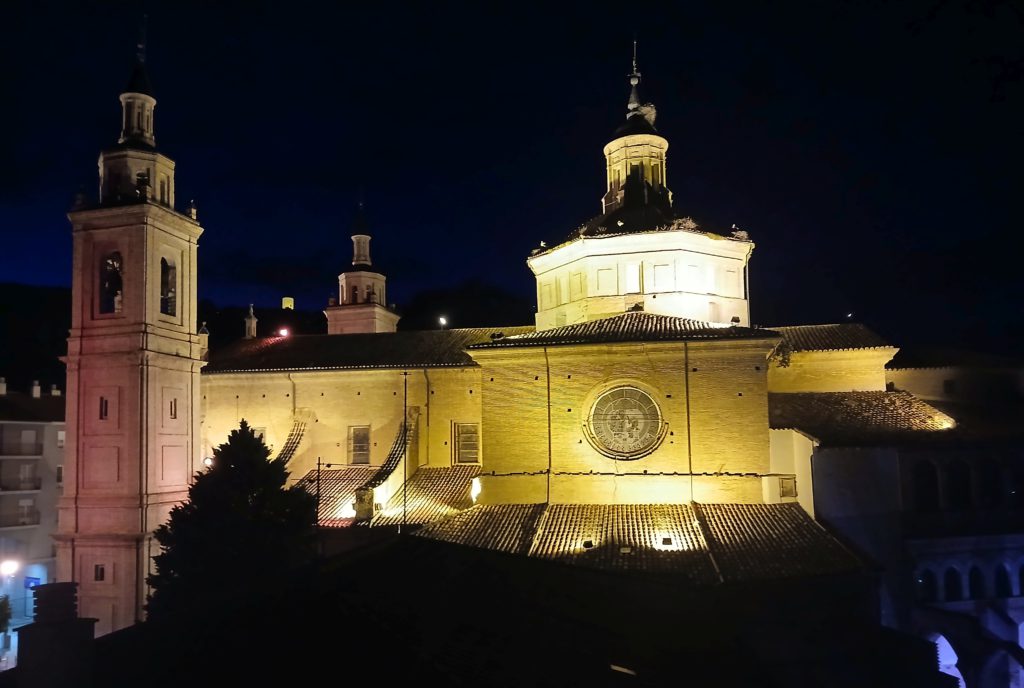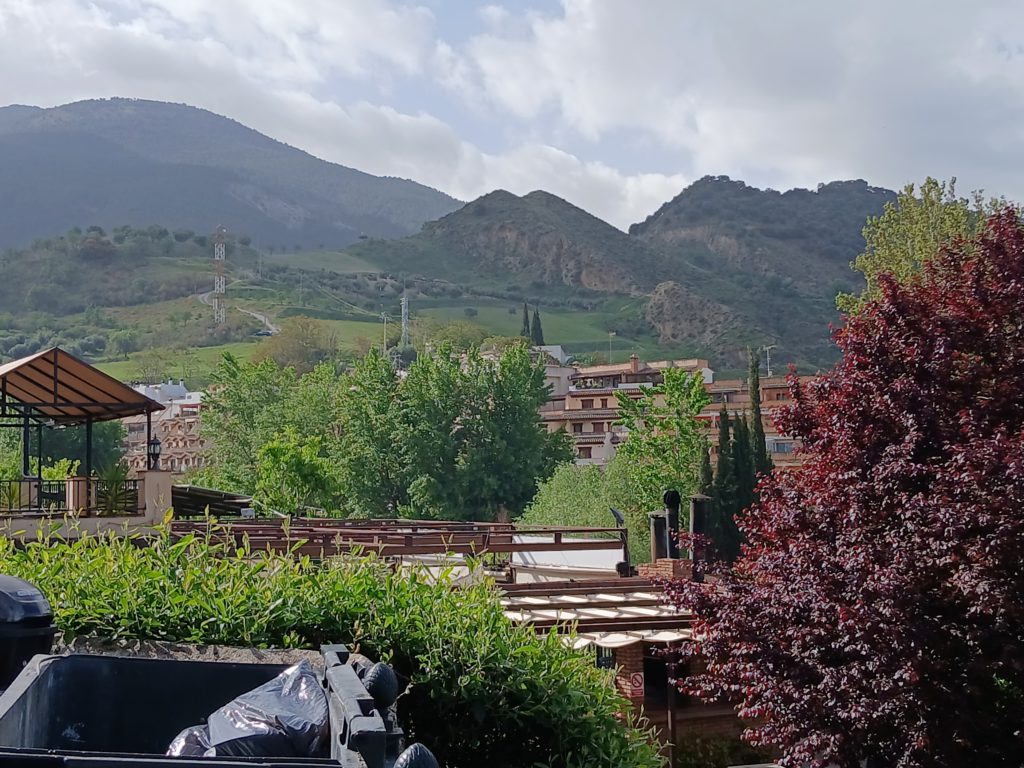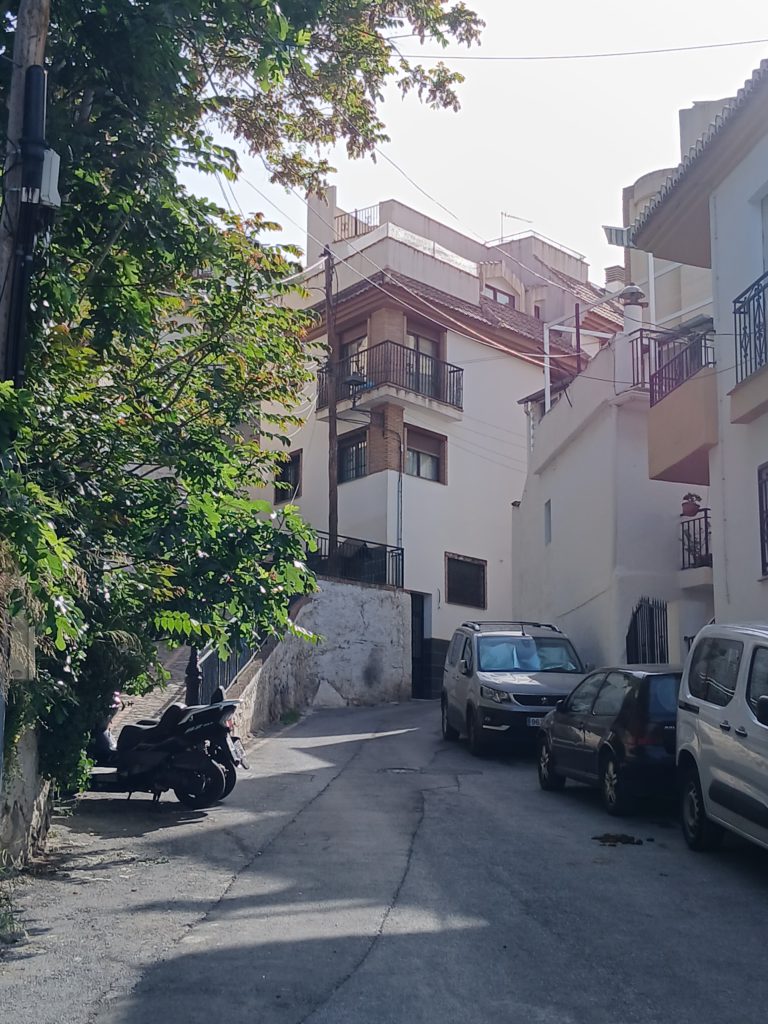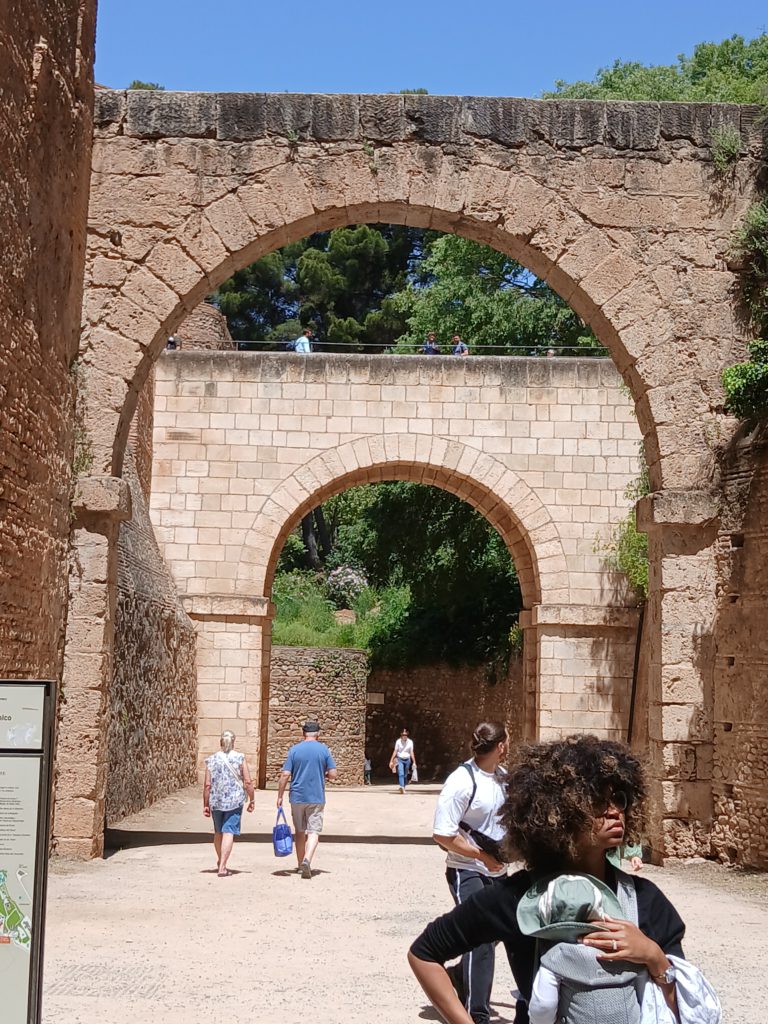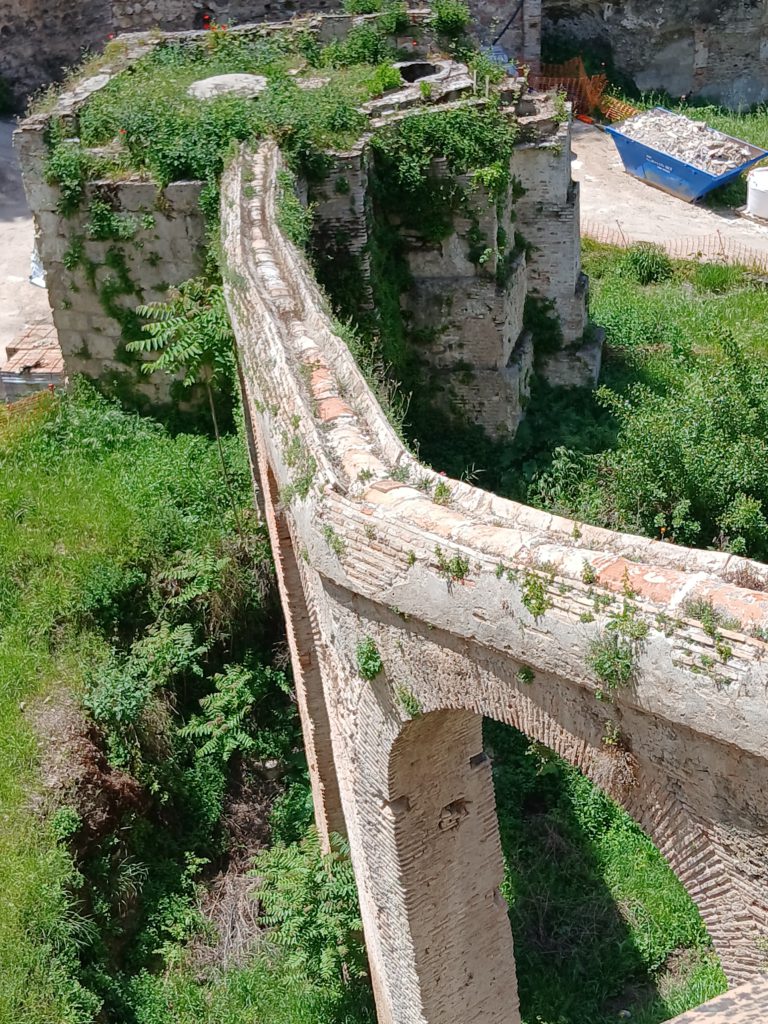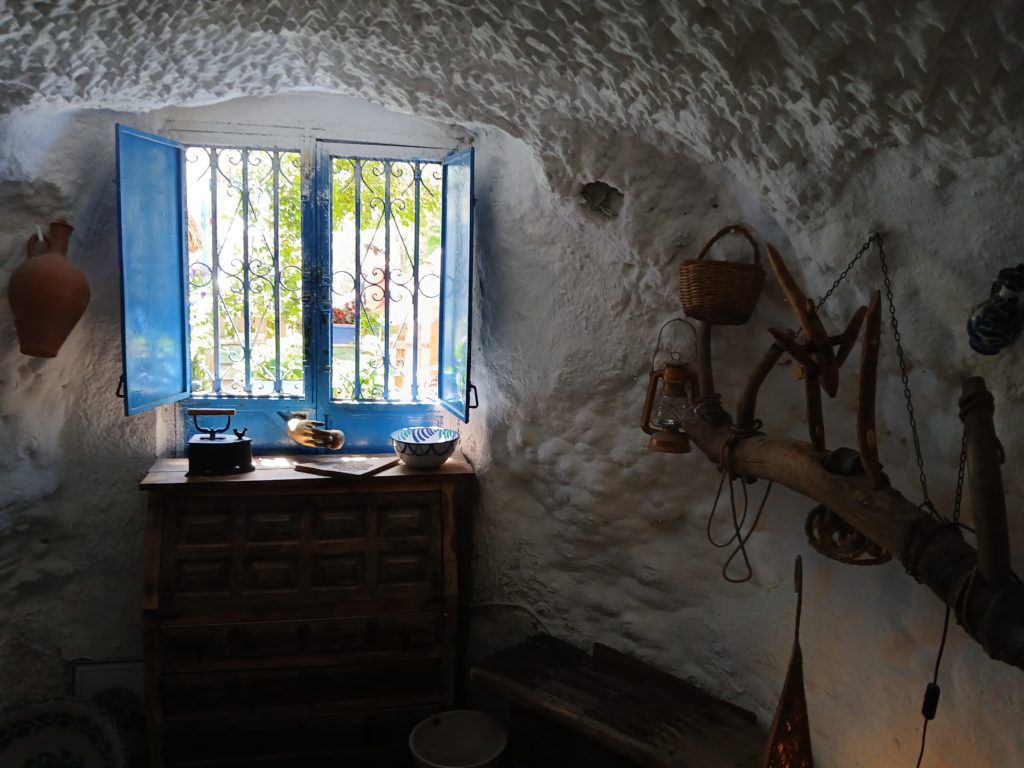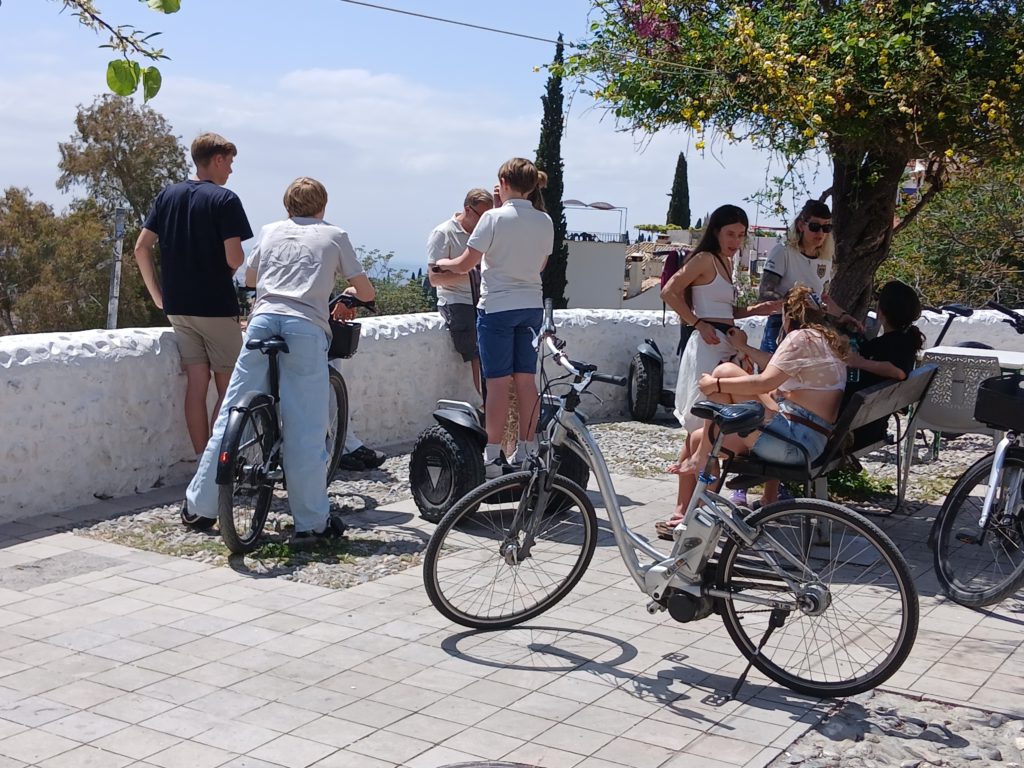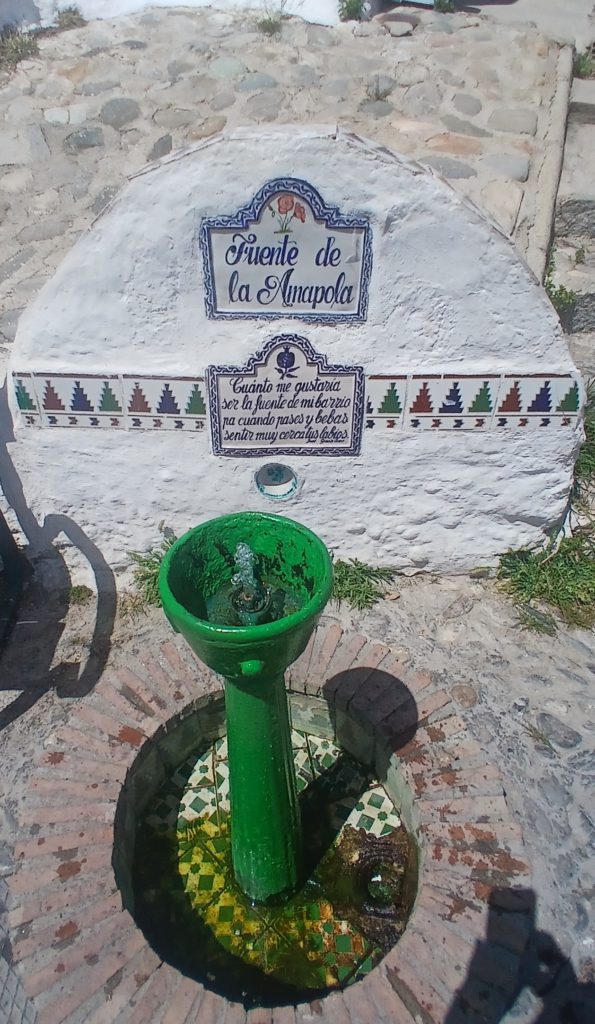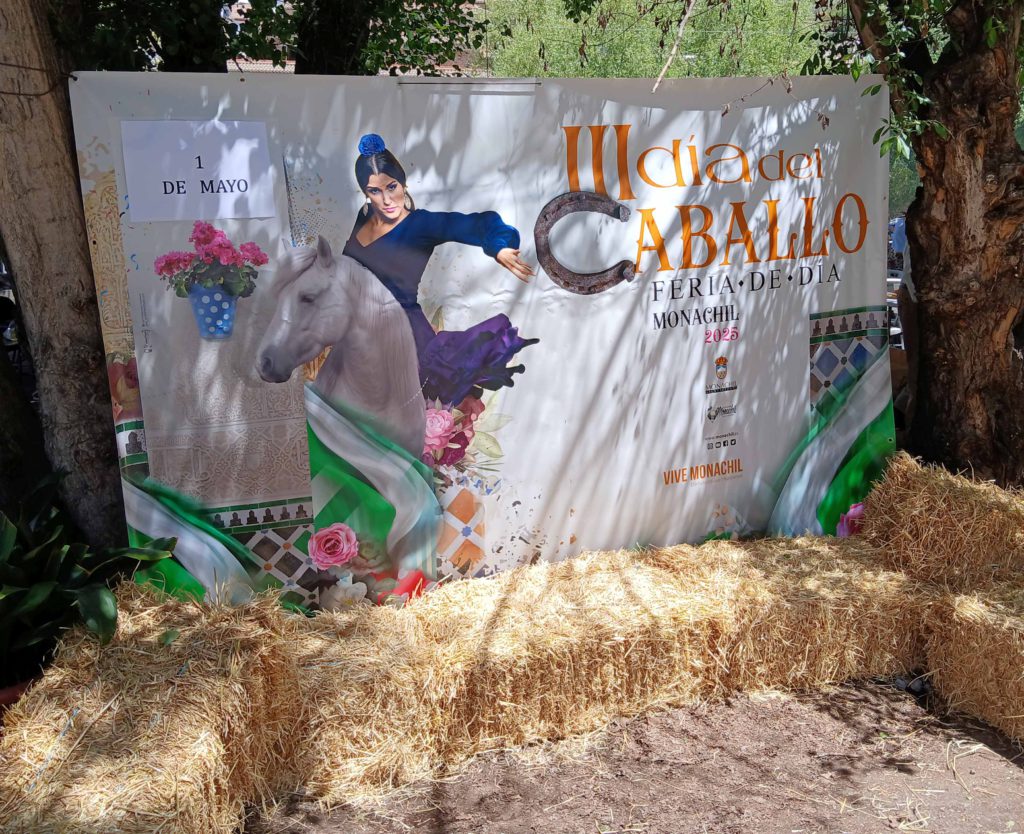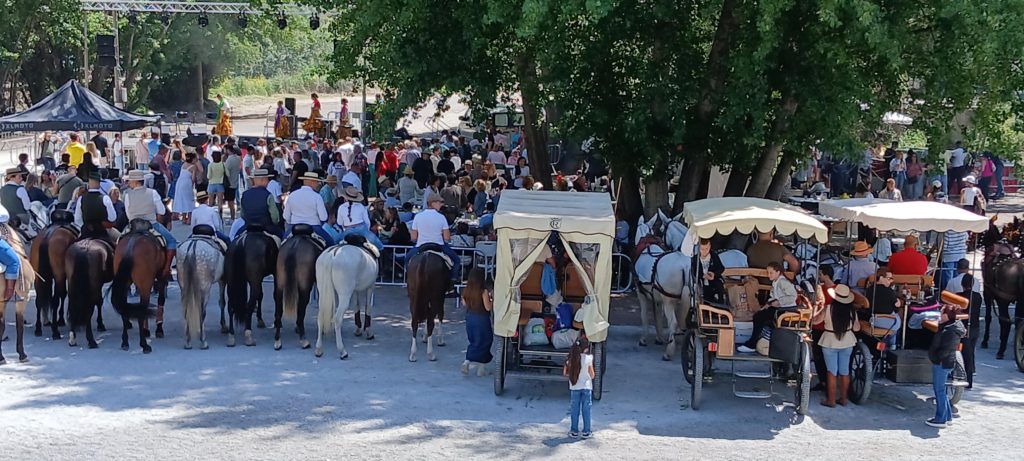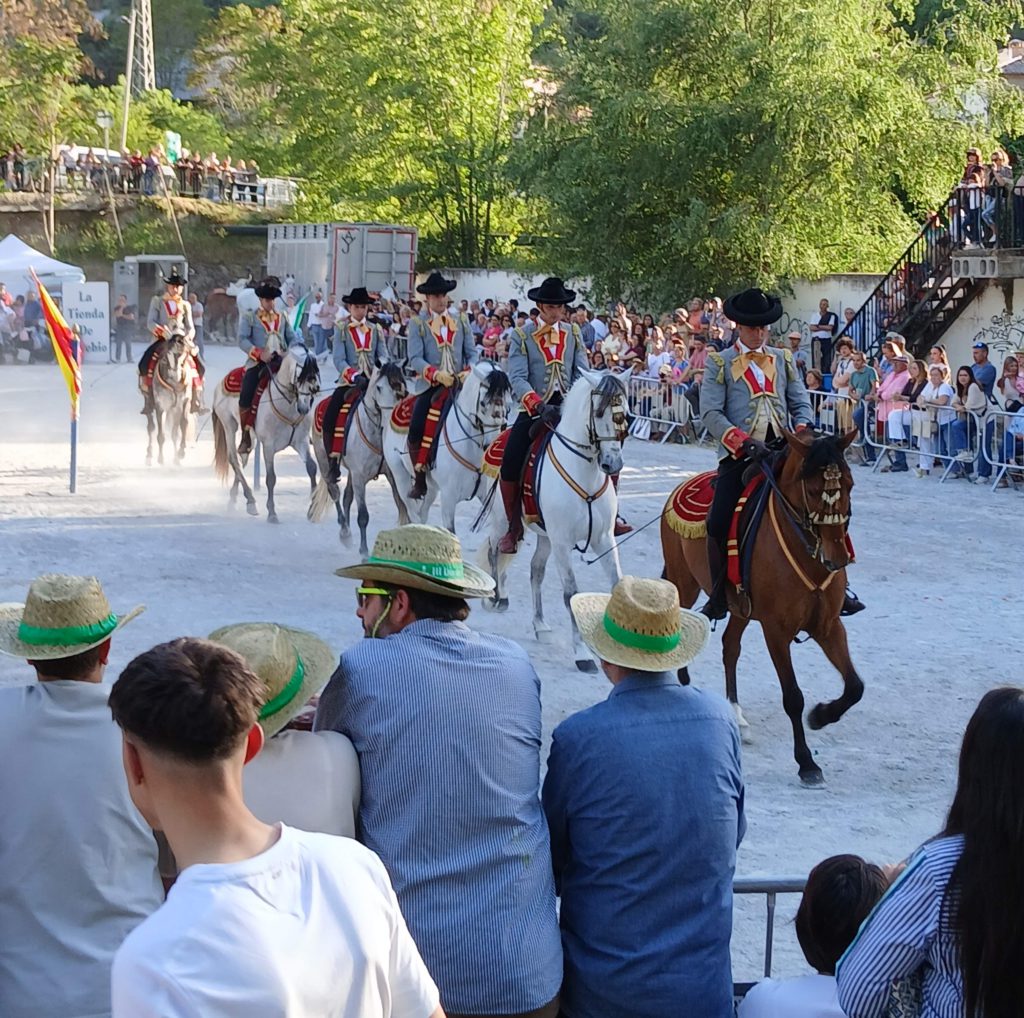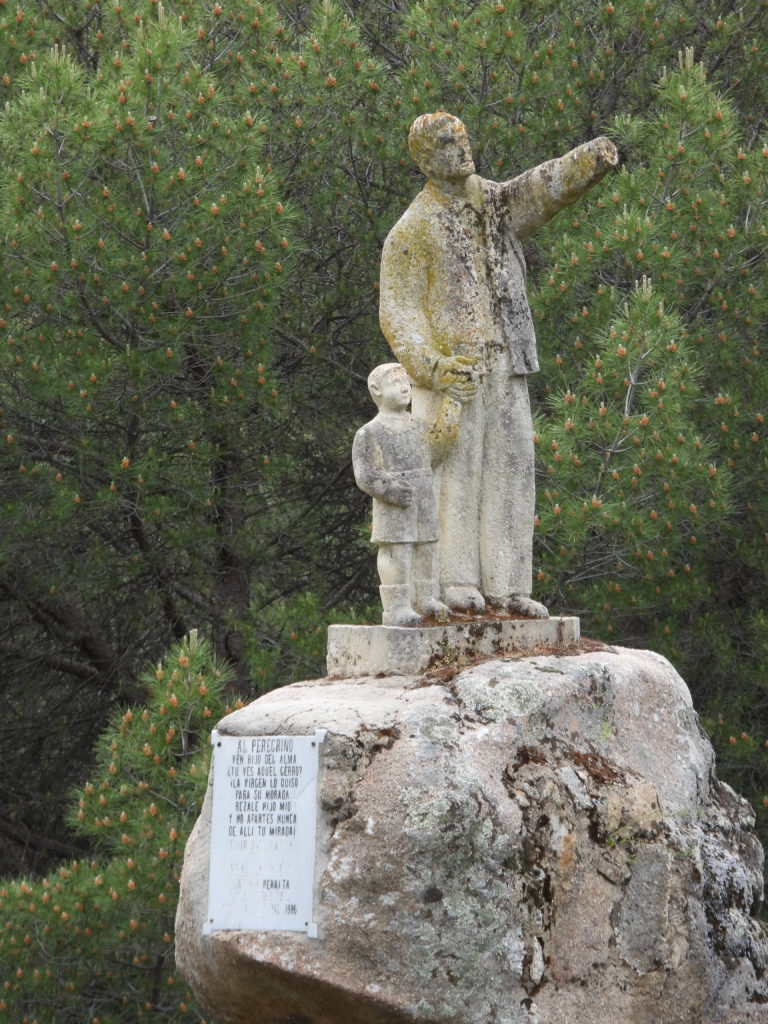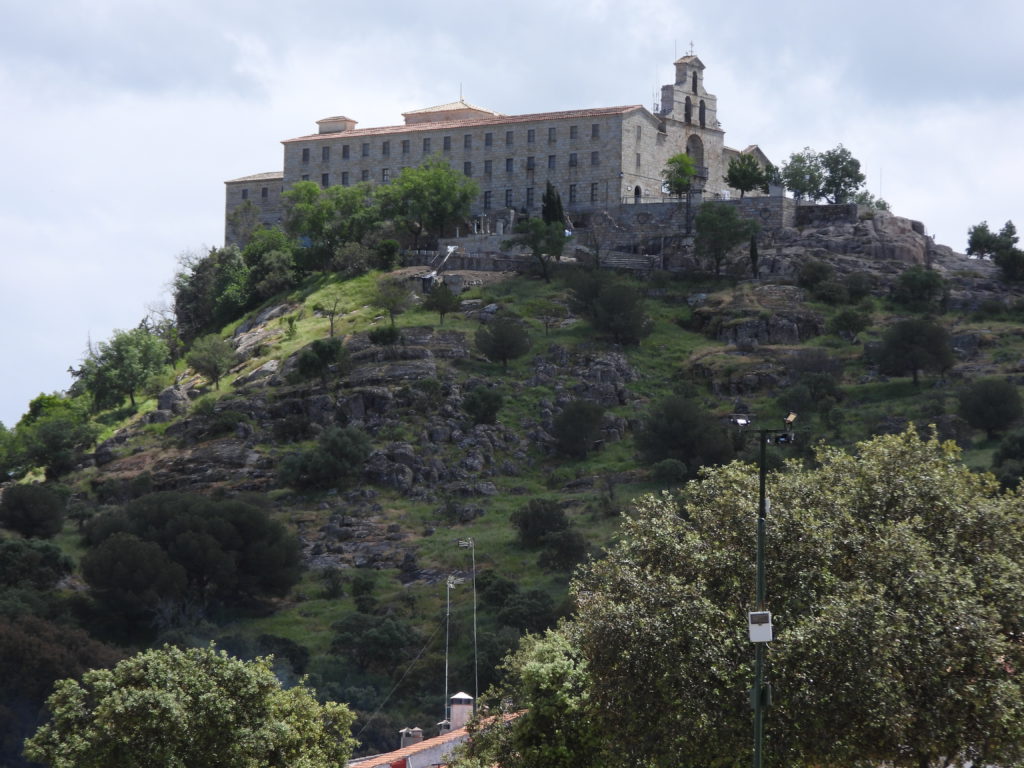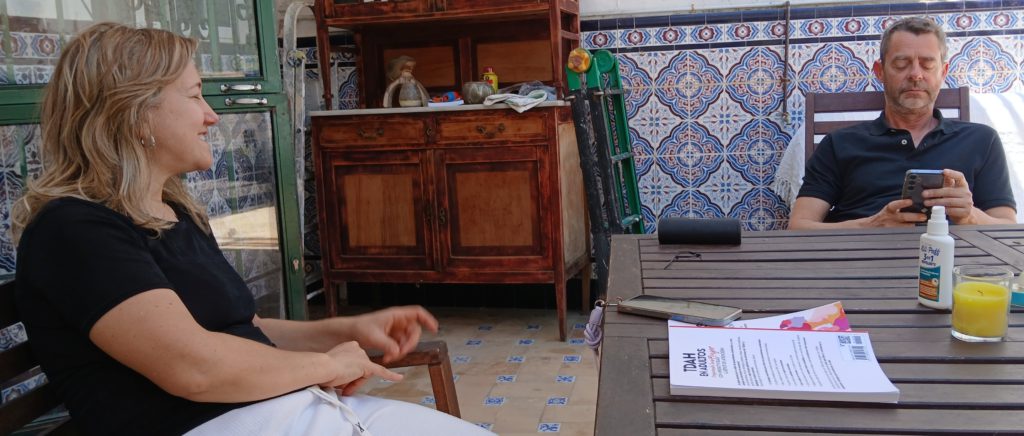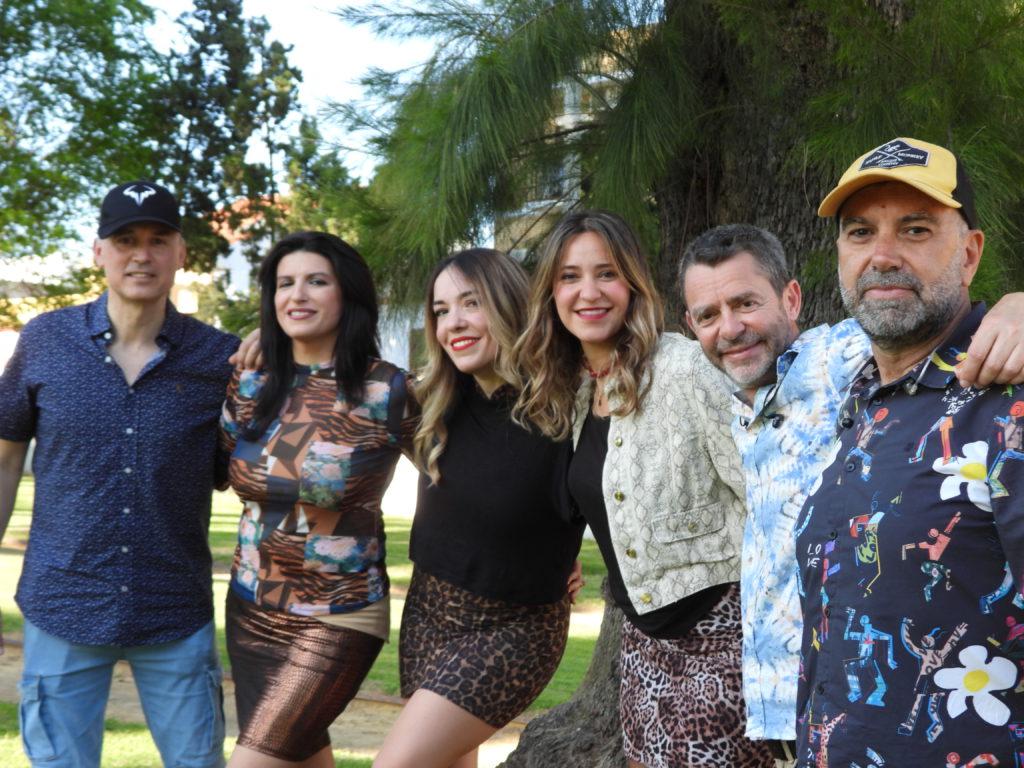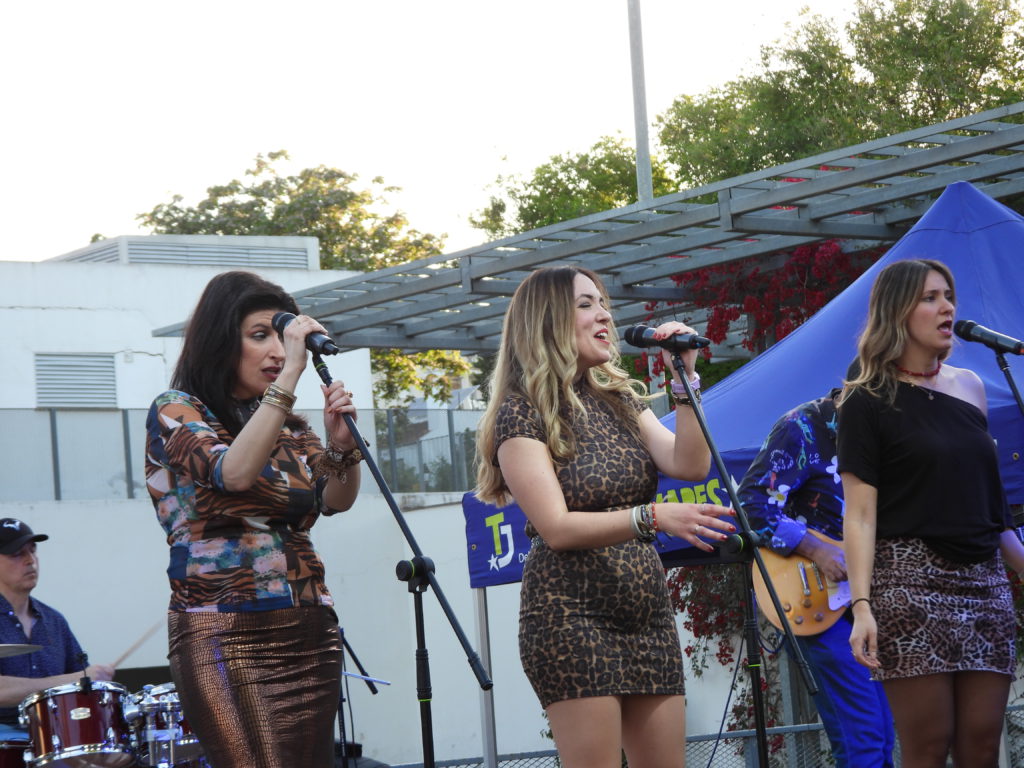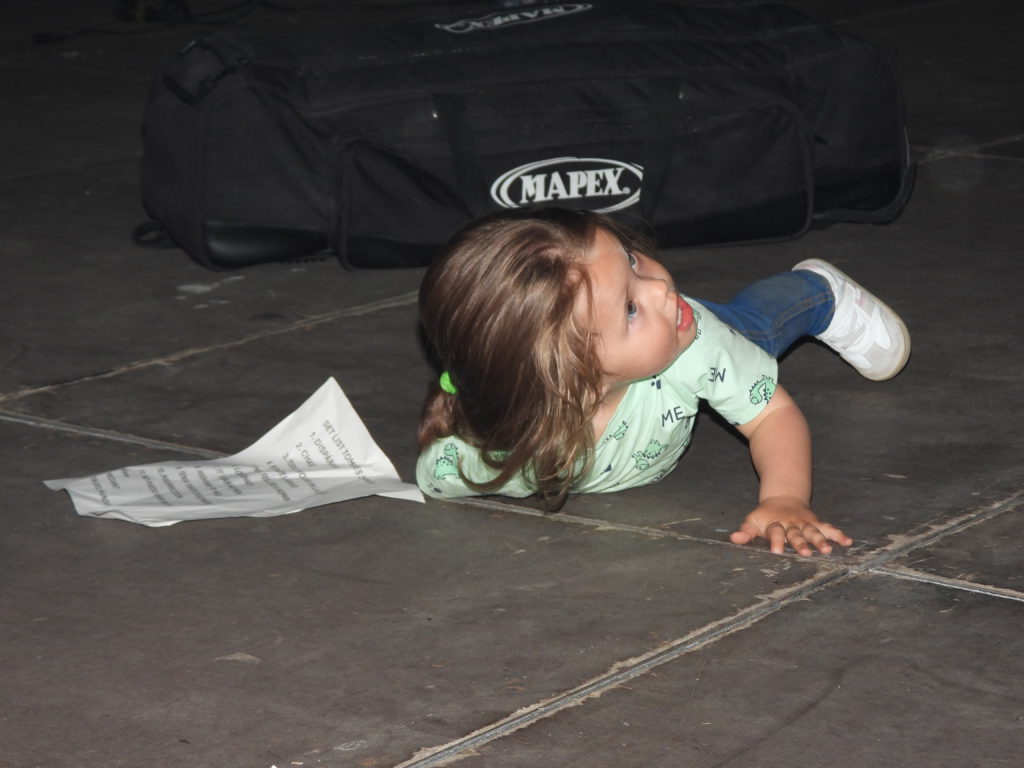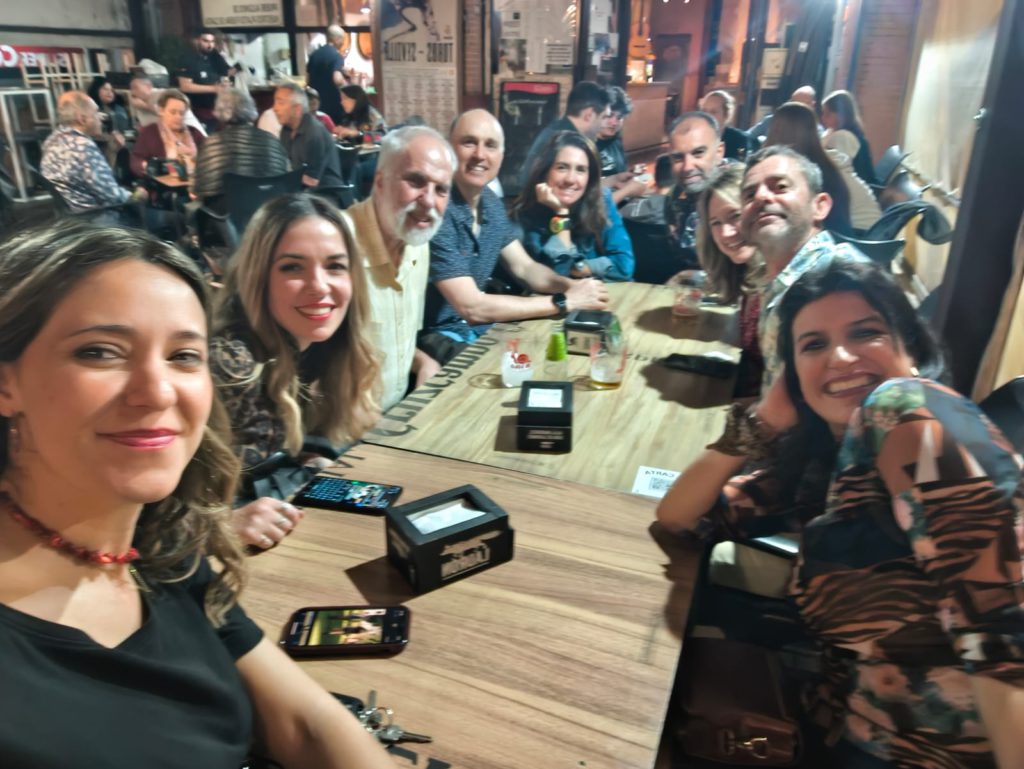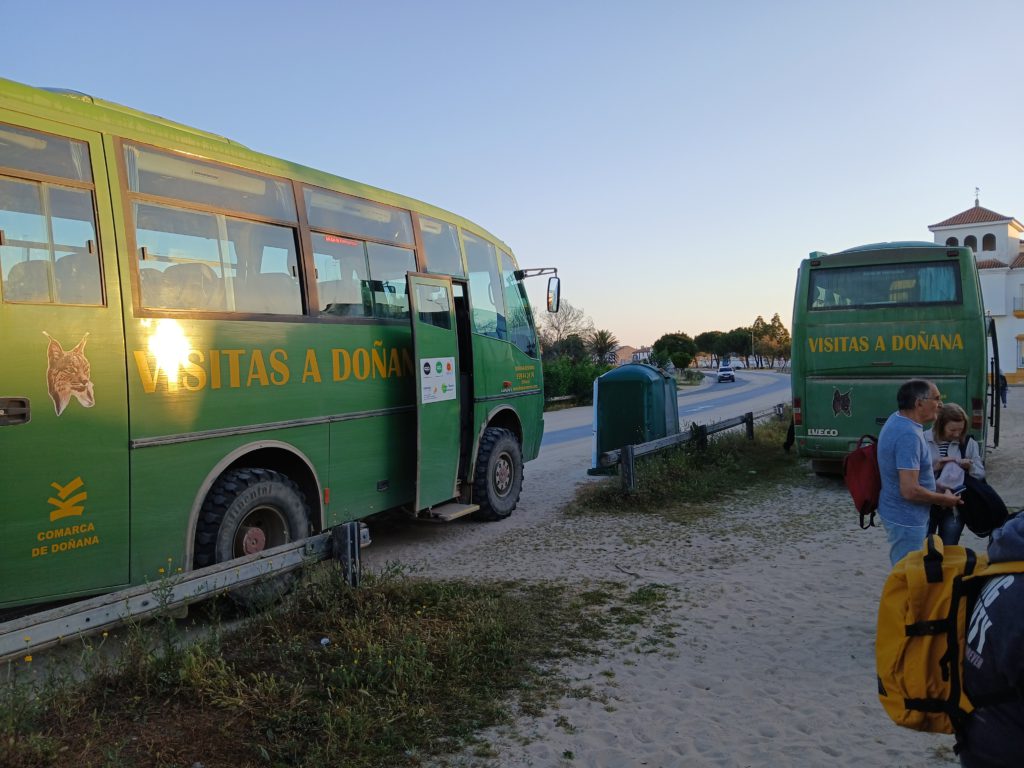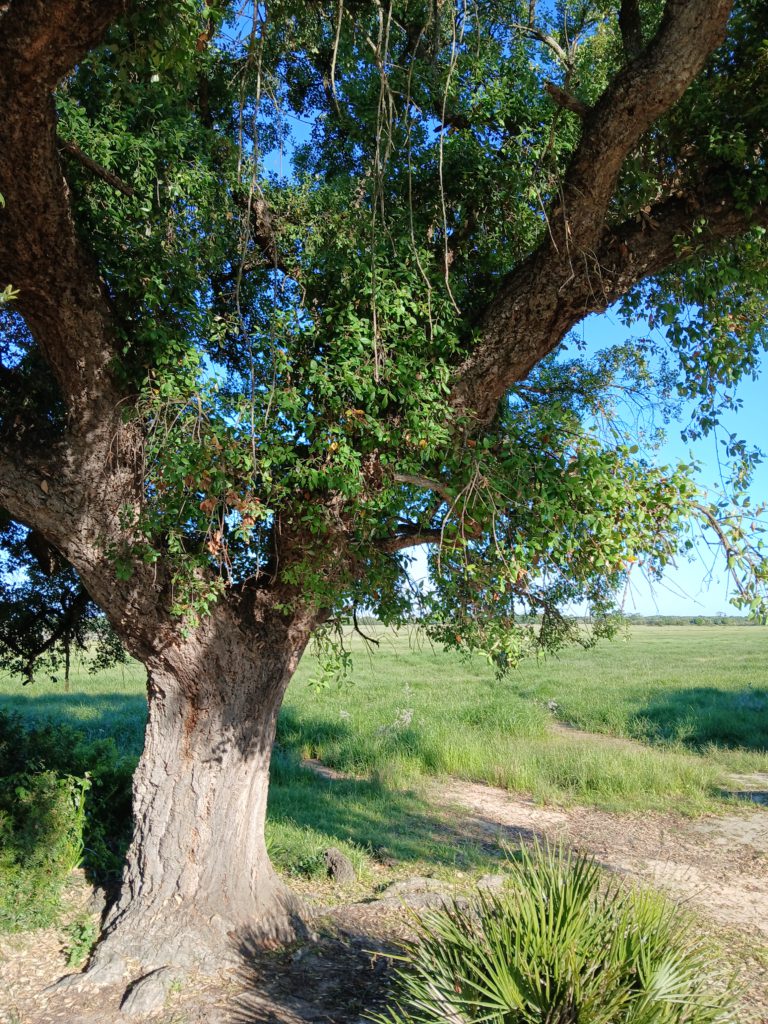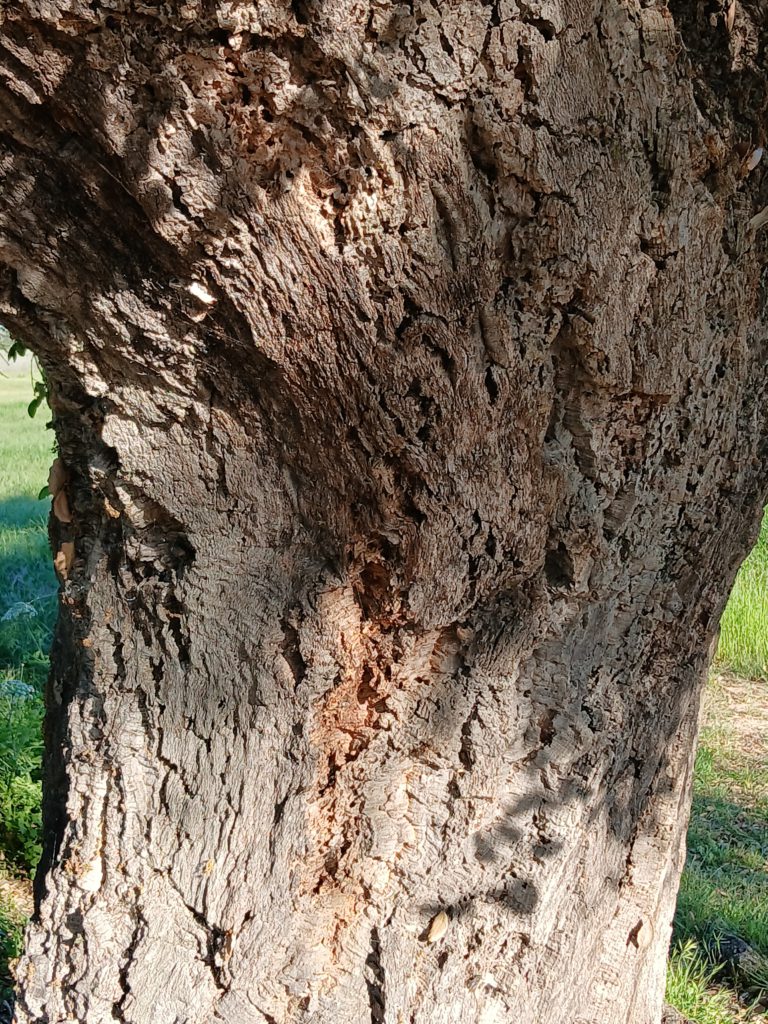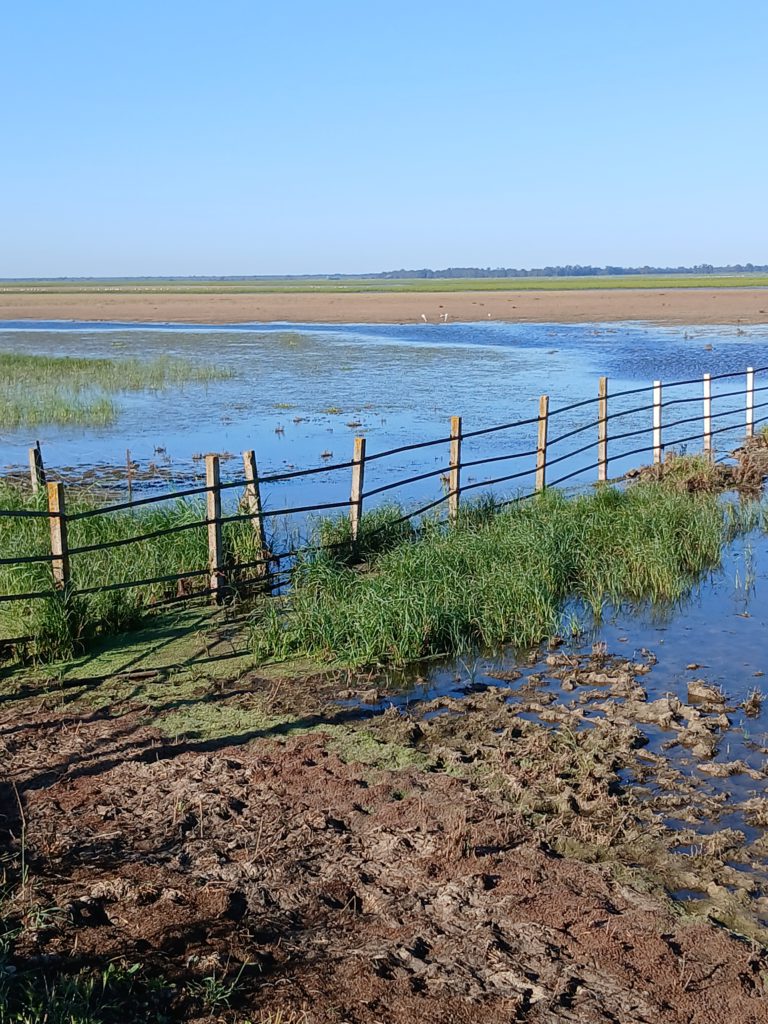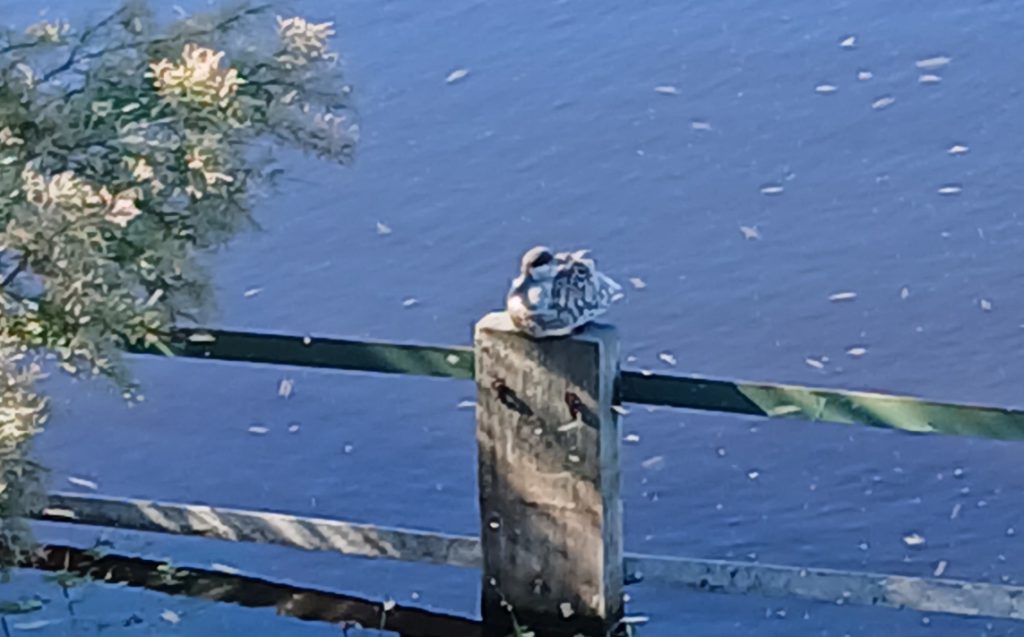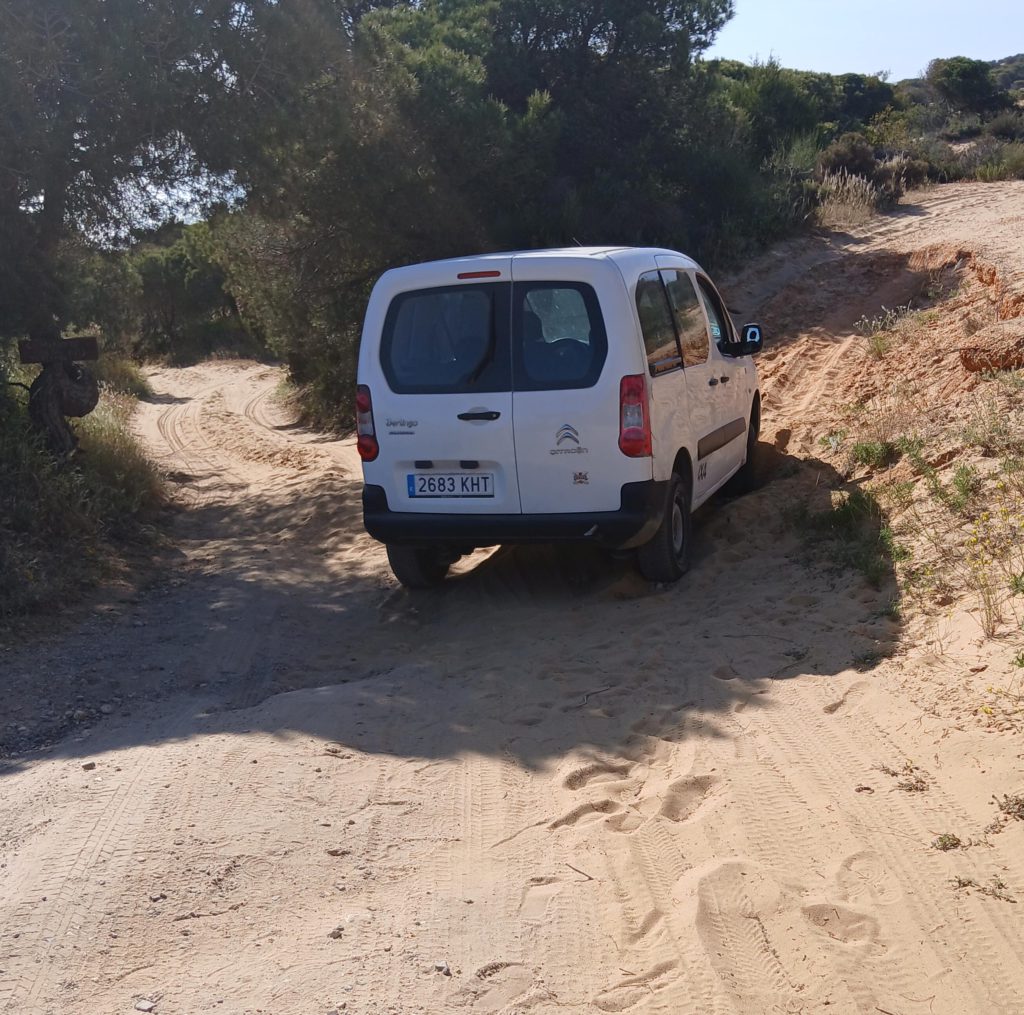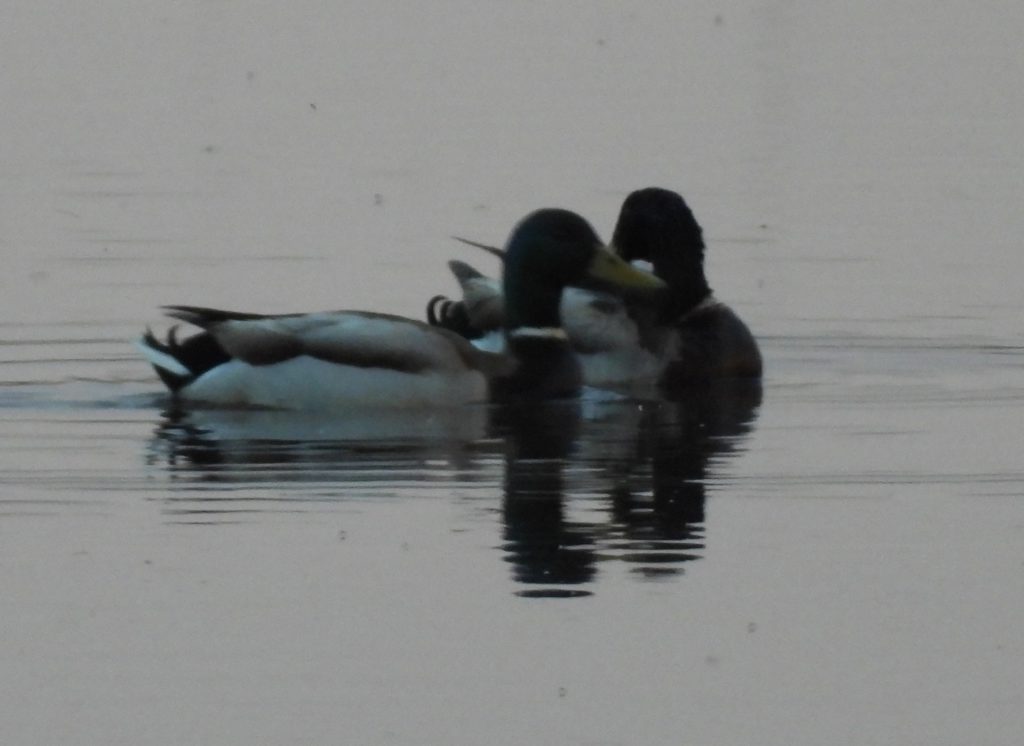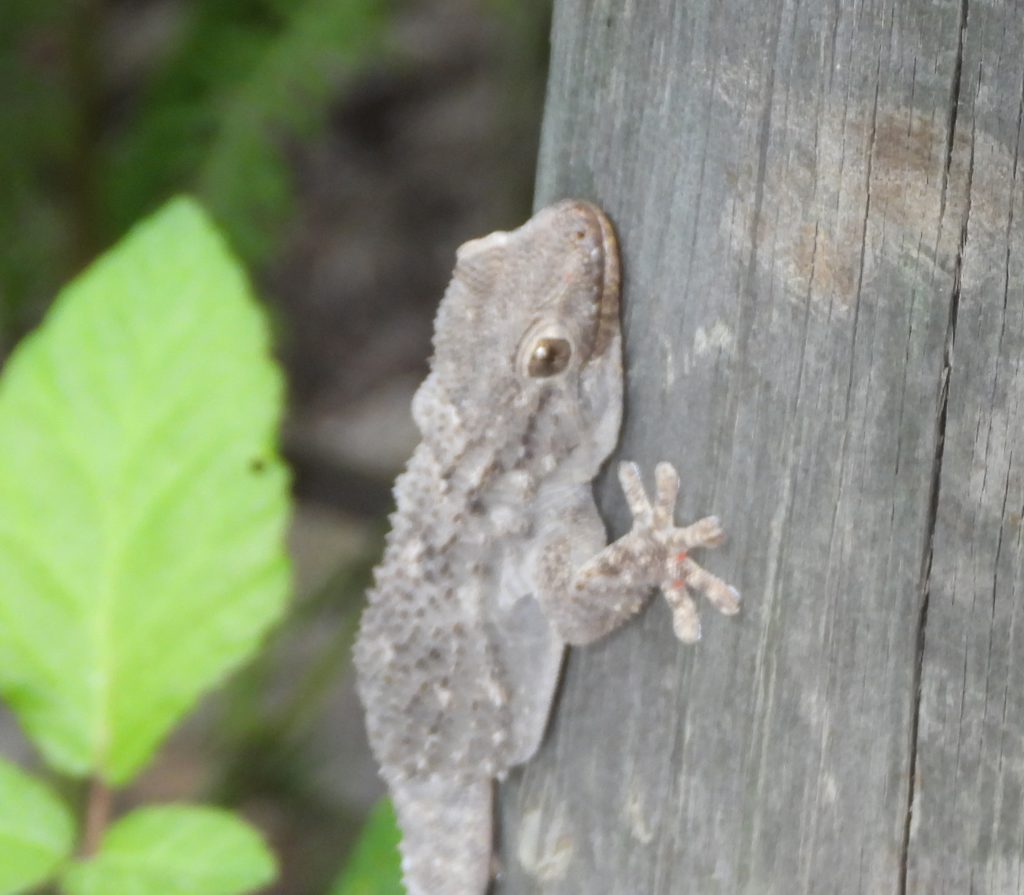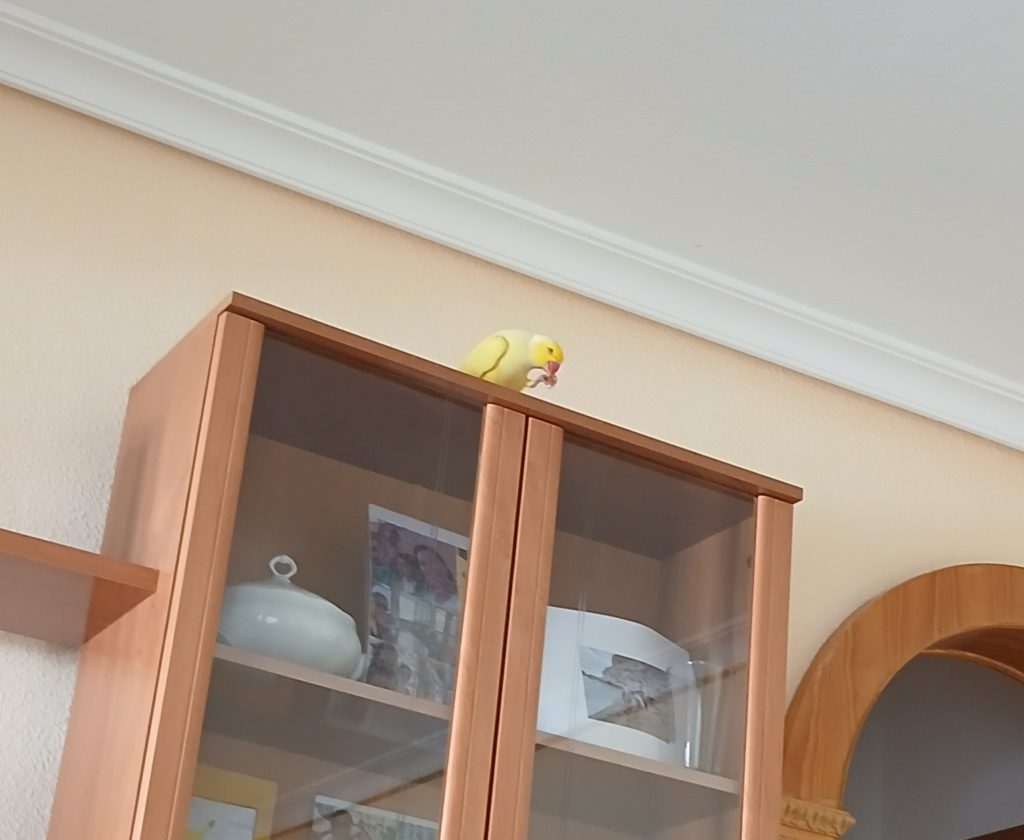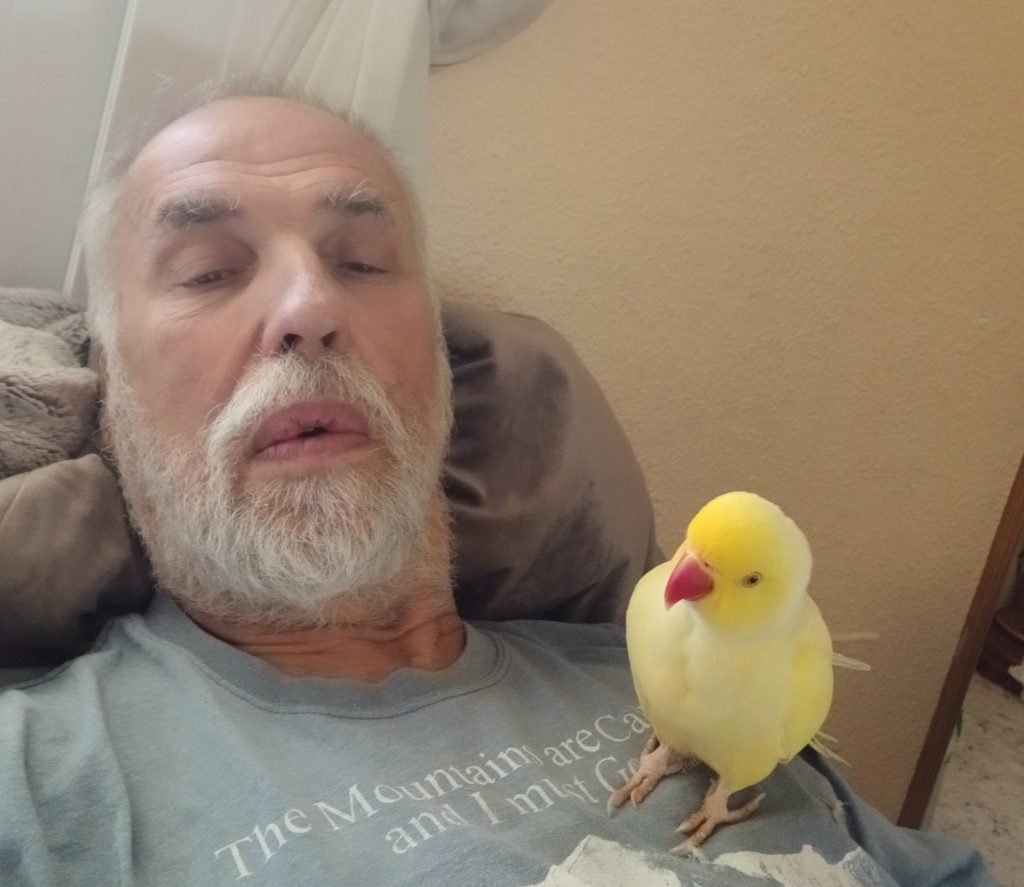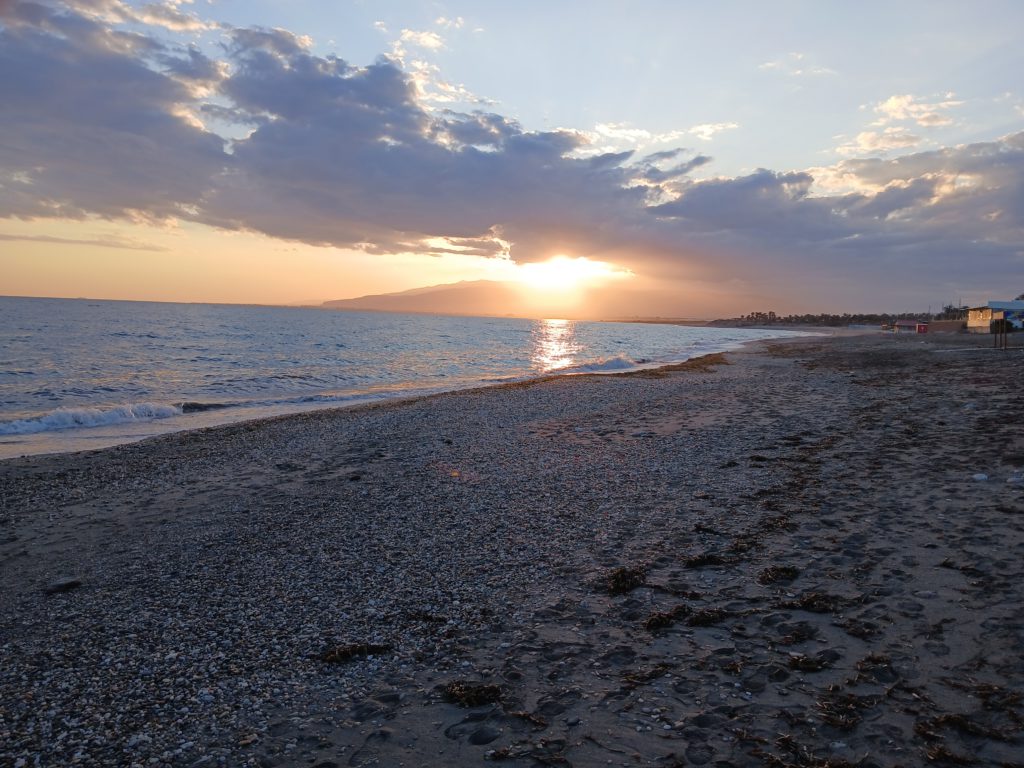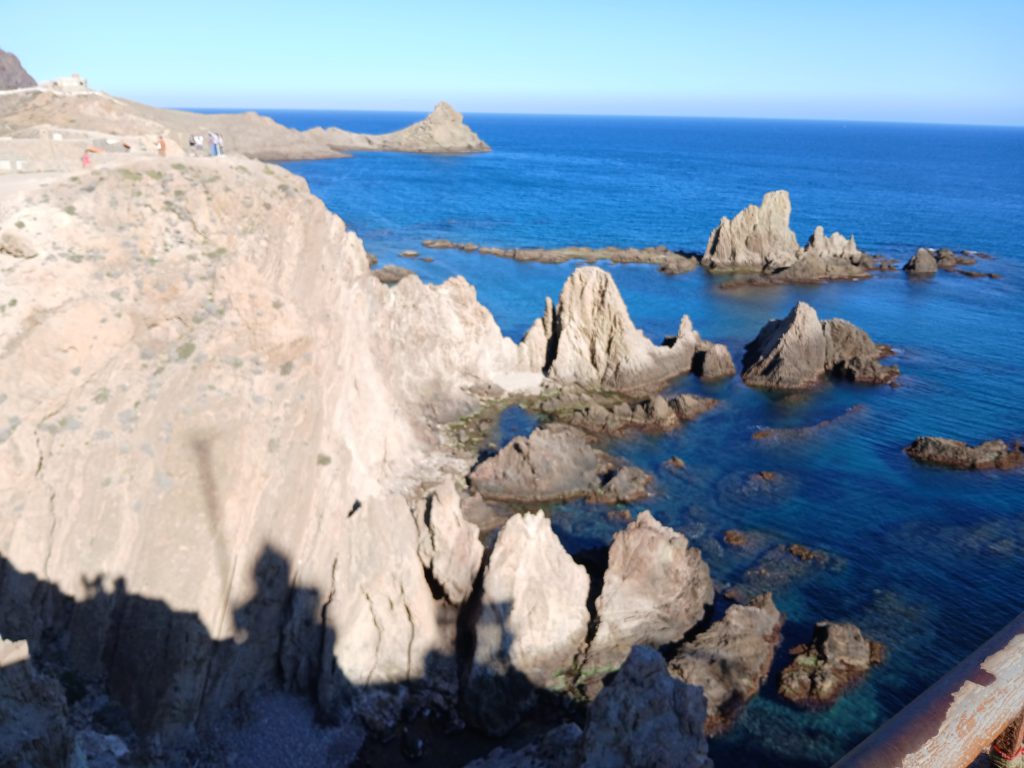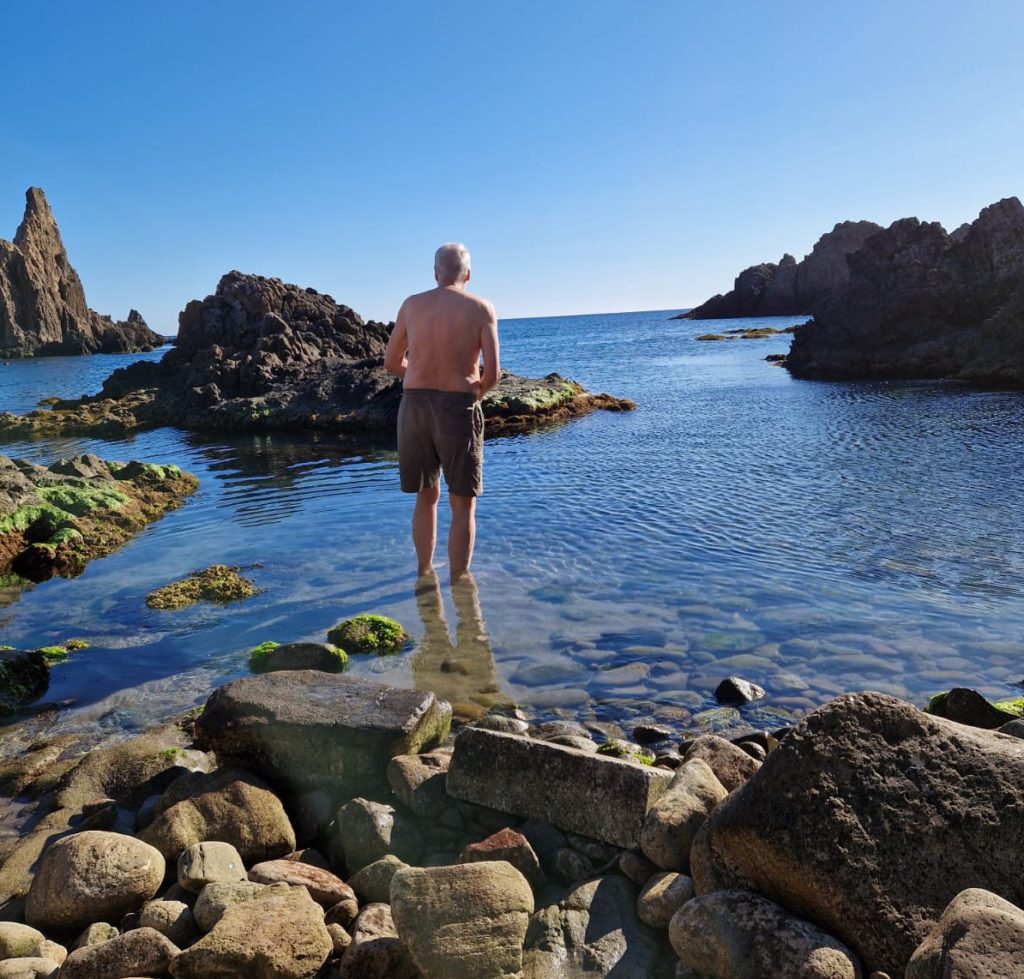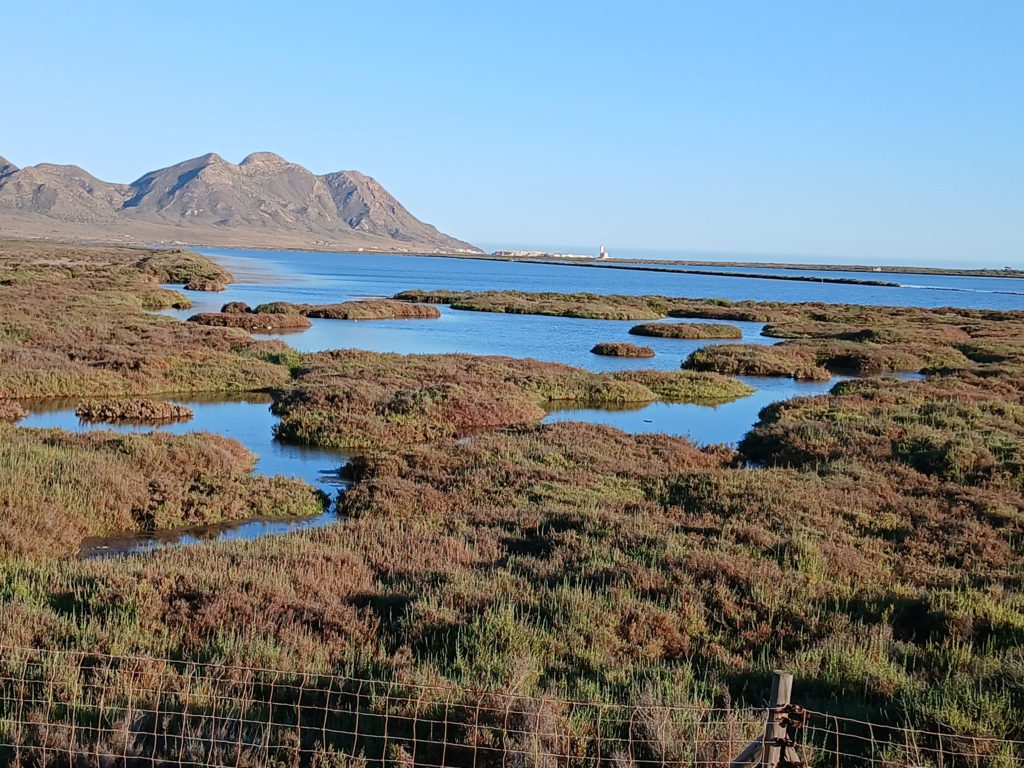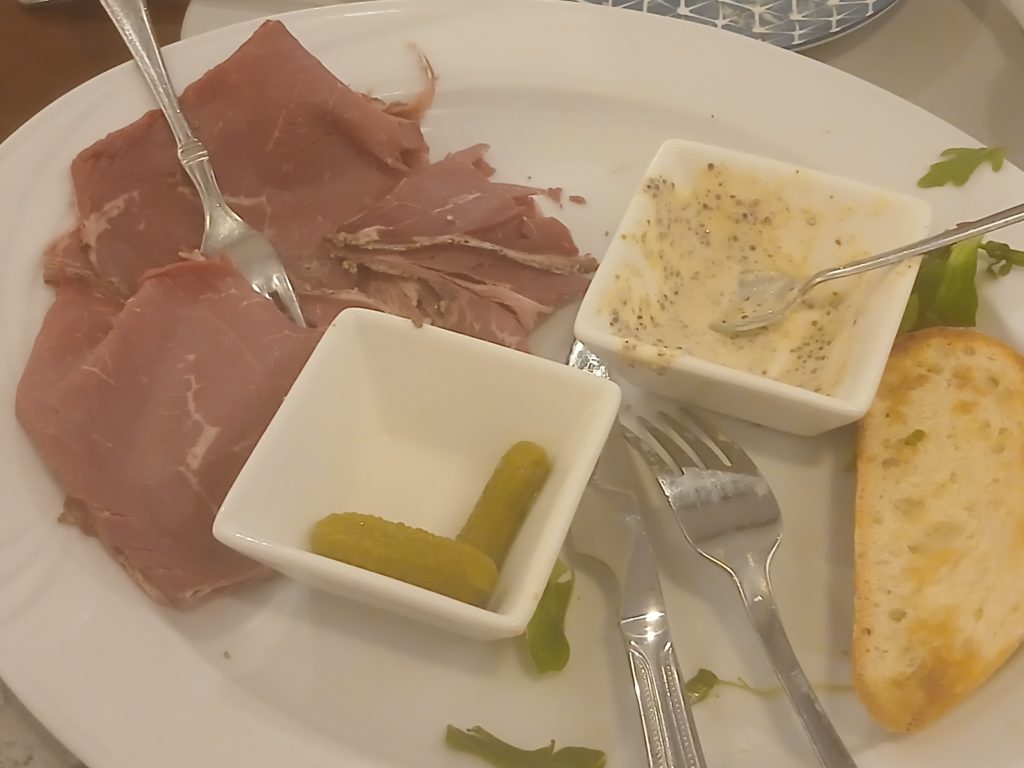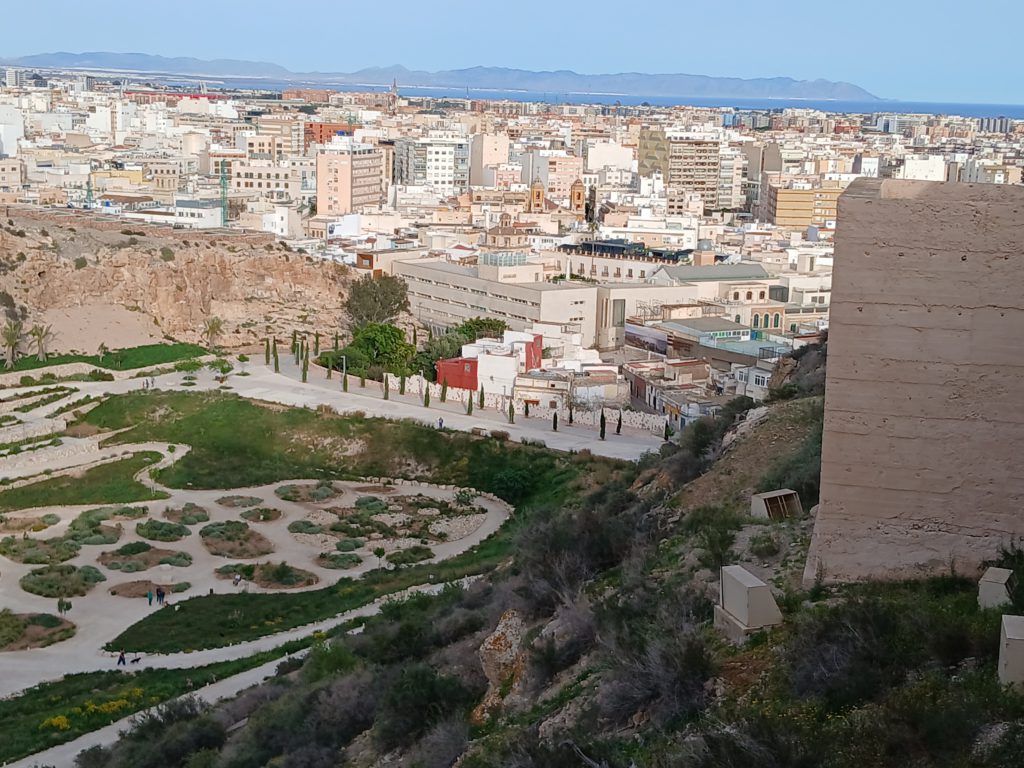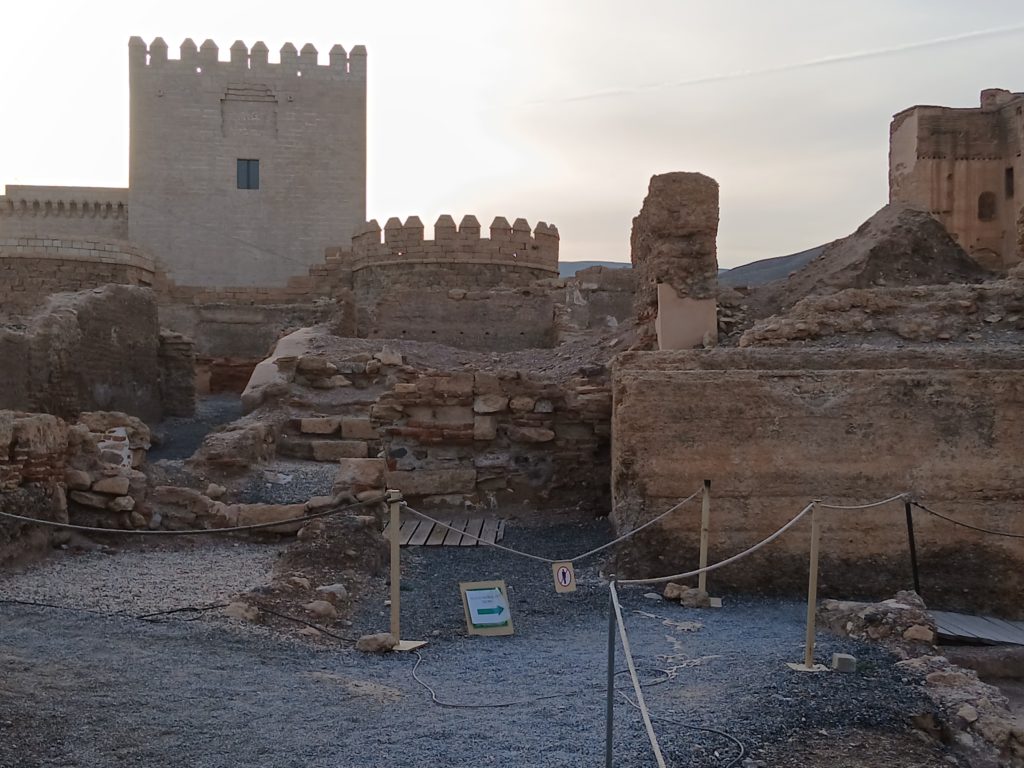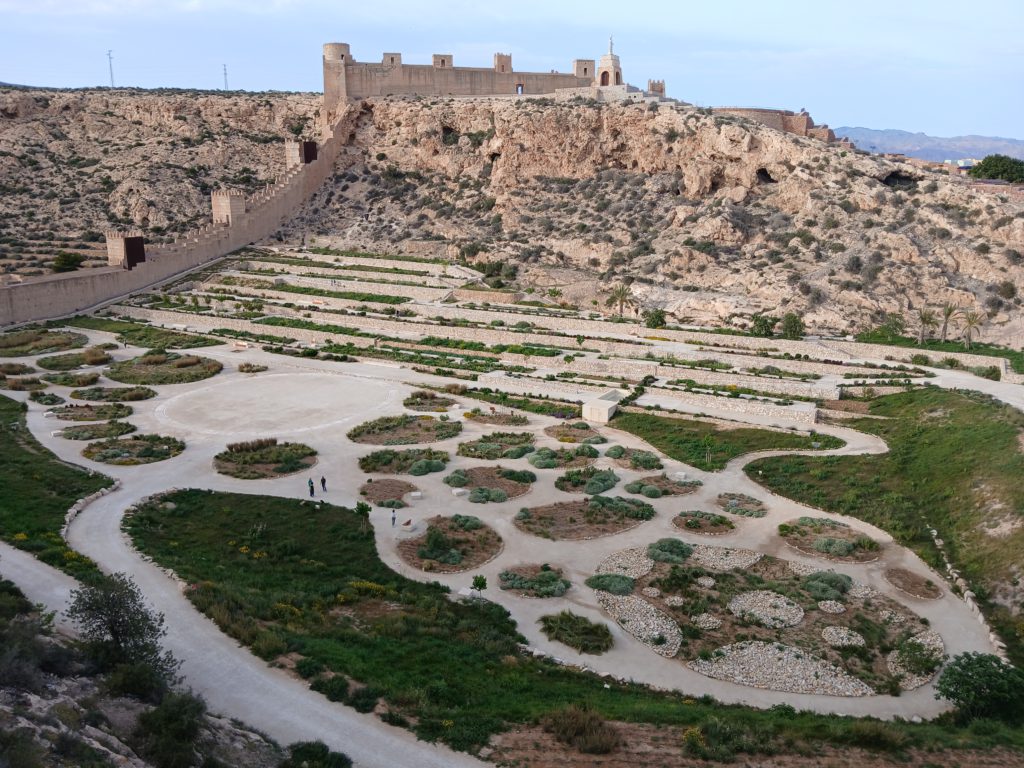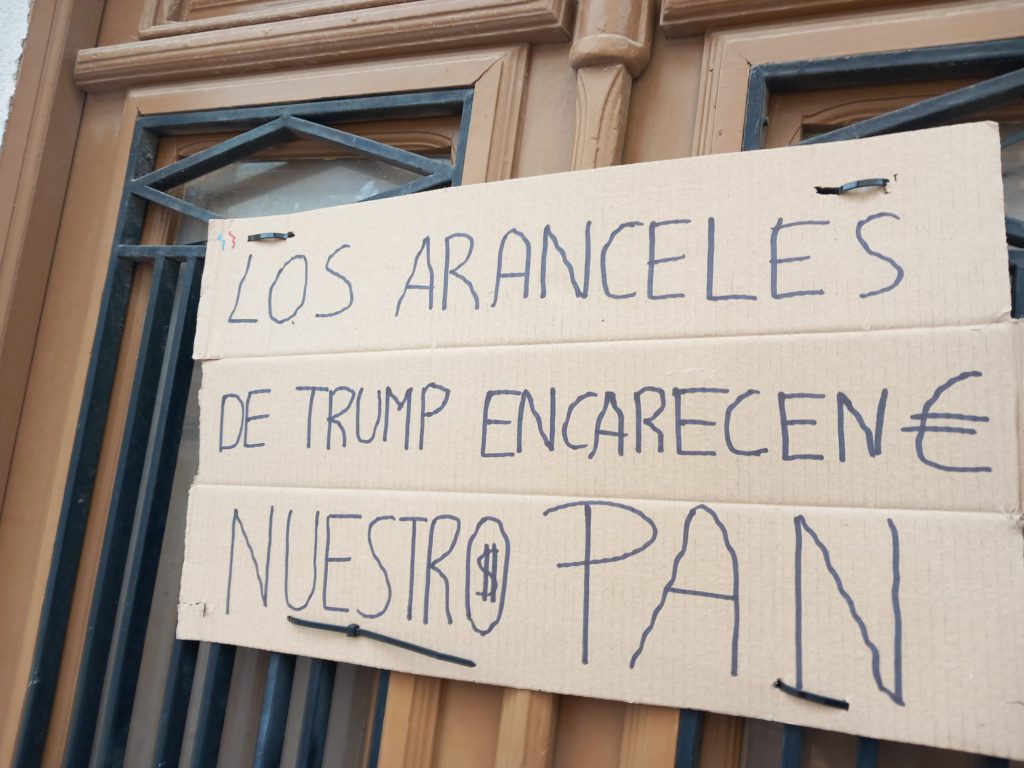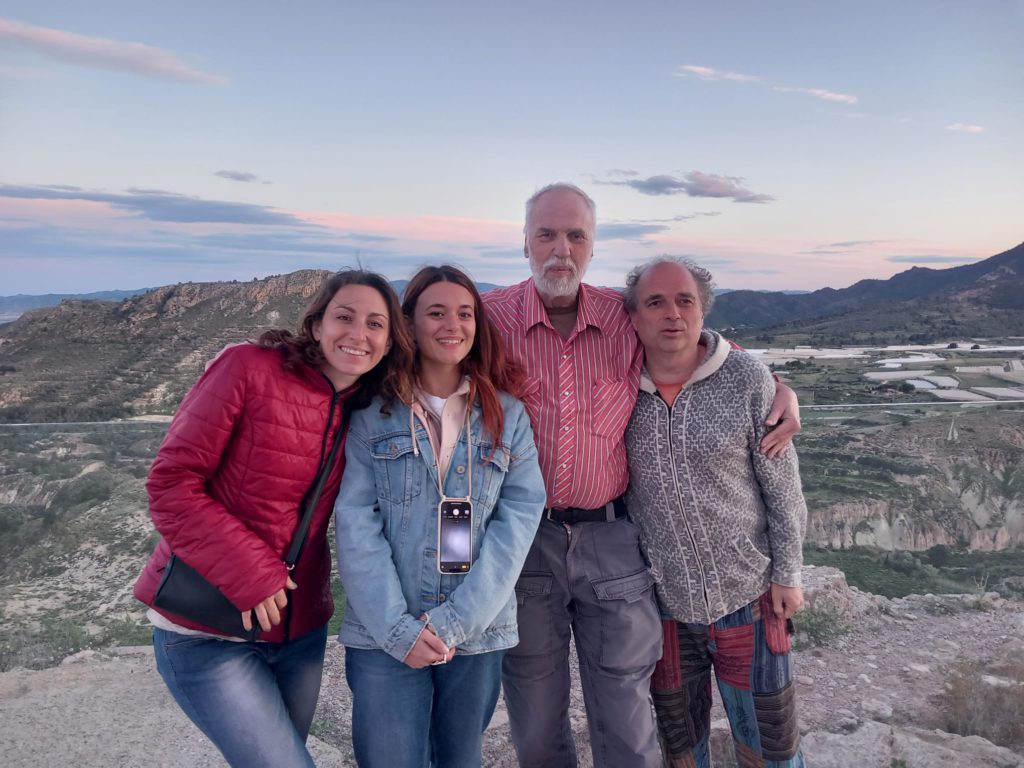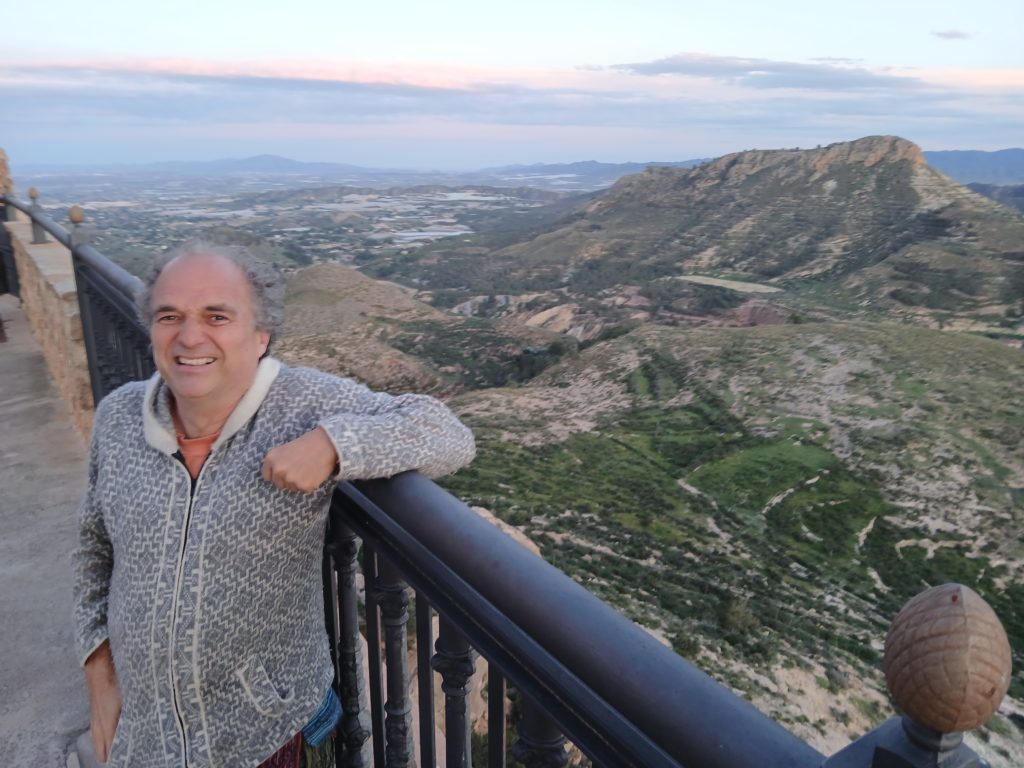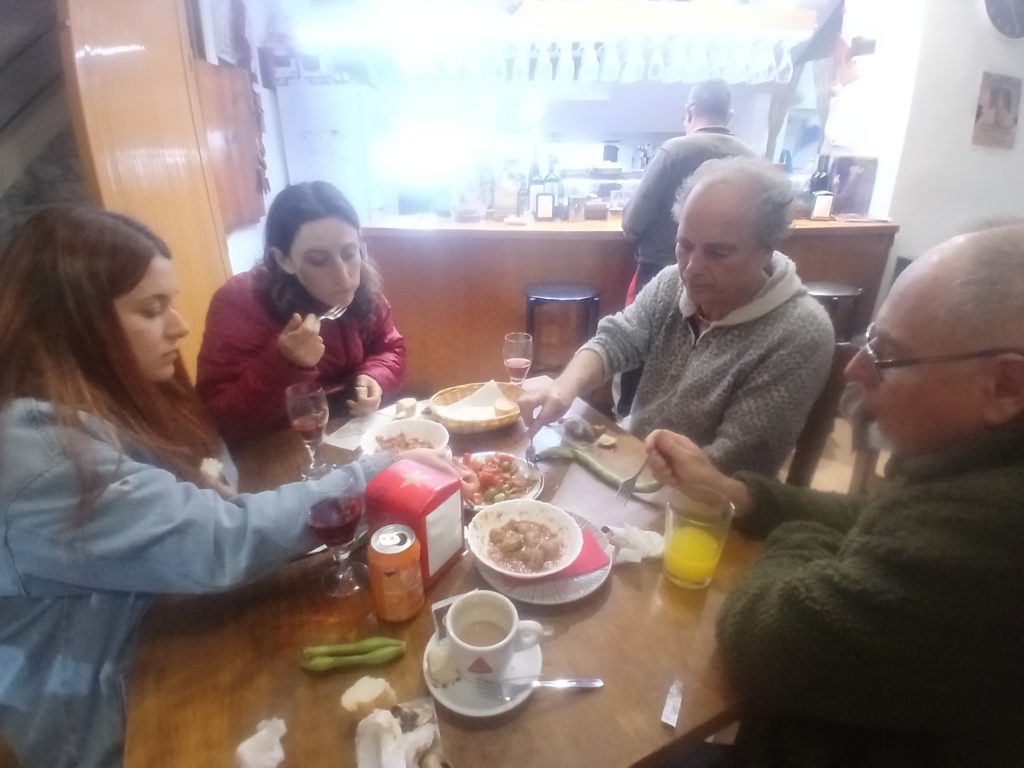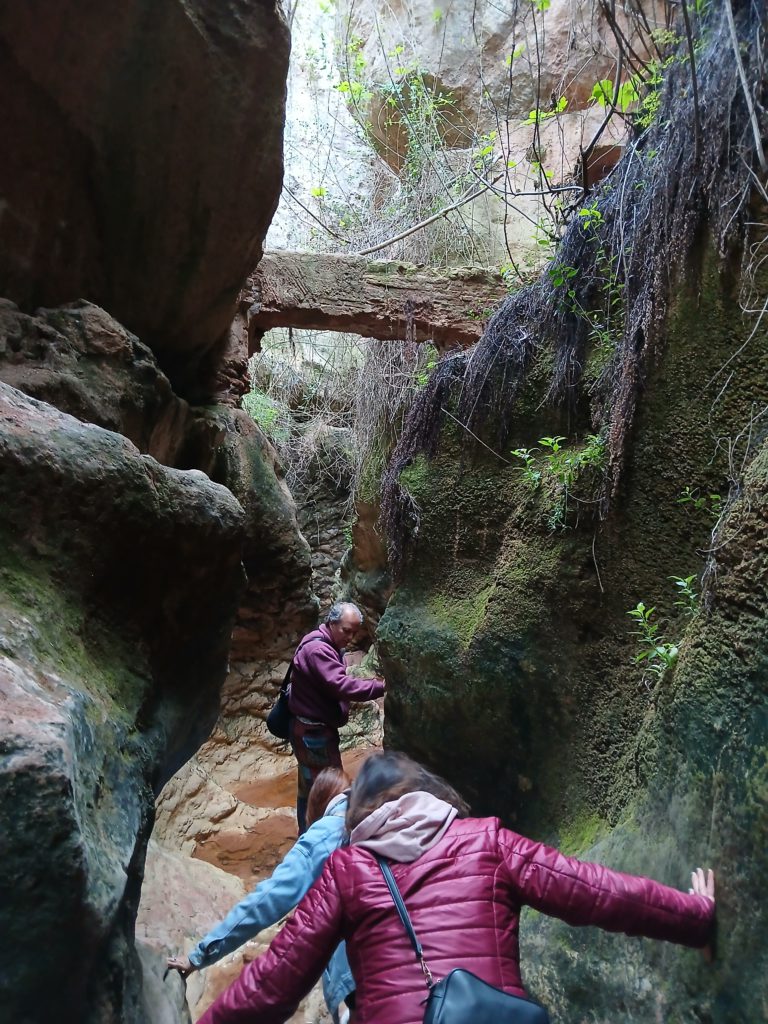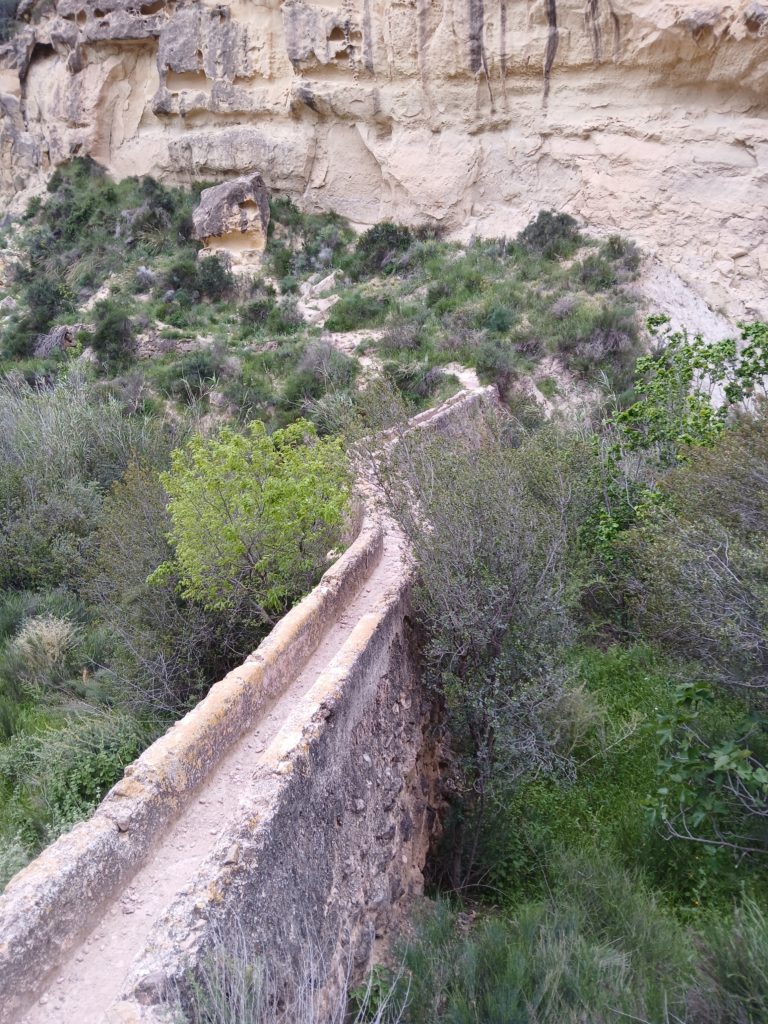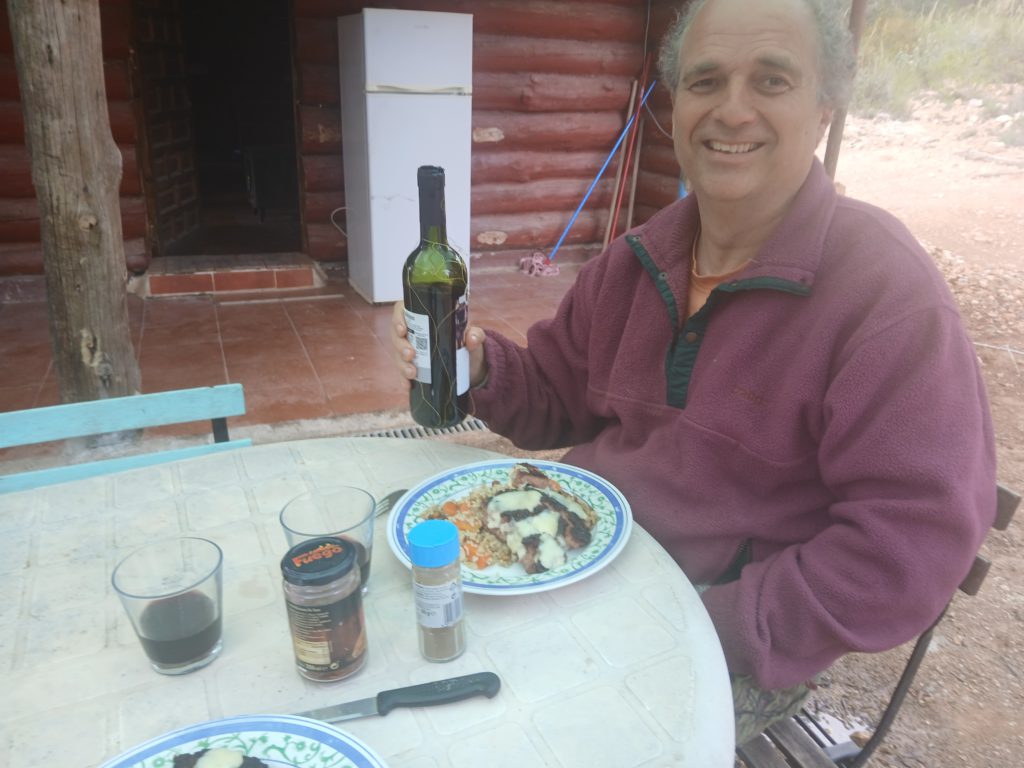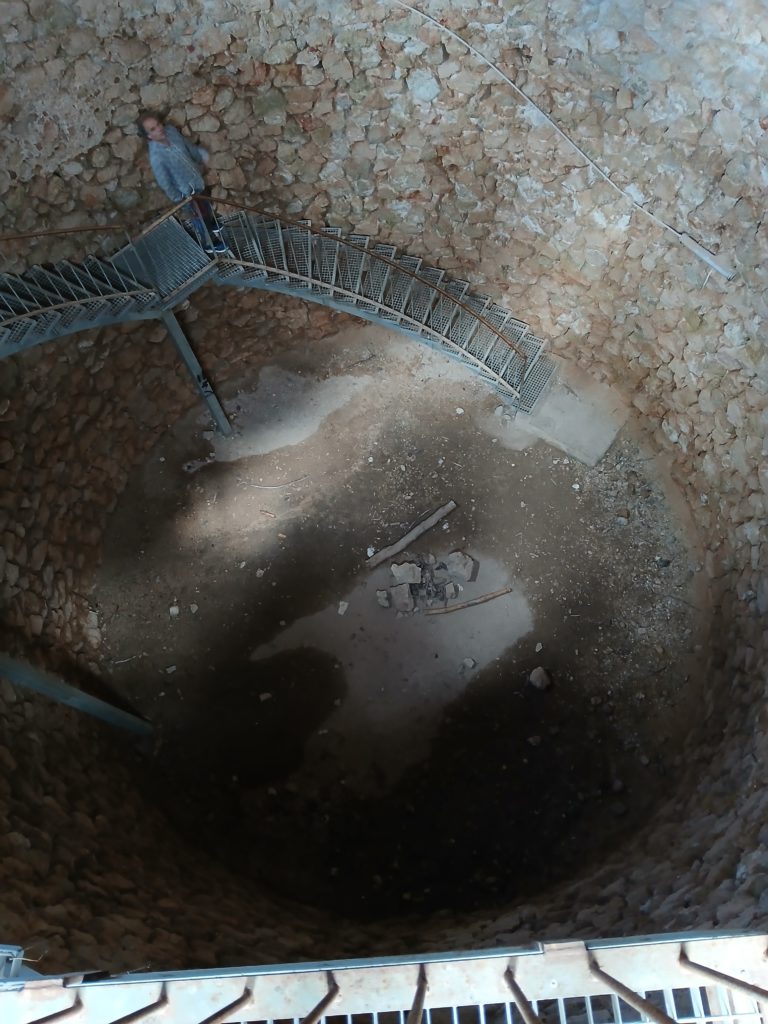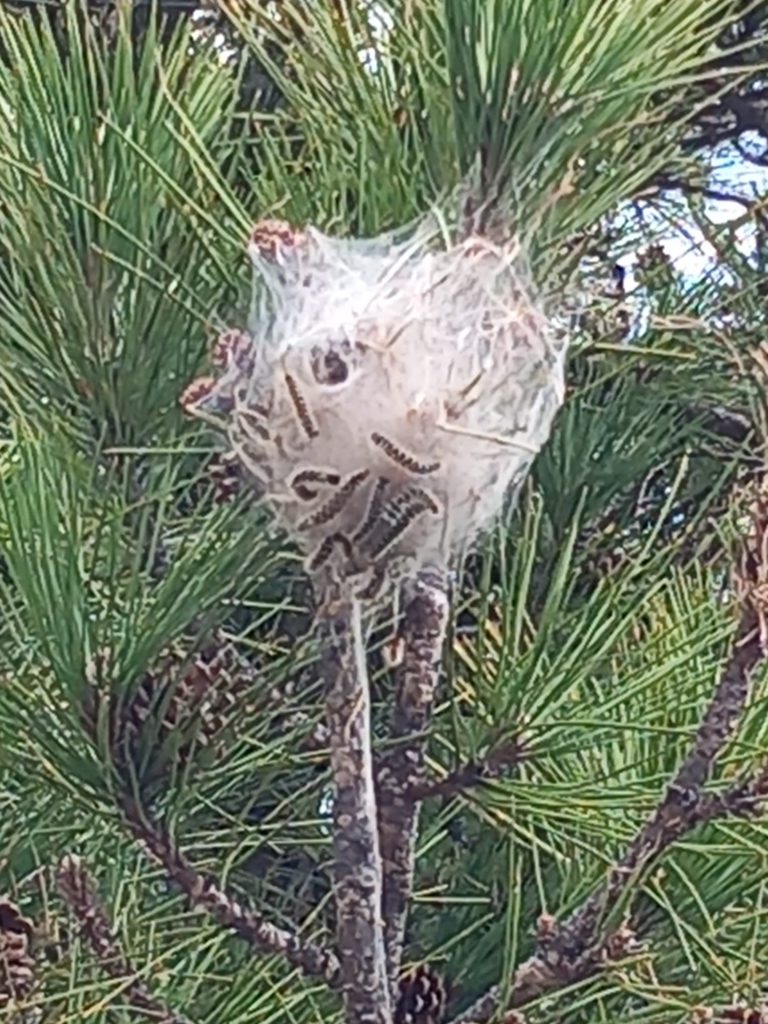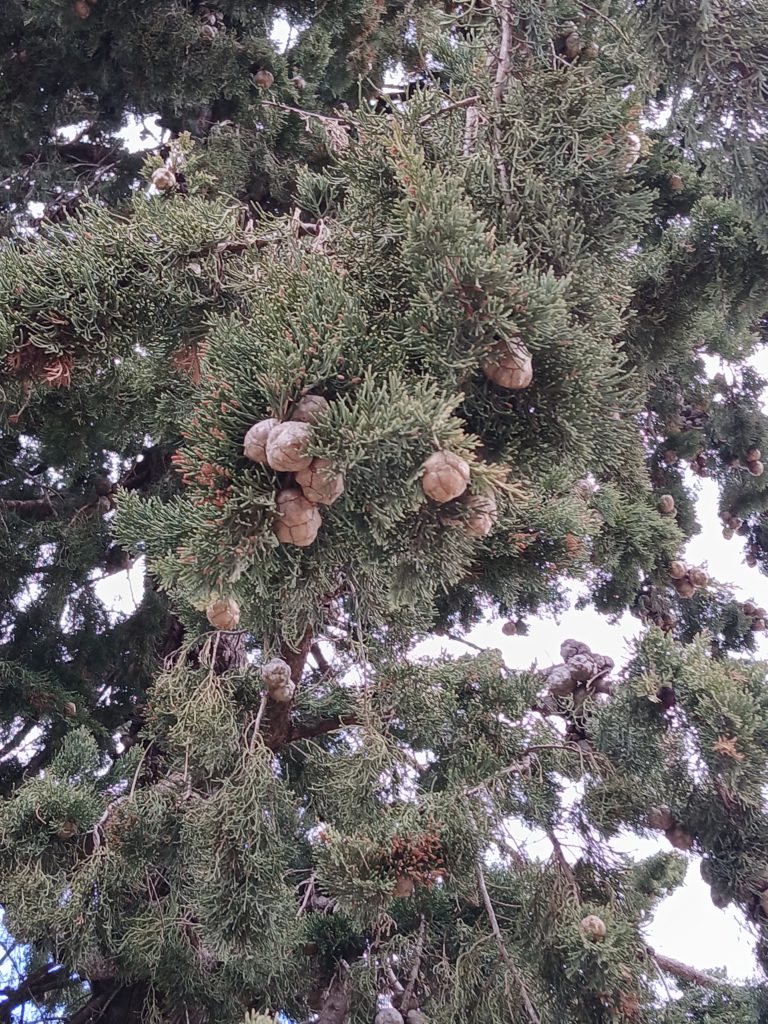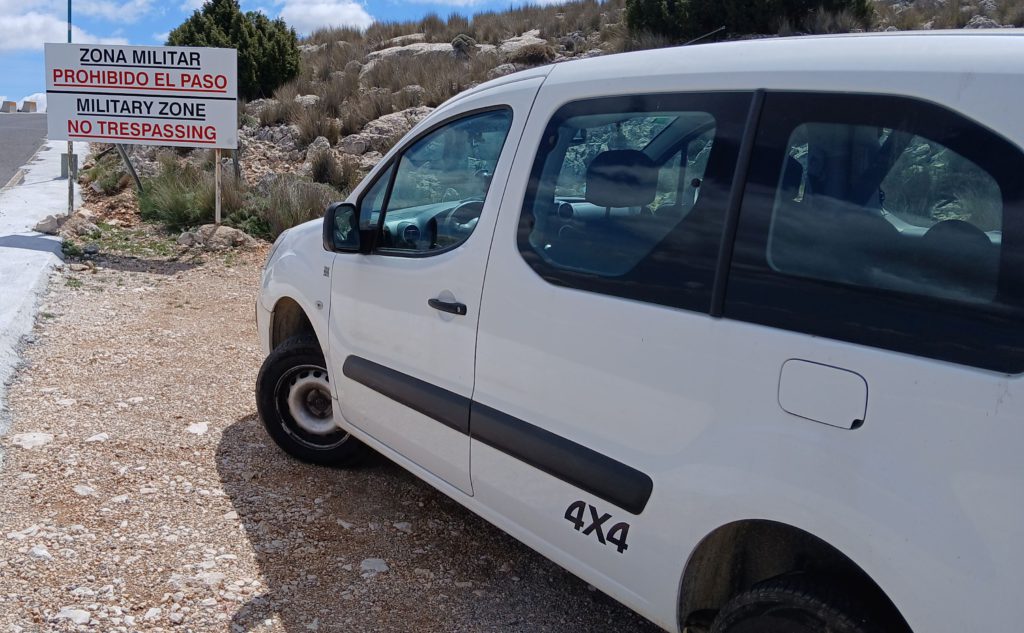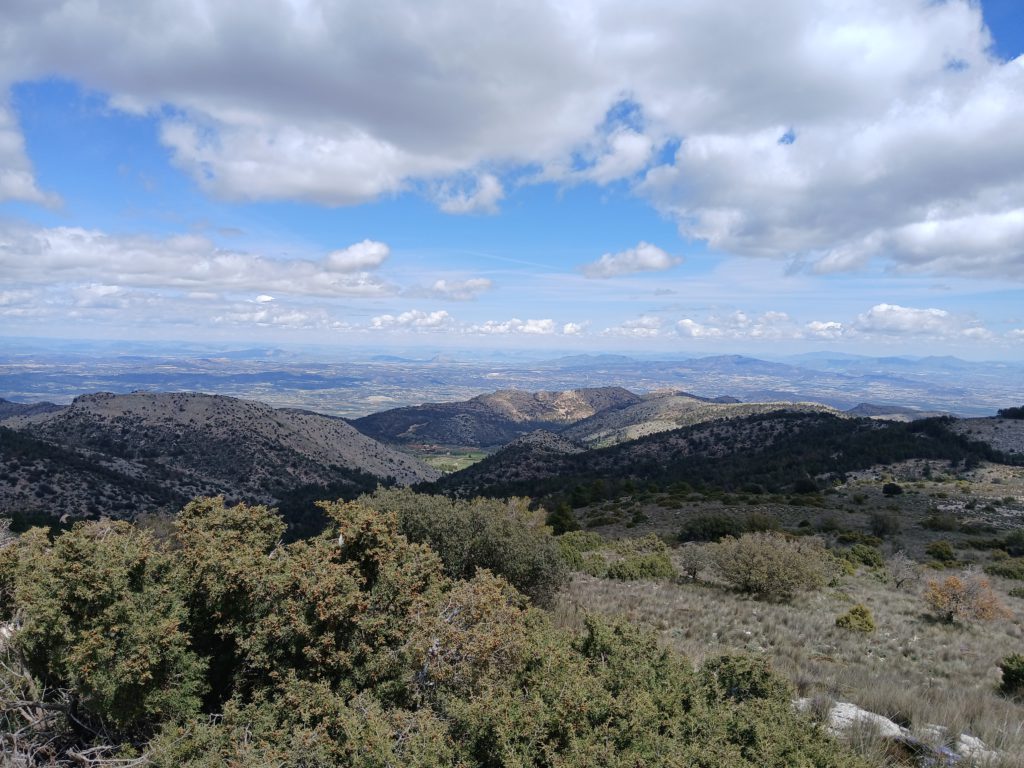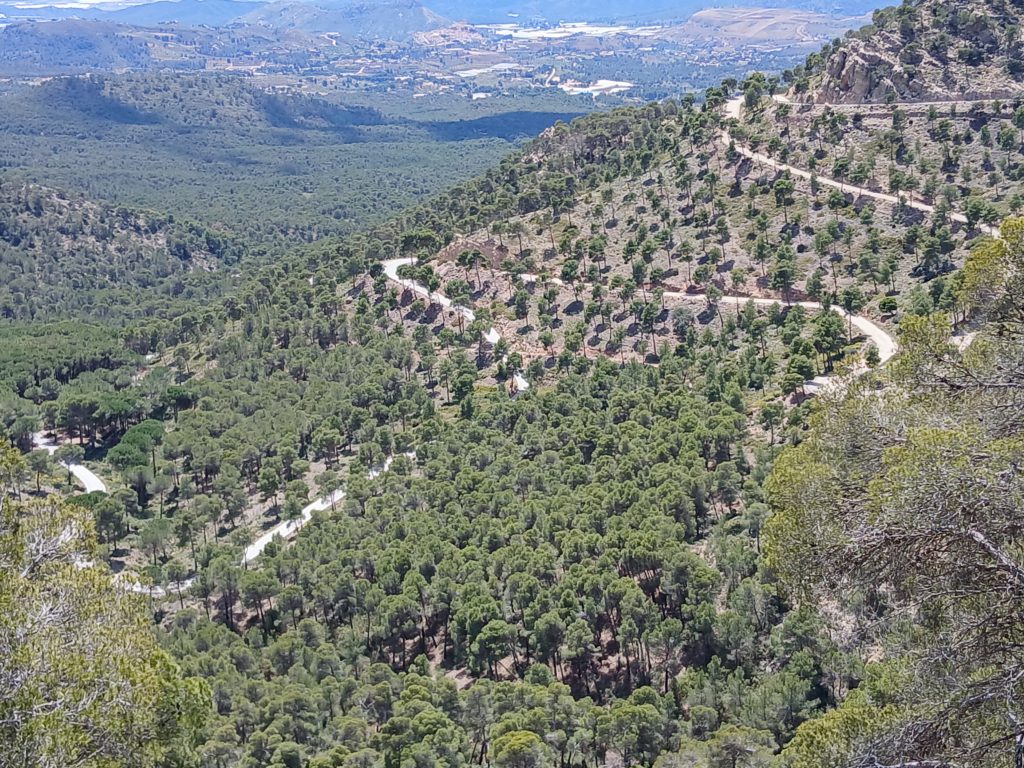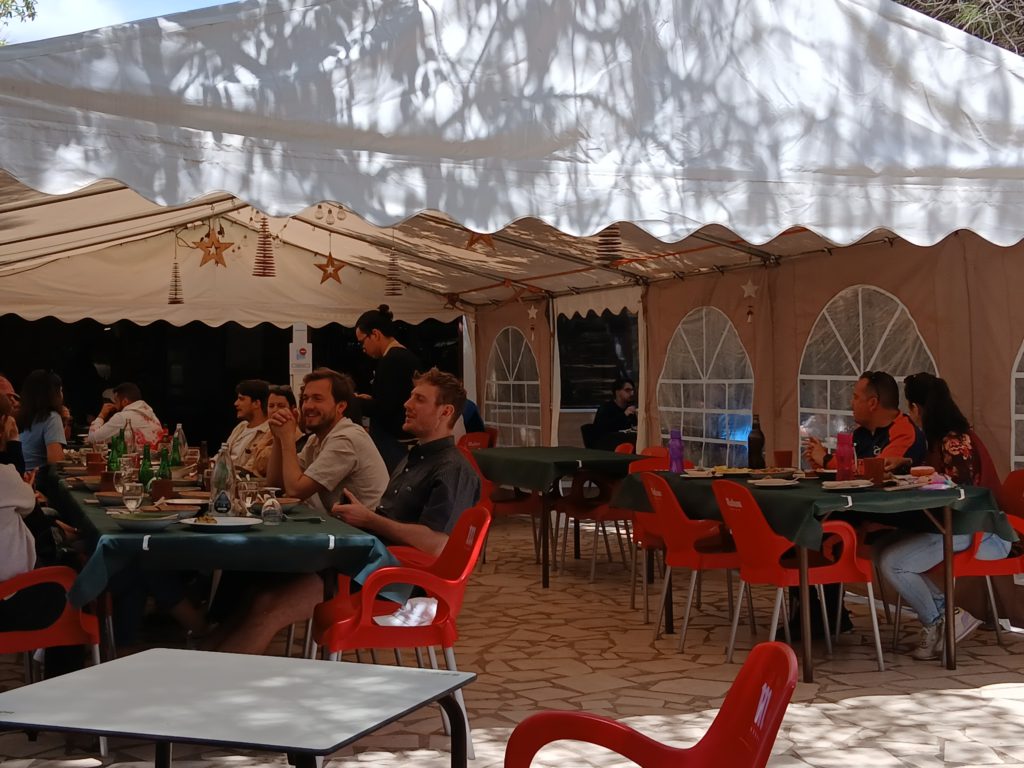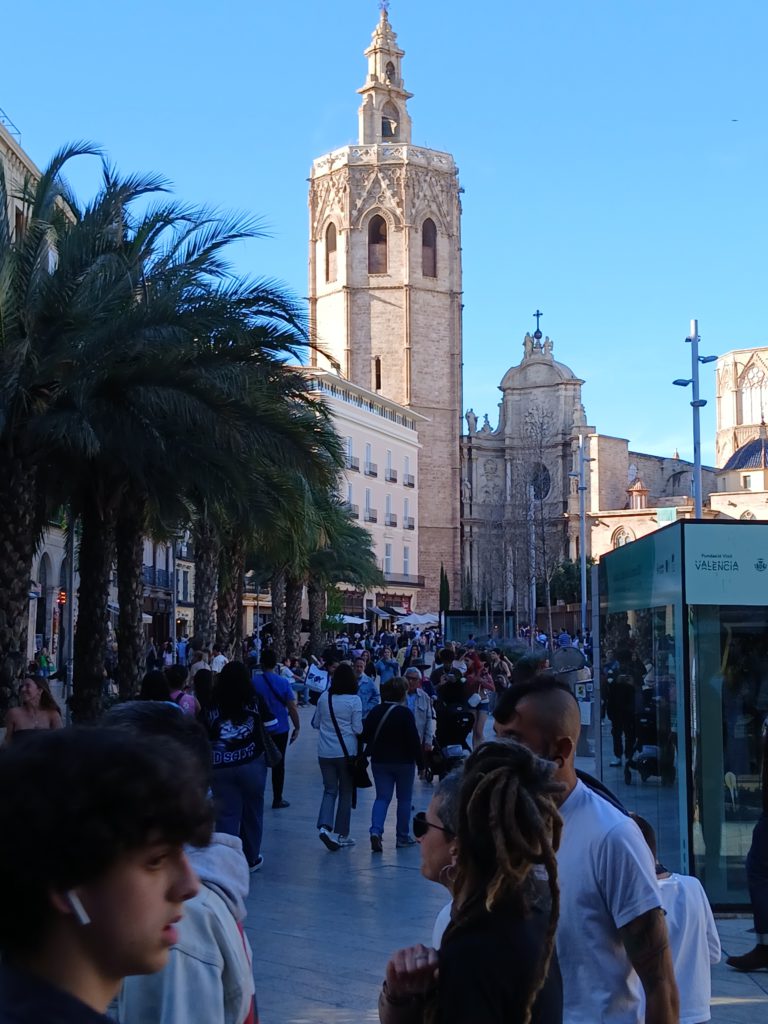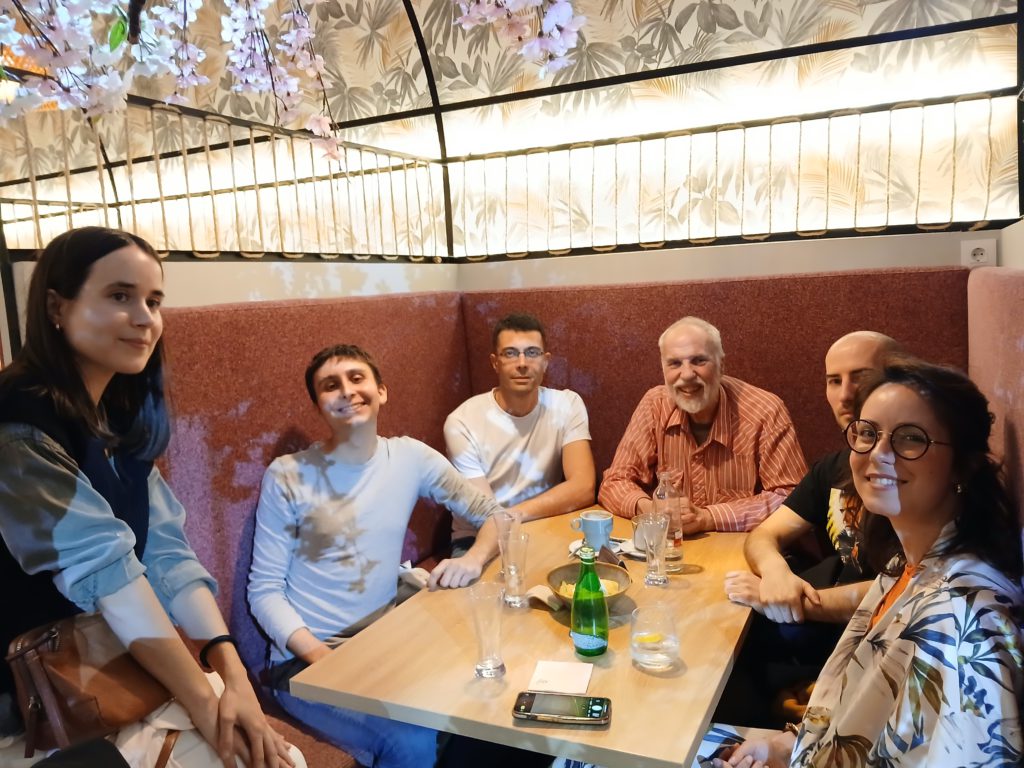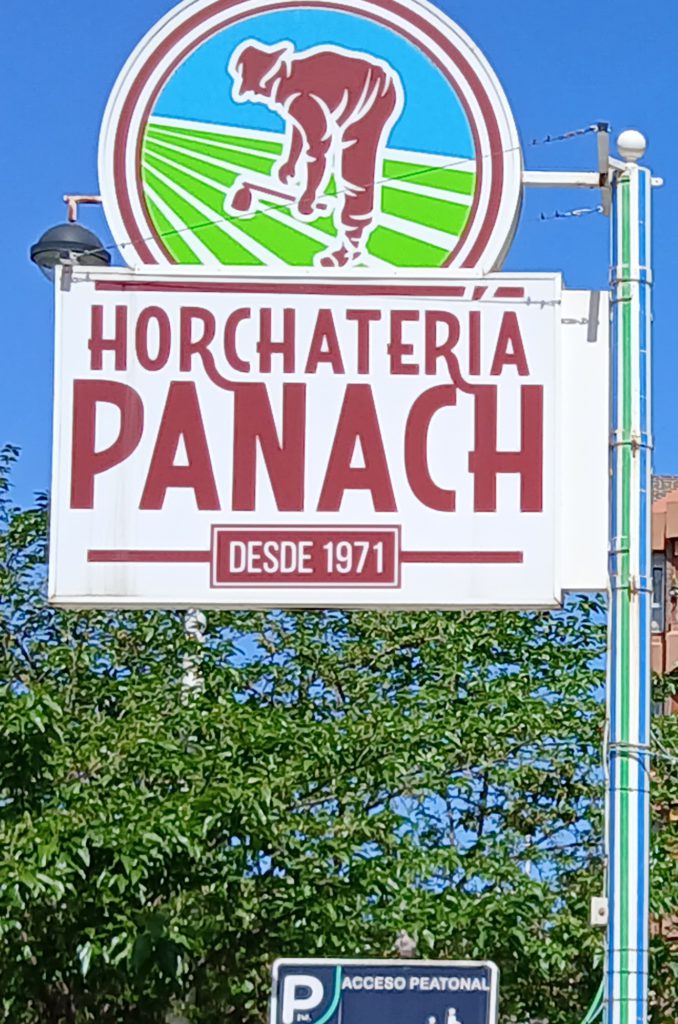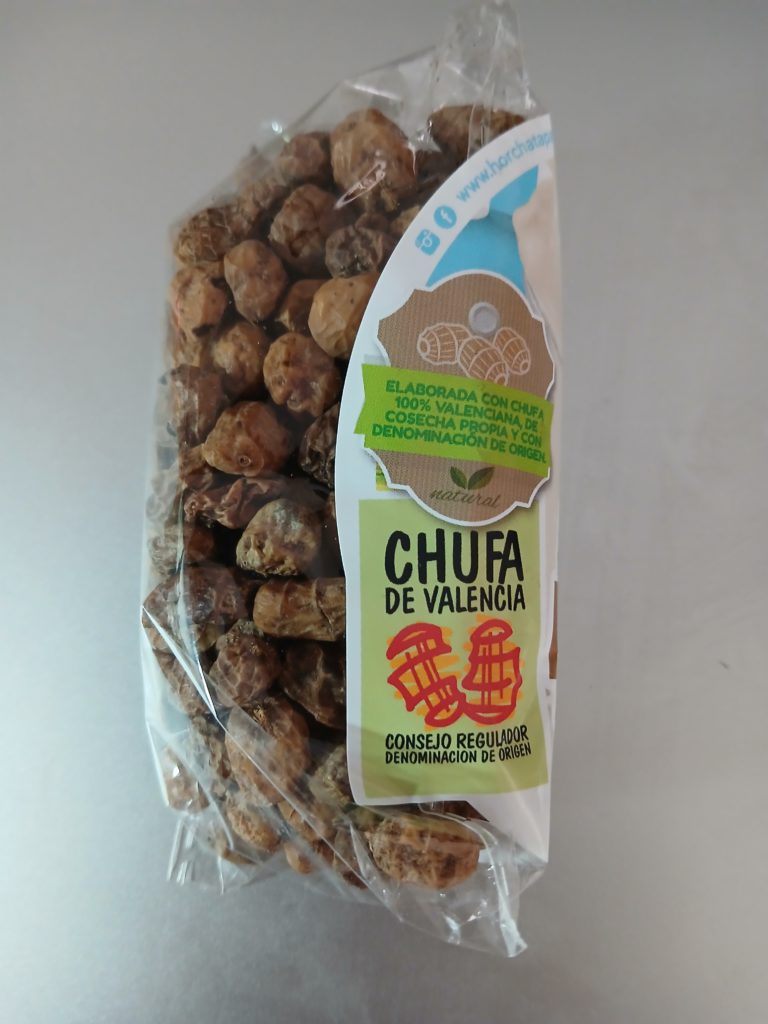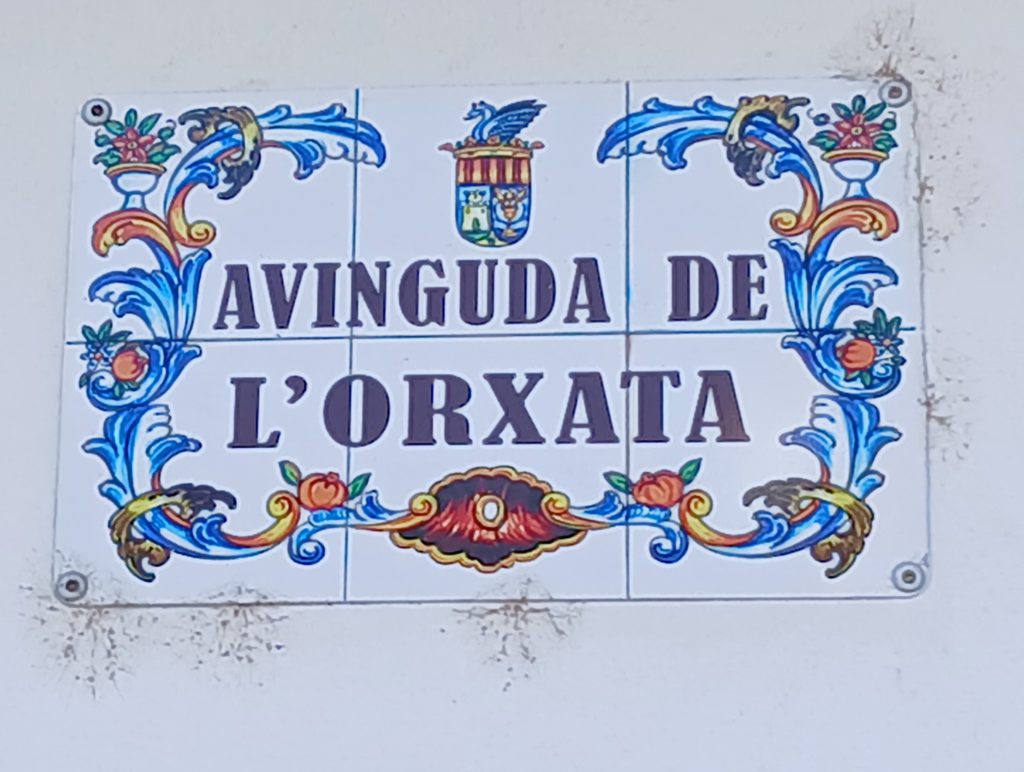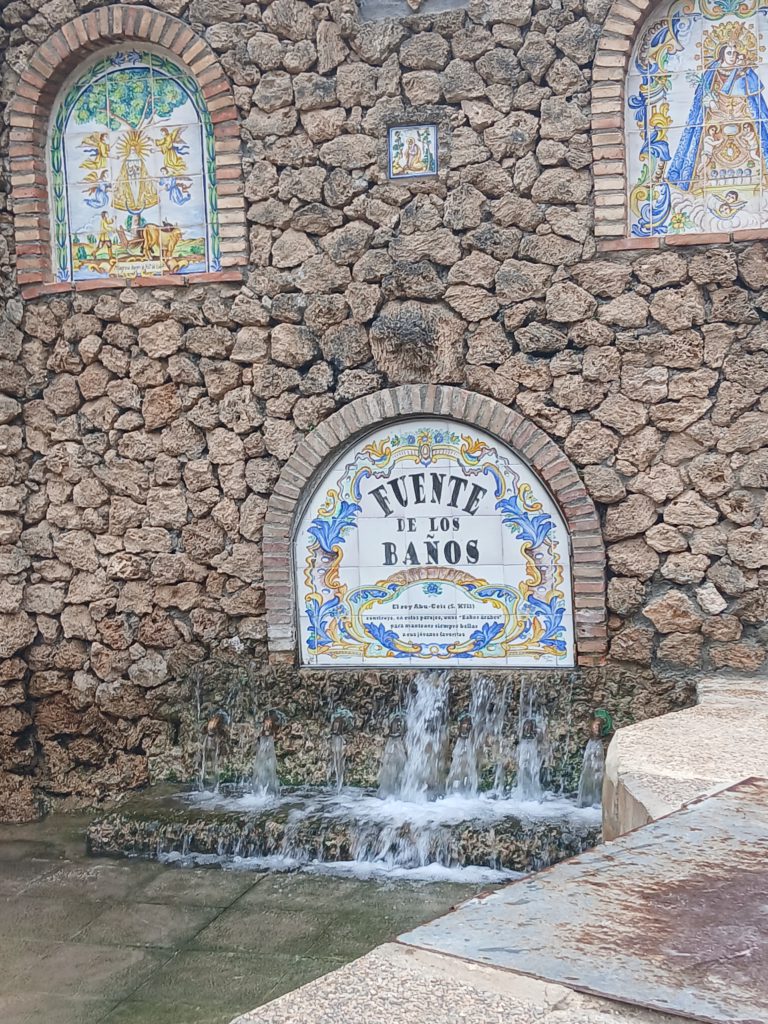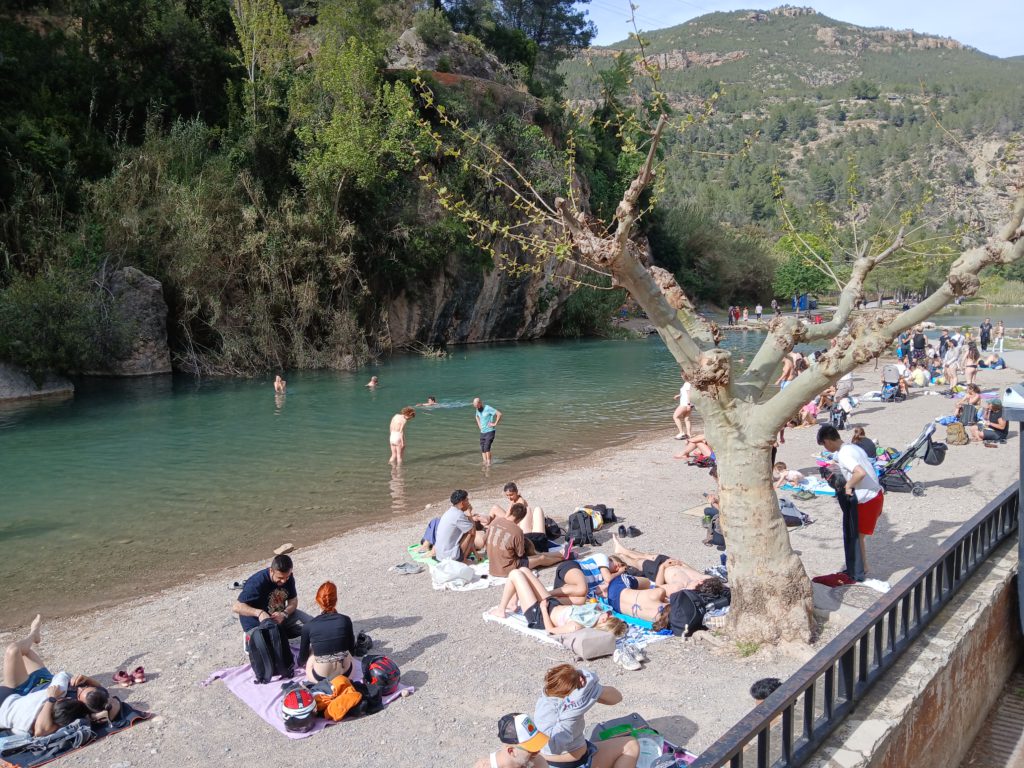[NOTE: Some displayed images are automatically cropped. Click or tap any photo (above the caption) to see it in full screen.
I already know the comfort limitations on Corsica Ferries from my first torturous voyage with them, so this time I stake out a table in the forward bar directly in front of the glass wall, buy one coffee, and refuse all further service for the rest of the trip.
As I occupy my bar chair with the panoramic view, a little girl of about 3 spends a long time staring through the window during the voyage, often ignoring her parents sitting at a nearby table. I can see the roaming instinct in her. Reminds me of myself in the New York subways. From my earliest years, I’ve always stood at the front of the train as it speeds through tunnels and elevated lines, staring out the window adjacent to the invisible motorman two feet away in his steel cab. The only reason I don’t still do it is that modern subway trains no longer have a passenger-accessible front window. I rarely ever sat in a seat.

The transit to Sardinia is only 5 hours, but open sea voyages are pretty boring and time crawls along. Had I been able to get passage on the Ichnusa Line, it would only have been 30 minutes. No wonder they’re always booked solid. During the voyage, I ask one of the crew why there’s only one trip between Corsica and Sardinia. He explains that it’s a way of serving both islands from their main port of Toulon, France. Their regular Corsica route is Toulon to Bastia, but occasionally they make the longer run to Porto Vecchio, then on to Sardinia to accommodate traffic from there back to Toulon. At 7:30 PM we dock at Porto Torres on the northwest coast of Sardinia, having crossed the sea border of France to Italy.



I’ve booked a room at a rural lodge, about two hours from the port. I’ve carefully written route instructions since I don’t have a phone. I head in the proper direction and try to buy a road map of Sardinia. After all, I used printed maps all my life until mobile route finding just became so much easier. But, with everyone using Google Maps or Waze (also owned by Google), gas stations just don’t have any demand for paper maps. To buy one in person these days, you have to go to a large bookstore. A kindly motorist overhears my attempt to tell a gas station attendant I want a map and, in English, asks me where I’m going. When I tell him the name of the larger town near my destination, Nuoro, he says he’s going there and I can follow him. I hop back in the car and chase him down the highway at high speed for about an hour, He repeatedly blows through signs saying “Electronic speed control” and associated overhead cameras. When we get to where I think our routes diverge, I thank him for the help and ask about the speed controls. He says to ignore them. We’ve stopped in the traffic lane so I can’t ask for more details: Are they non-functional or not monitored? Is it only in Sardinia or throughout Italy? My samaritan is gone and I don’t get that important in-the-know info.
I continue on what I think are my pre-written directions. After my high speed chase, I’m very low on fuel so I’m looking for the first service station I can find. I take the exit my scribbles indicate. It’s a complex interchange and I pick a wrong ramp. Suddenly, I find myself forced onto the highway back the way I came. Since the prior exit is way down the road, this will add 15 miles to my route. Will my fuel hold out? I’m not sure. To make things worse, it’s now dark, so any visual cues are sharply reduced. As I head away from my goal, I’m looking for a miracle solution. European limited access highways do not have barrier breaks for emergency vehicles. The center guard rail is uninterrupted, so an illegal U-turn is impossible.
Suddenly, I spy a break in the right shoulder. Is it an exit road? I brake sharply and see that it’s just a crude track branching off the pavement, but any port in a storm. It looks barely driveable, so I take it. Clearly unused, the vegetation is slapping the Berlingo as I inch along the ruts. Shortly, I come to a gated yard. Is this just a dead end driveway? But, no, an even smaller track spurs to the left. I take that and negotiate what appears to just be a cow path. After a while, I come to a junction and keep to the left because I need to get to the other side of the expressway. Luck is with me, the farm road goes through a narrow underpass, not much more than a big culvert, and a major obstacle is cleared. I’m on the north side of the expressway. I’m now sure this road goes somewhere, but where?
A little farther along, I see fast moving headlights — a paved road. I’m going to make it. The track eventually gets to the road, or almost to it. I cross a patch of grass and get onto the local 2-lane highway. It runs parallel to the expressway, so I’m sure it will take me back to where I need to go. I proceed back to where I made my wrong turn, but without a map or phone, I’m in trouble. In desperation, I stop at a local bar and try to ask if I can use their wifi on my laptop to get new directions onto paper. The two young guys are very nice and cooperate fully, despite our language barrier. They also try to direct me to the nearest gas station but I can see I’ll have trouble following their instructions. As I close the laptop and thank them profusely and try to buy something to return the favor, they insist on giving me a going away present, a beer or whatever I want. I’m floored.
I head off into the night, trying to find the gas station. I’m not successful, so I flag down a cop car and ask for directions again. I also can’t follow their instructions but I do finally stumble on a station. As with many automated stations, it won’t accept US credit cards. I imagine they refuse to pay the high merchant fees. I give up and feed some of my Euro cash into the machine and thus end that crisis.-
Now I still have to find my lodging. The first step is to get to the nearby town, Oliena. Directional signs seem to be influenced by the chambers of commerce. In a number of instances, they direct drivers not to the shortest route but detour you through the business district of the village you’re in. At one point, a sign points right for Oliena, A mile up the road, a second sign points back the way I just came. After a couple of passes, I figure out the first sign is simply wrong.
Once in Oliena, my written instructions are again of help. I find the route out of town that I need. I even have the distance to the driveway, but when I get there it’s completely unmarked.

I turn in but I’m on a deserted estate, There are two buildings but no lights or activity. I cruise around the property’s various tracks, but there’s nothing. I go out to the highway and remeasure the distance. By that standard, I appear to be in the right place. It’s now approaching midnight, so I give up and cram my 6 foot body in the 5 foot back seat in front of the deserted building. Very frustrating, and all for lack of a phone.

Friday morning dawns and I unfold myself from the seat. In order to look at a map and reorient myself, I drive into the town of Nuoro, locate a coffee shop with wifi, and haul out the laptop as I eat breakfast. Scrutinizing the map and satellite photos, I figure out that I stopped just a little short of my goal last night.
On my way back, I cross a modern bridge and notice that on my right is an abandoned, much older, arched version. Parking the car, I struggle through underbrush to the old bridge. On the one hand it looks like ancient construction, but since the approach shows remnants of paving, I think it was used until fairly recently, maybe 50 years ago.



The contrast between old and new bridges is interesting and in the thicket I also find a stone commemorating the death of two young people almost 50 years ago, perhaps in a traffic accident at that spot.

Returning to the car, I drive further down the highway and a short distance past last night’s driveway, find a commercial landmark I was looking for. Across the road is another unmarked, but wider, driveway. Proceeding up there, after a few junctions, I find my lodging. I slept only 1,500 feet away from my paid room, but on the neighbor’s property! I’m finally arriving, but just before checkout time.
I explain to Ivan, the owner, what delayed me. He gives me a quick tour and I like it enough to take a break there. I say I’d like three nights and, since there were empty rooms last night, would he credit what I paid toward the new charges. To my dismay, he says “No.” Had it been my lodging, I would have offered that courtesy without even being asked. But, it was not his fault that I was a no show, so I grudgingly accept it.
The lodge is so rustic, it isn’t even marked with a name. It’s what in Italy is called an agriturismo — guest facilities on a farm. It isn’t a full farming operation, but Ivan has pigs, chickens, and a large garden. There’s a lot to like, but it’s definitely a mixed bag. The rooms, including the one I had paid for and didn’t use, are in the attic and only about 5 feet high, sloping to less than 4 feet at the rear, where there’s a small window to the outside. As a result, they’re only suitable for sleeping.

The steep, ladder-like stairs are very hazardous, with zero protection from a possibly fatal fall from the narrow attic walkway. Completely unacceptable. There is an 8-bed dorm room on the first floor — no windows, one dim light bulb, and the only ventilation from a floor fan in the single, open doorway. A bed there is half the price of the unusable bedroom, so I opt for that.
Why, you ask, am I eager to stay in these miserable accommodations? Because everything else is just great. The lodge is adjacent to a beautiful shady garden — the key word here being “shady” since the sky is absolutely cloudless and the air is hot. There’s a large outdoor, shaded patio, an open air couch lounge under giant shade trees, a shaded hammock, two well equipped kitchens (both shaded), and even a basket of eggs for guest use. Just to the south is a broad view of impressive, bare rock mountains, And, there’s a hot tub-size swimming pool! It’s a perfect place to spend some time working.


There are interesting people to talk to, including two German cave divers, Unluckily, they spend the entire day working on their equipment, arranging for a motorboat, and driving across the island to the west coast. As evening approaches, they return, crestfallen — the boat motor, which they had rented from Ivan, wouldn’t start [sigh].
Taking full advantage of the kitchen, I cook myself a great dinner. Ivan has been chiding me for various trivial power “wasting” activities like failing to turn off the 12-watt dorm light bulb when I leave the room and leaving my laptop plugged in to charge while I’m not using it. Late in the evening, I retire to my bunk bed in the dorm. It has much of the ambience of a Louisiana prison cell. As I lie there, my dissatisfaction with the conditions and the owner’s refusal to credit my original payment increases and my desire to spend two more nights here ebbs away. I have a last minute invitation from a Servas host in Sassari, which I initially turned down because it would require driving back almost to where I arrived on Sardinia. Now, I’m reconsidering, so I send a message asking if they’re still interested.
Morning arrives. While waiting for a response, I make a satisfying breakfast and again enjoy all the lodge’s pleasant amenities. In the early afternoon, the Sassari host replies that I’m very welcome there, so I pack up, pay my one night bill, and start the two hour drive back west and north. Now that I’m retracing my route, the lack of GPS isn’t a problem, at least not until I leave the highway and again have to follow the directions to the host’s residence I’ve written out in advance.
After 30 minutes of confusion, I find my destination and go upstairs to a gratifyingly warm welcome. Mauro and Maria live on the 5th floor roof of their building. They have, essentially, two penthouse apartments at opposite ends of the roof, each with a generous patio and expansive view.


Their immediate neighbor is the elaborate Villa Mimosa, dating from 1911 and surrounded by its own park. The open roof space between the apartments is common to the entire building but, to a substantial extent, they have it to themselves. The outdoor area is lush with their greenery. You would be hard put to find a nicer urban residential setting.
Mauro and Maria do not speak any English, and I, of course, do not speak Italian or Sardinian. It’s quickly apparent that our verbal communication is going to be via Google Translate, handing phones back and forth. Even with this limitation, plus that I don’t currently have a working phone, the language barrier is only a modest limitation. They set me up in the secondary apartment, which is fully equipped and very comfortable.
Over on their side of the roof, we have a nice dinner and start having effective conversations via Translate. Mauro offers me the use of a phone that apparently belongs to his brother, but to make it useful I would have to do a factory reset and put in my own accounts and apps, so I just use it in the apartment for translation and mapping.
As darkness descends, Mauro offers to take me out on a walking tour of the town. Sardinia, I’m finding out has a long and varied history. It has been conquered, dominated, or influenced by many cultures and powers over the millenia. This is due to its central location in the Mediterranean Sea, making it important in the marine trade that has dominated that area throughout history and prehistory. Sardinia has also been coveted for its rich mineral resources. It has been an important source of obsidian, gold, silver, lead, copper, and zinc, salt, iron, and coal.
Even a quick summary of the island’s history would be too long here, but its importance is illustrated by a list of various forces that have played a role: Prehistoric cultures, Nuragic culture, Phoenicians, Romans, Vandals, Goths, Byzantines, Iberians, Judicates, Pisans, Genoese, Spanish, House of Savoy, and Italians. Everybody wanted a foothold in Sardinia.
Mauro’s about 3 years younger than me and in good physical condition. Our long walk loops us past dozens of sidewalk bars and cafes, all filled with boisterous young people out for Saturday evening socializing. Soaking up the enthusiastic crowd, you wouldn’t know Italy has a serious aging crisis. They have the oldest population in Europe, and second oldest in the world! None of this is evident tonight as we reach the Piazza d’Italia, its 2.5 acre extent equally packed with nightlife.
Dominating the center is a large statue of Vittorio Emanuele II, one of the dominant Savoys. In 1849, he became the last king of the modest island of Sardinia. Was he the end of the family line? No way. To the contrary, he wangled one of the biggest job promotions in history. 12 years later, he became king of all Italy, and his family retained that cushy job for the next 85 years. It wasn’t until 1946, after Italy made a slight error of judgment by losing World War II, that the monarchy ended by popular vote.
After the piazza, we move into Sassari’s old town, by contrast very quiet this evening. Spain ruled Sardinia for 400 years and its architectural influence remains strong. As we walk through the nearly deserted, narrow streets. Mauro points out the Spanish building designs and various historical relics that pepper the neighborhood. Keep in mind that our extensive conversation is almost all happening on the screen of his phone. Our long walking tour ends back at the house and I’m ready to sleep.
I’m finding an interesting new aspect of the Italian language. As I pronounce Italian place names, I’m being corrected by the people I’m talking to. Unlike in Spanish or Portuguese, most Italian words seem to have the emphasis on the first syllable. Sassari is SAH-sahri. As I think about it, this trait may be what is spoofed in stereotype Italian accents, a la Chico Marx, i.e. before doing comic ethnic impressions became politically incorrect. I have to say, it may be more respectful to eschew that sort of humor, but the breadth of comedy is definitely far more constricted these days when jokes about almost any group (except hillbillies) can ruin a career.
Sunday morning, Mauro invites me to accompany him to the seaside town of Alghero (AL-gayro). Both of his sons own tourist apartments there and since they don’t live in Sardinia, Mauro handles the rentals for them. My understanding is we’re going just to welcome a family of 3 Americans arriving today. I’ve decided to buy a new interim phone, so we stop first at an electronics chain store. One of the salespeople speaks English, and I ask him for an inexpensive phone with the Android operating system. He suggests a Chinese brand that costs only about $100 and I buy it.
Mauro and I continue to Alghero, park the car, and walk about 10 minutes to the apartment which is just steps from a busy tourist waterfront promenade. I immediately notice the street signs use the Catalan word “Carrer” instead of the Italian “Strada”. There’s 200 miles of open water between us and Catalonia, in Spain, so I ask Mauro about it. He says Alghero has persisted as a Catalonian enclave since invaders from Aragon, Spain arrived in 1372. The 400 year period of Spanish rule of the island ended over 300 years ago, yet many town residents still speak Algherese, a variant of Catalan.
I’m expecting a quick room makeup and guest greet. I’m wrong. The apartment is in disarray and looks as if no one has stayed there for quite a while. Mauro has a substantial cleaning job ahead of him. I offer to help but he gives me a firm “No” and suggests I go out and explore the town.


I proceed to do this, walking the wide seaside, pedestrian mall. There’s a lot of activity and the one-time fortification is lined with outdoor restaurants, gift shops, and kiosks. Every few hundred feet there is a life size reconstruction of a catapult, trebuchet, or other defensive weapon of the past pointed out to sea. It would be nice to take a swim but the sun is hot, the beach is far away, and by midday there’s very little shade. Instead, I go into cockroach mode, scurrying through sunny stretches between shady resting spots. Back at the apartment, I have no way to get Mauro’s attention until he passes by a window, so I sit in a narrow bit of shade in the little piazza outside. I must look pitiful, because a waitress from the adjacent restaurant taking a smoke break asks me if I’m ok. Even though I’m not in any distress, it’s a really kind gesture of concern. After a few minutes, I get Mauro’s attention and he buzzes me in. He’s still cleaning and still refusing to let me help. I sit in a corner starting the long process of making my new phone usable.
The guests are flying in to the regional airport, renting a car, driving here, and finding a place to park outside the pedestrian zone where we’re located. As a result, they won’t arrive until about 8:30 PM and we can’t head for home until they do. Since they’re American, one thing I can do is relieve Mauro of the difficulty of communicating with them. I start trading text messages to get their status and help them home in on us. When they finally get to the apartment, Mauro and I can walk back to the car and head back to Sassari.
On the way home, I point out that spending the entire day driving and preparing for one night of guests can’t possibly be cost effective. He responds that his two sons are creative types, painter and filmmaker, and do not earn much money. Indeed, one son recently earned a prestigious award for a film he created. He does this out of love for them. I get it, but I’m very relieved that both of my kids are financially stable.
Once home, I start using my new phone. It doesn’t take me long to find out that although Google Maps works as expected, Google Timeline displays a message saying it’s not supported. A little research informs me that the phone does not have the Android operating system, but rather Android Go. I’ve never heard of this, but it’s a crippled version installed on low end phones which does not support all Android apps. Since Timeline is an absolutely critical part of my travel recordkeeping, this phone is clearly unsuitable. I do a factory reset, repack the phone, and resolve to go back to the store in the morning and swap it out for something more expensive and powerful. Except for the wasted time and the extra money, this should be trivial.
Back on my laptop, I search for a way to travel from Sardinia to the other major Italian island, Sicily, the infected big toe of Italy’s well known “boot” shape. To my surprise, there is only one ferry a week, on Saturday. Since today is Sunday, I make a reservation and then plan out my remaining time in Sardinia. The ferry leaves from the Sardinian capital, Cagliari {KAHL-yari) at the southern end of the island, over 2 hours from Sassari. I have two invitations from hosts in Cagliari, each for specific days, so I decide to drive directly there tomorrow.
Monday morning after breakfast, Mauro takes me out on another excursion by foot to the Sanna Museum. Although not massive, it has a diverse collection of artifacts from the various periods of Sardinian history. I learn about the Bronze Age, Nuragic culture, a prehistoric civilization that persisted for about 1,600 years. They must have been under severe pressure as they filled Sardinia with at least 7,000 stone tower forts, called nuraghes. The museum has a selection of artifacts covering thousands of years of Sardinian habitation. Apparently, the island is a gold mine of archaeology. One big surprise is that elephants were native to many Mediterranean islands. They were able to migrate during the Pleistocene period when the current islands were accessible via land. As often happens to large animals stranded on islands, their size shrunk over the millenia and they became dwarf elephants. Sardinia is unique in that it yields the only evidence of a dwarf mammoth. Imagine a mammoth that betrays its name by being smaller than a modern cow.


As we near the house, right across the street, in the villa garden, Mauro points out an unusual tree he identifies as the “drunken stick”. Ceiba speciosa. It’s unusual shape is said to be due to it storing water in its bulbous trunk.


On returning home, I pack up, we say our goodbyes, and I leave for Cagliari. First, I stop at the electronics store for what I think will be a quick upgrade from the phone I purchased yesterday, but it’s not to be. I tell the same salesman that the phone he recommended is not suitable. He says once I’ve started up the phone, the warranty is in force and they cannot take it back. I say, I asked for Android but got Android Go. He says that’s still Android and there’s nothing he can do. I say you didn’t sell me what I asked for.
Remaining polite and cheerful, but insistent, I speak to the store’s floor manager. She concurs the phone is now mine and they won’t take it back, but I’m welcome to buy a more expensive one as well. I ask to speak to the store manager and am told he/she will not arrive for another 2 hours. I surprise her by saying I’ll wait and start pacing back and forth along the cell phone sales counter, quietly lurking behind customers shopping for hardware but careful not to display any anger or aggression..
This behavior makes the staff very uncomfortable and I see various consultations going on. In about an hour, when I make some innocent conversation with a pair of shoppers, they’ve had enough. I’m called over and told I’ll get a refund. They take the phone and hand me the 90 Euro price back in cash — no paperwork at all. I’m certainly not willing to spend more money now in that store for a better phone, so I leave and head southward on the highway.






